Painted Desert Visitor Center Temporary Closure and Relocation
In anticipation of a major construction project the Painted Desert Visitor Center on the north side of park will be closed starting 7/23/25. Visitor center operations will be located at the Painted Desert Inn, two miles past the entrance station.
| Title | Petrified Forest |
| Park Code | pefo |
| Description | Park Hours: 8am to 5pm, MST. Don't forget that Arizona does not observe Daylight Savings. Petrified Forest is best known for its Triassic fossils. It's like having two parks in one, an ecosystem over 200 million years old with plants and animals ... |
| Location | |
| Contact | |
| Activities |
|
| Entrance fees |
Entrance - Private Vehicle
$25.00
Admits one private, non-commercial vehicle (15-passenger capacity or less) and all occupants. Valid for 7 days.
Entrance - Per Person
$15.00
Admits one individual with no motor vehicle (bicyclist, hiker, pedestrian). Youth 15 and under are admitted free of charge. Valid for 7 days.
Entrance - Motorcycle
$20.00
Admits one or two passengers on a single private, non-commercial motorcycle. Valid for 7 days.
Commercial Entrance - Sedan
$25.00
$25 flat fee + $10 per person (Sedans, SUVs, Minivans)
If you are conducting an income generating tour of the park, you are subject to commercial tour fees. Fees for commercial vehicles are based on the capacity of the vehicle, not the number of passengers on board, and are valid for 7 days.
Commercial Entrance - Per Person
$10.00
$25 flat fee + $10 per person (Sedans, SUVs, Minivans)
If you are conducting an income generating tour of the park, you are subject to commercial tour fees. Fees for commercial vehicles are based on the capacity of the vehicle, not the number of passengers on board, and are valid for 7 days.
Commercial Entrance - Van
$50.00
Capacity of 7 to 15 passengers - $50 (Vans).
If you are conducting an income generating tour of the park, you are subject to commercial tour fees. Fees for commercial vehicles are based on the capacity of the vehicle, not the number of passengers on board, and are valid for 7 days.
Commercial Entrance - Mini-bus
$60.00
Capacity of 16-25 passengers - $60
If you are conducting an income generating tour of the park, you are subject to commercial tour fees. Fees for commercial vehicles are based on the capacity of the vehicle, not the number of passengers on board, and are valid for 7 days.
Commercial Entrance - Motor Coach
$150.00
Capacity of 26+ passengers - $150 (Large tour buses, motorcoaches).
If you are conducting an income generating tour of the park, you are subject to commercial tour fees. Fees for commercial vehicles are based on the capacity of the vehicle, not the number of passengers on board, and are valid for 7 days.
Entrance - Non-commercial Groups
$15.00
Capacity of 16 or more $15/person. Anyone that is 15 or younger is exempt from paying an entrance fee, in addition to anyone with a valid pass. A pass may cover immediate family members or up to 4 people traveling with the group.
A non-commercial organized group is a group traveling together, such as scouts, a club, a church, or other group that has organized its own itinerary. Fees are based on the capacity of the vehicle, not the number of passengers on board, and are valid for 7 days.
|
| Campgrounds | Count: 0
|
| Places | Count: 50
Agate BridgeA single large petrified log spans a gully in very pale sandstone at the edge of the mesa, with spectacular views. 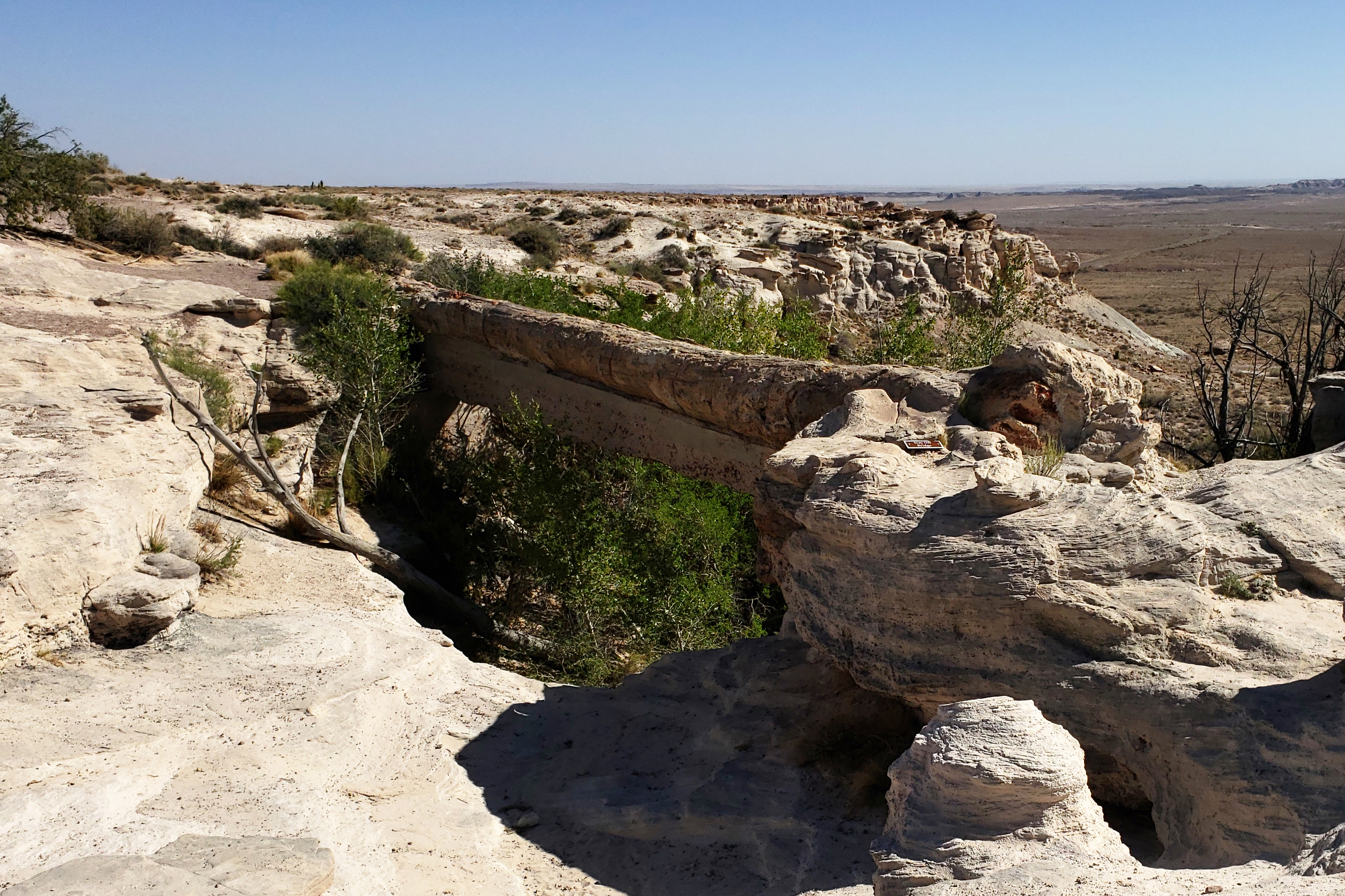
Agate House TrailReconstructed Ancestral Puebloan village built of petrified wood pieces. 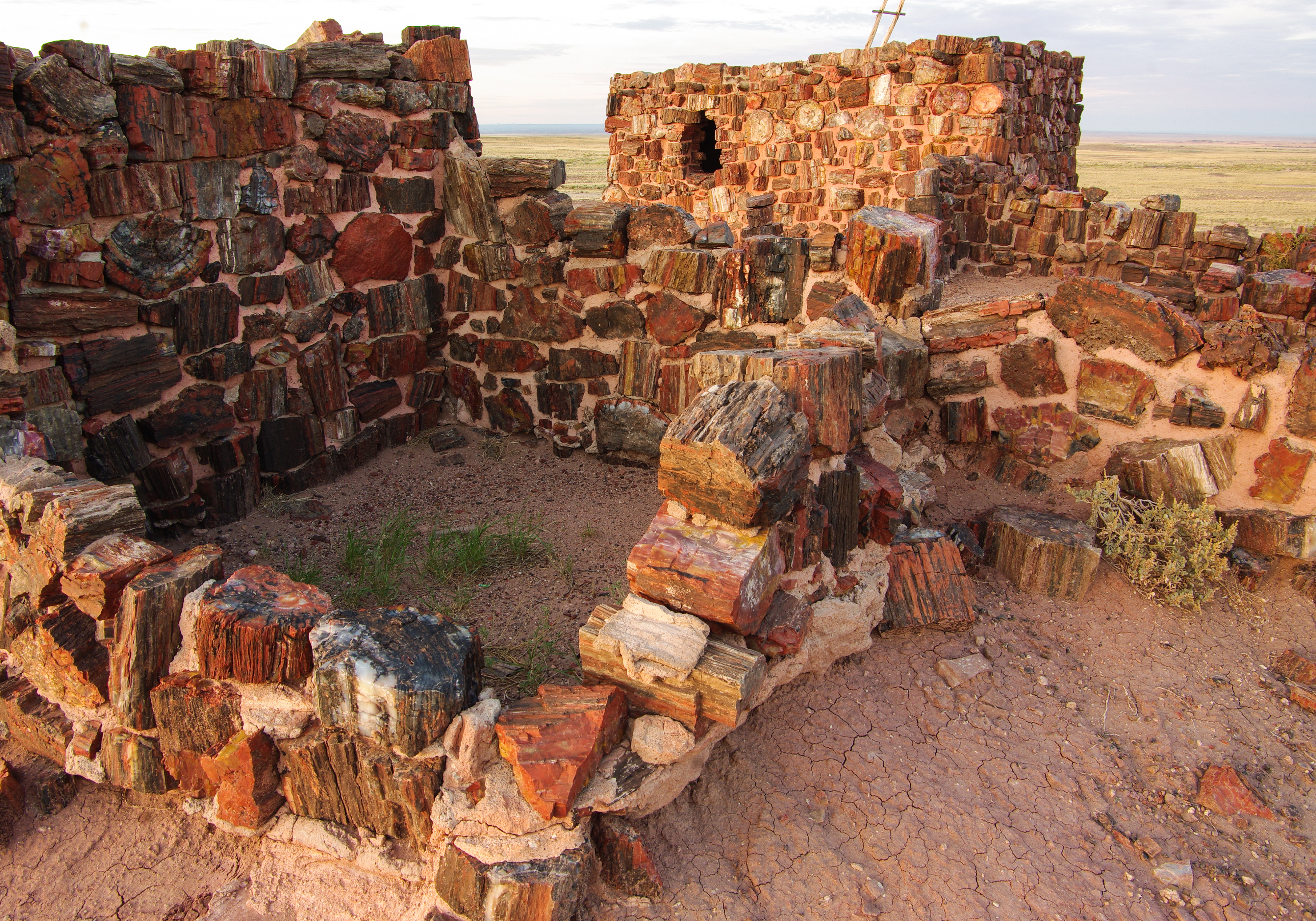
Arizona: Painted Desert InnOnly one national park in the country includes and protects a section of historic Route 66: the Petrified Forest National Park with one of the world’s largest and most colorful concentrations of petrified wood, multi-hued badlands of the Painted Desert, historic structures, archeological sites, and displays of over 200-million-year-old fossils. 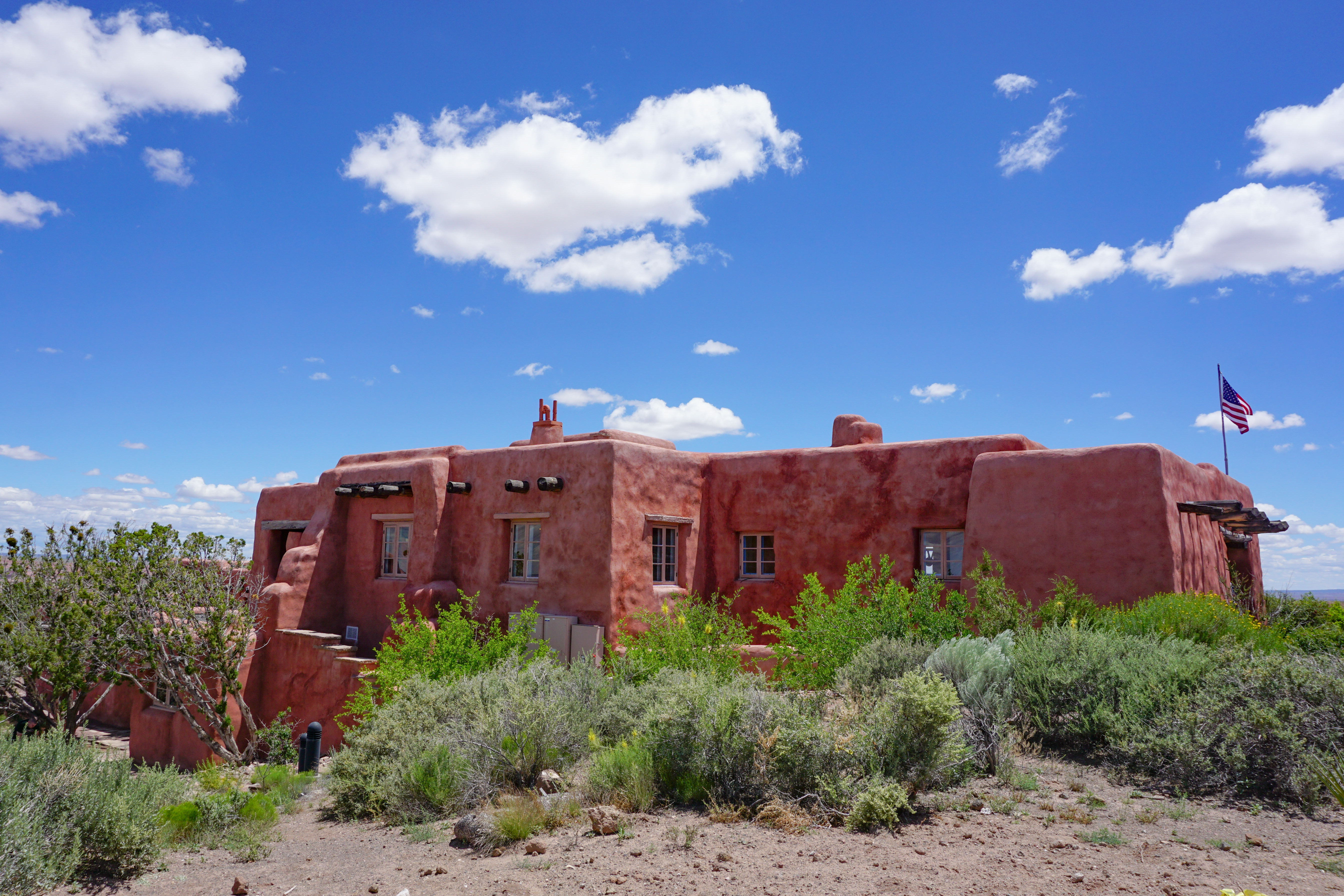
Blue MesaBlue Mesa, one of the most beautiful spots in the park, consists of blue, purple, gray, and peach banded badlands with pieces of petrified wood. 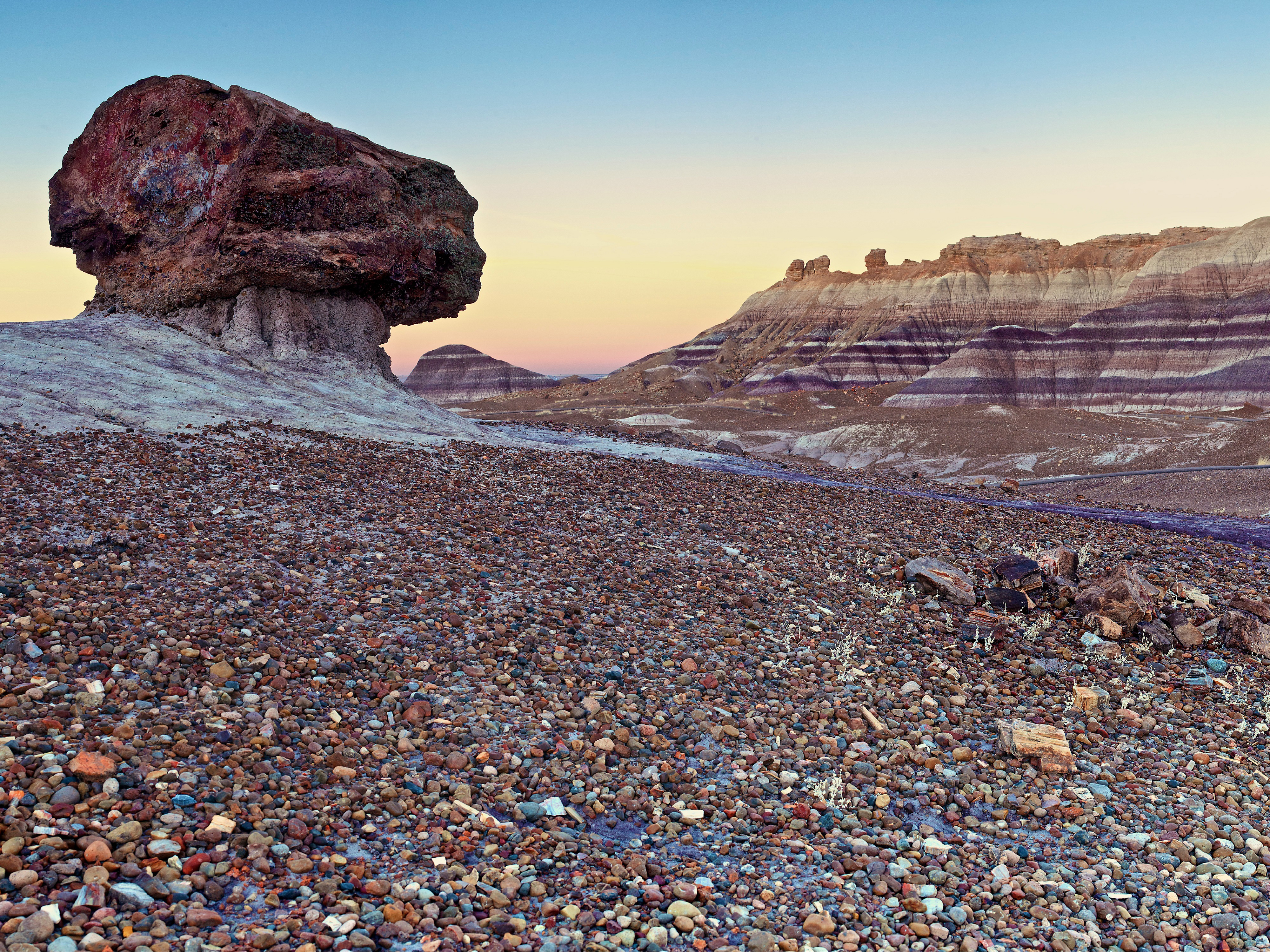
Blue Mesa TrailVisitors walk along the spectacular Blue Mesa Trail. 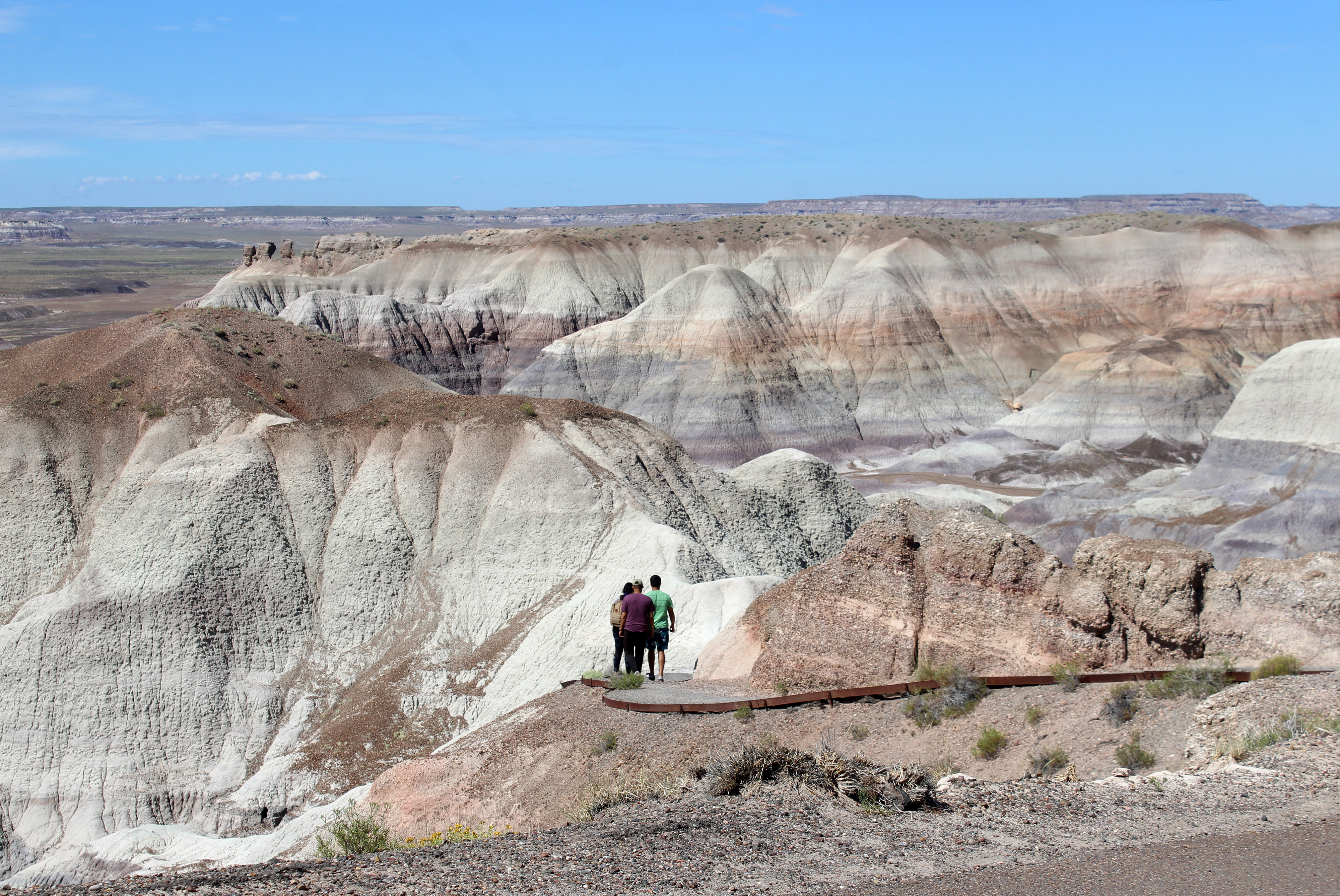
Crystal Forest TrailMultiple tan petrified logs gather along the Crystal Forest Trail under a blue sky with badlands in the background. 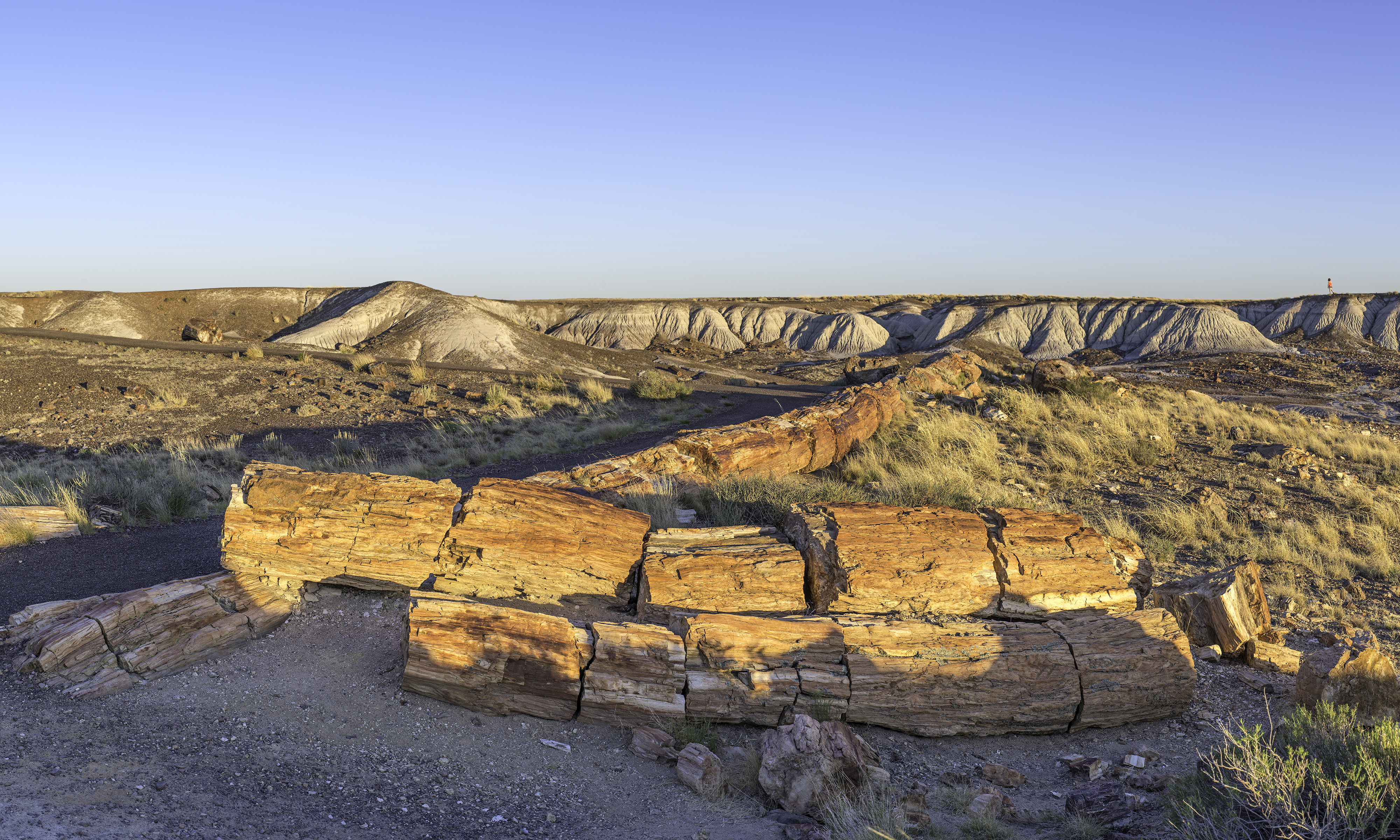
East Old 180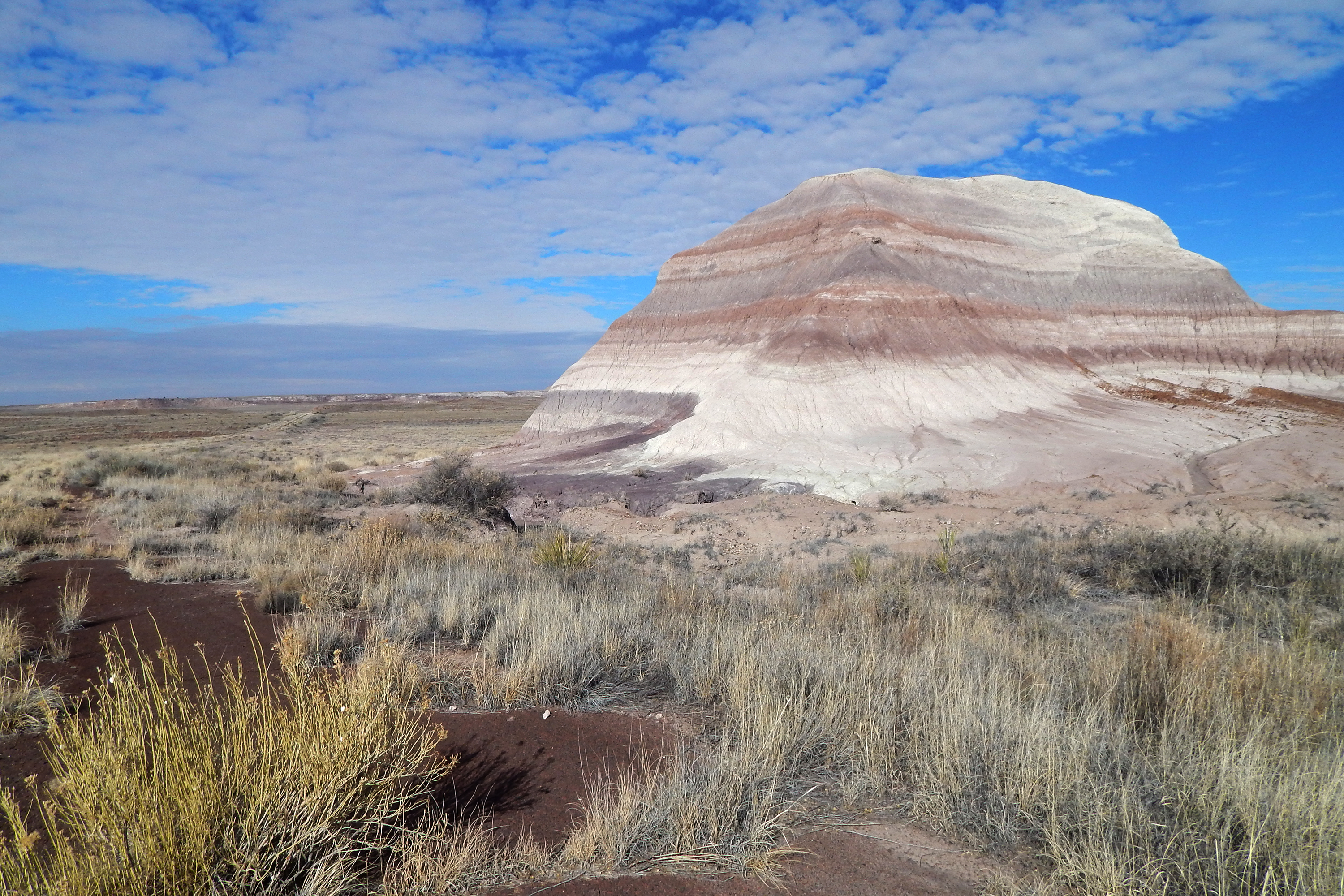
Giant LogsGiant Logs is part of Rainbow Forest in Petrified Forest National Park. Once an ancient log jam in a Late Triassic river, Giant Logs was the heart of the original national monument set aside in 1906 by President Theodore Roosevelt. 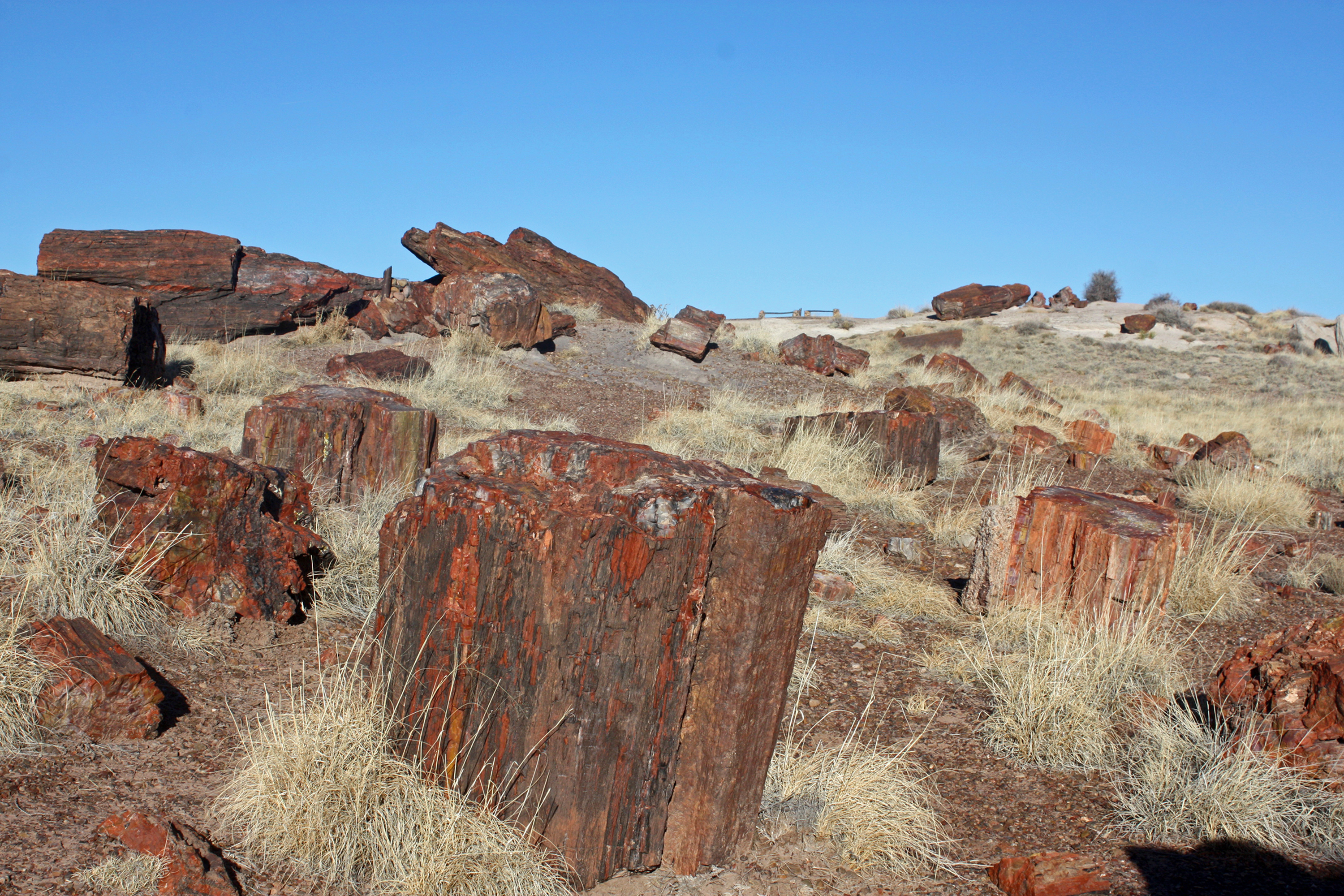
Giant Logs TrailVisitors walk along Giant Logs Trail through grassland and pieces of petrified wood. 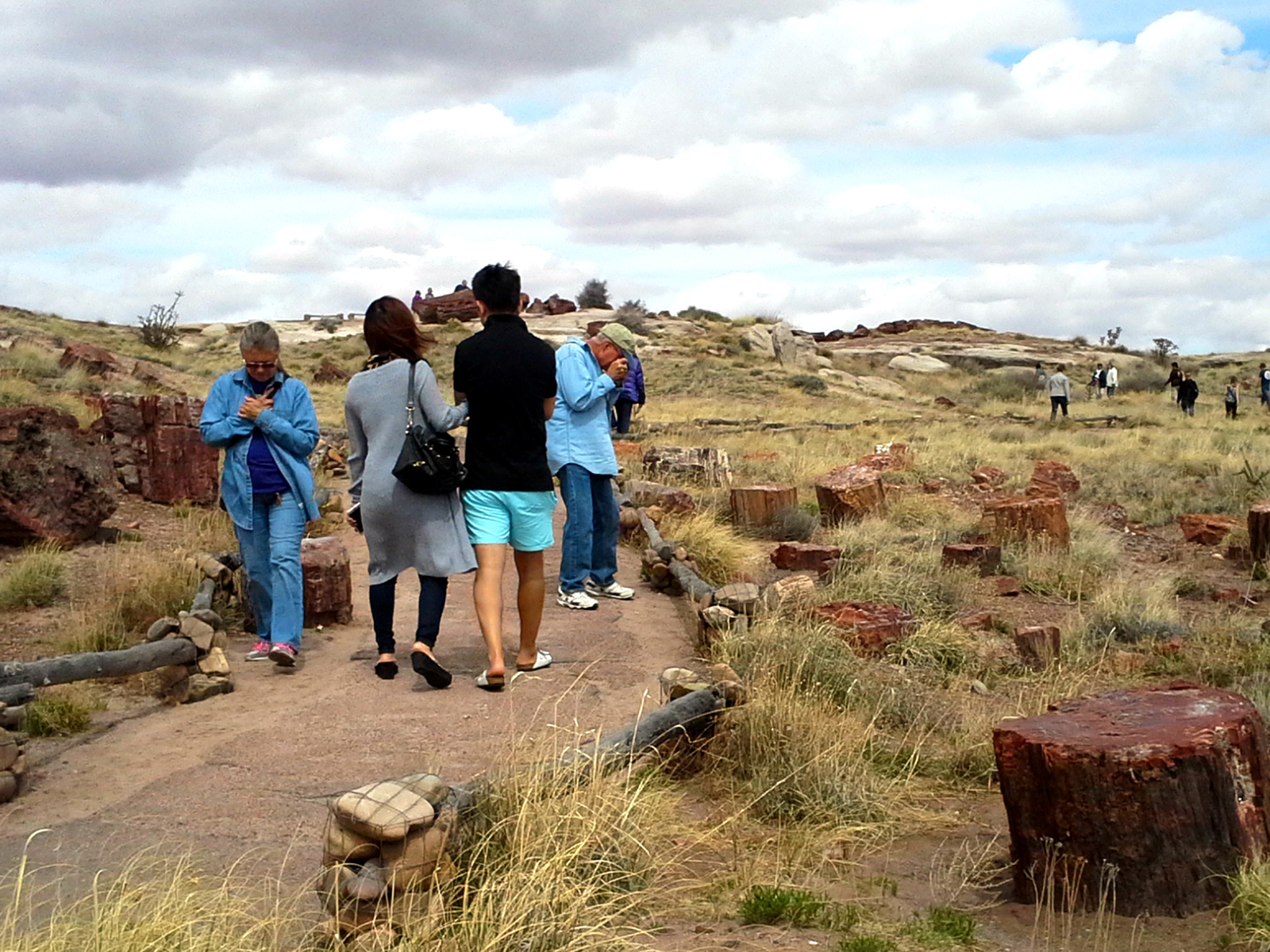
Giant Logs Trail Stop #1Stop 1 along Giant Logs Trail 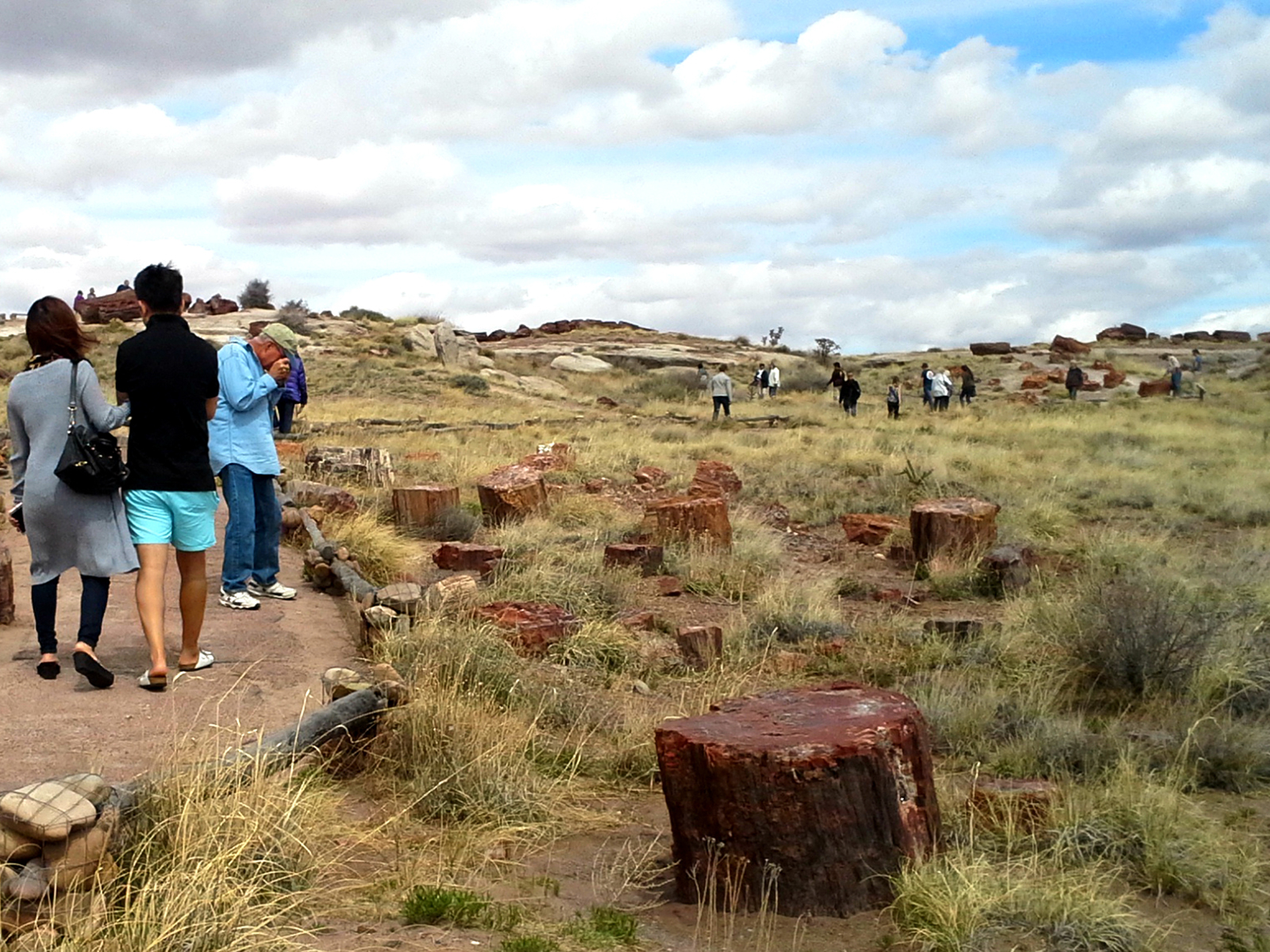
Giant Logs Trail Stop #10Petrified log eroding from the surrounding hills. 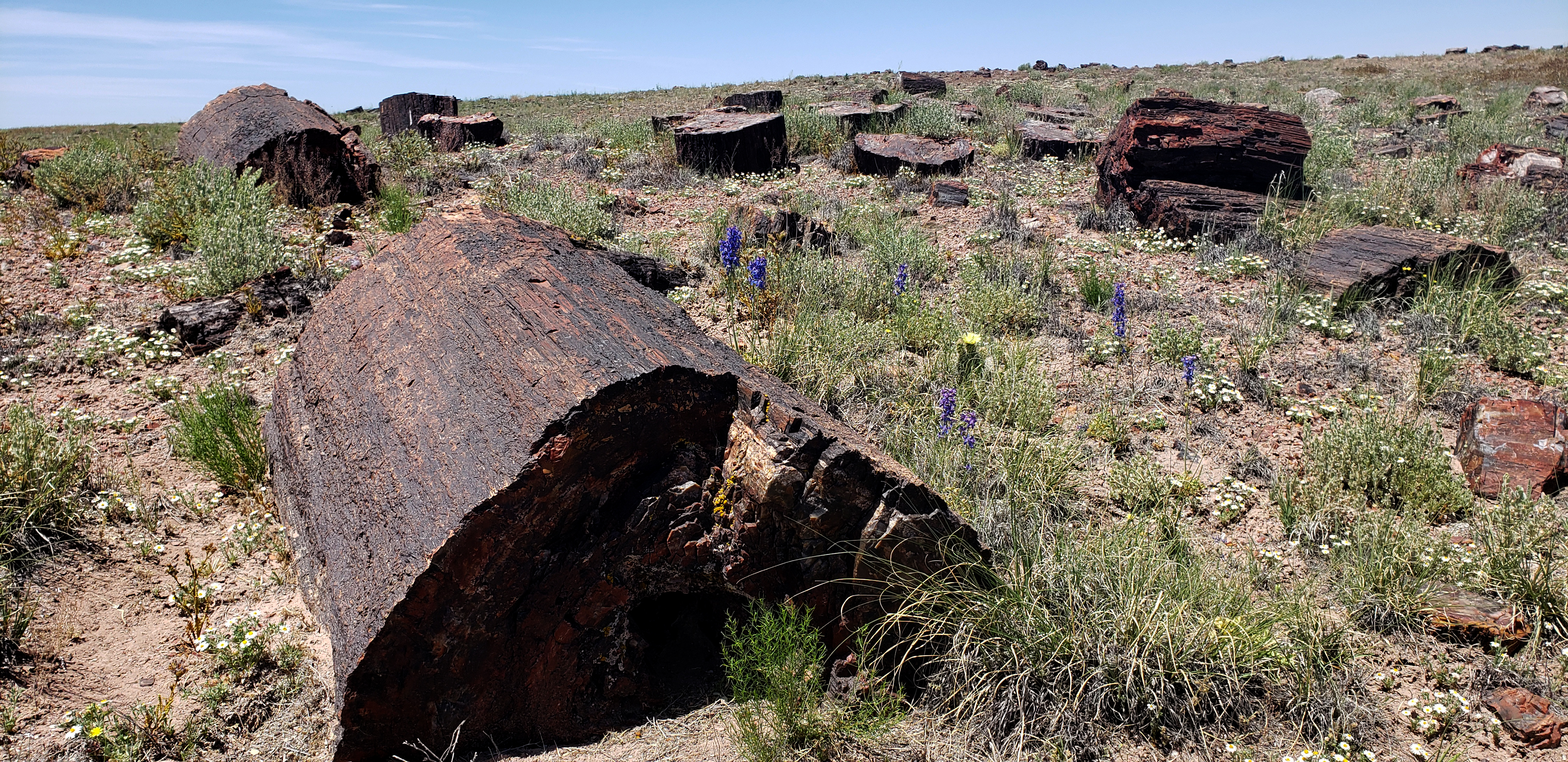
Giant Logs Trail Stop #11Paleo art reminds us that the petrified trees are from another time. 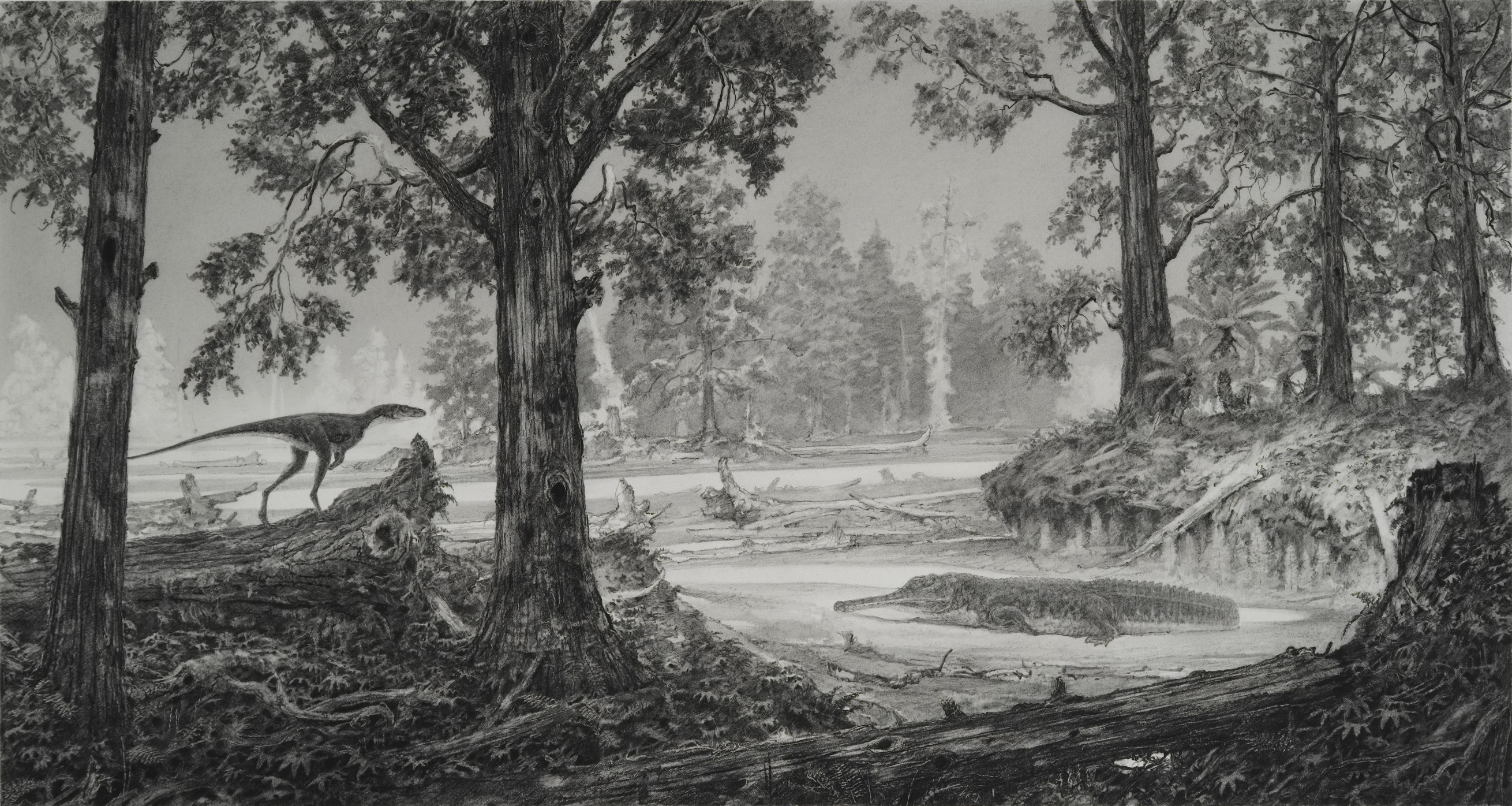
Giant Logs Trail Stop #2Giant Logs Trail Stop #2 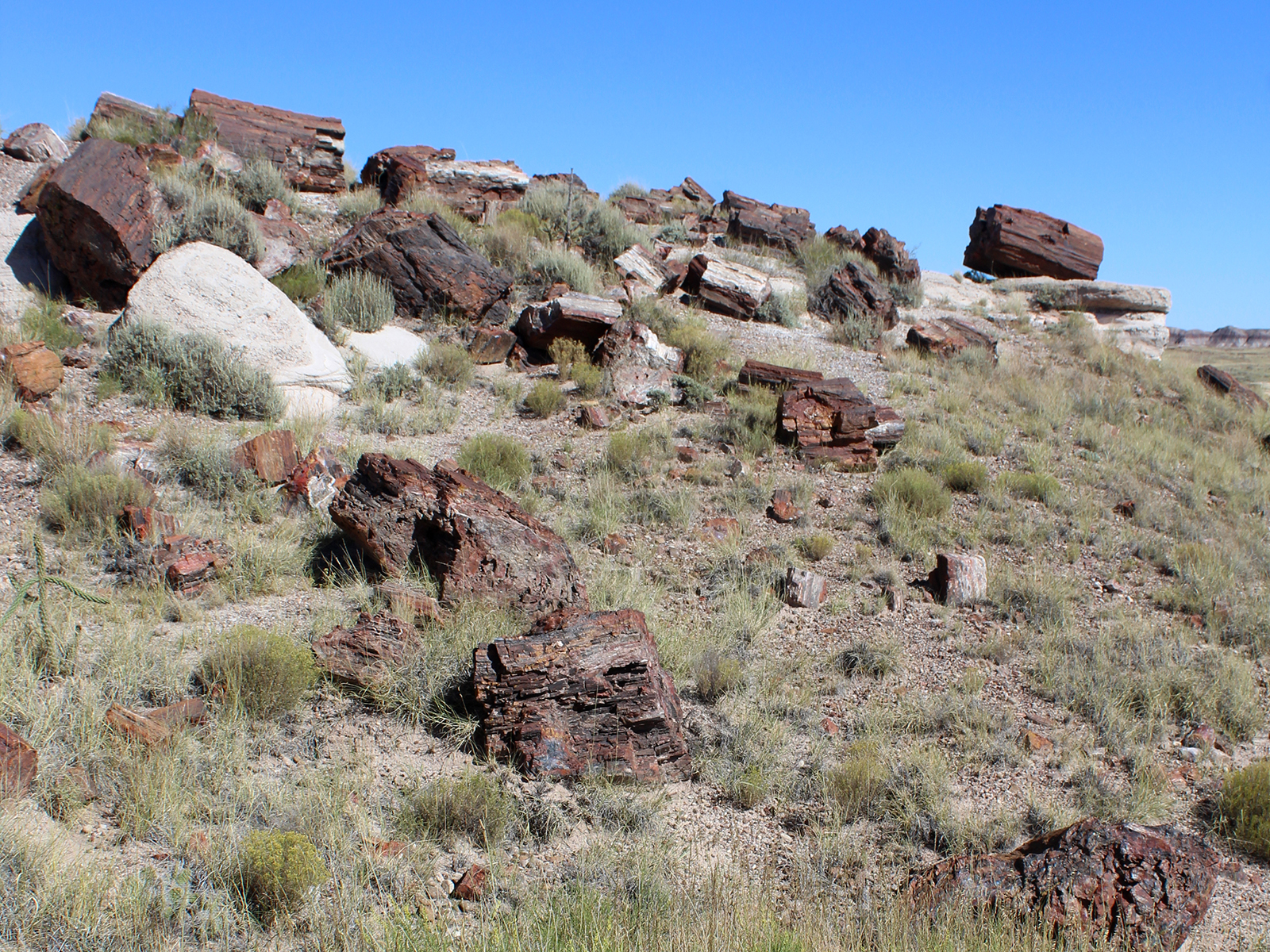
Giant Logs Trail Stop #3Giant Logs Trail Stop #3 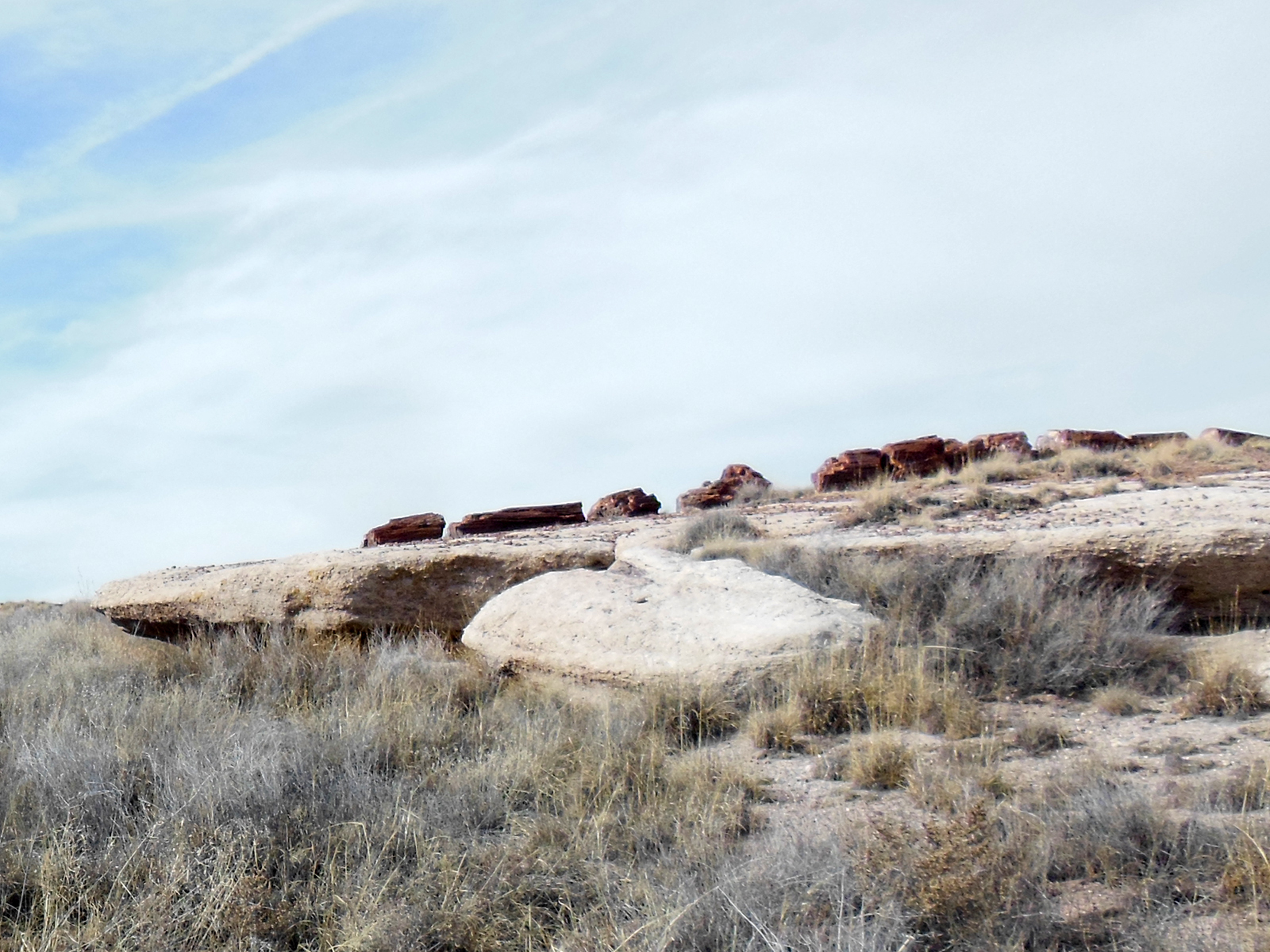
Giant Logs Trail Stop #4Giant Logs Trail Stop #4 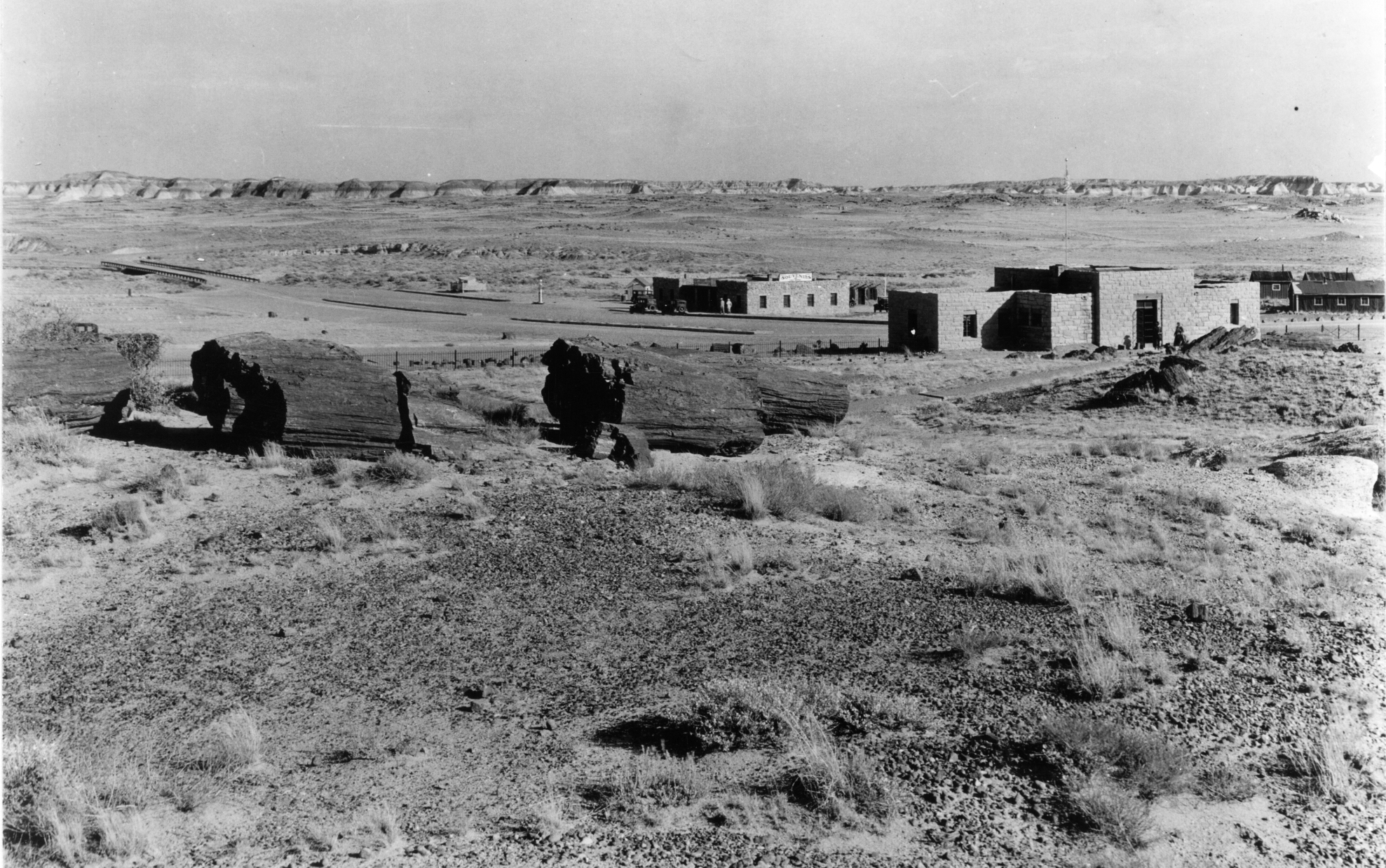
Giant Logs Trail Stop #5Giant Logs Trail Stop #5 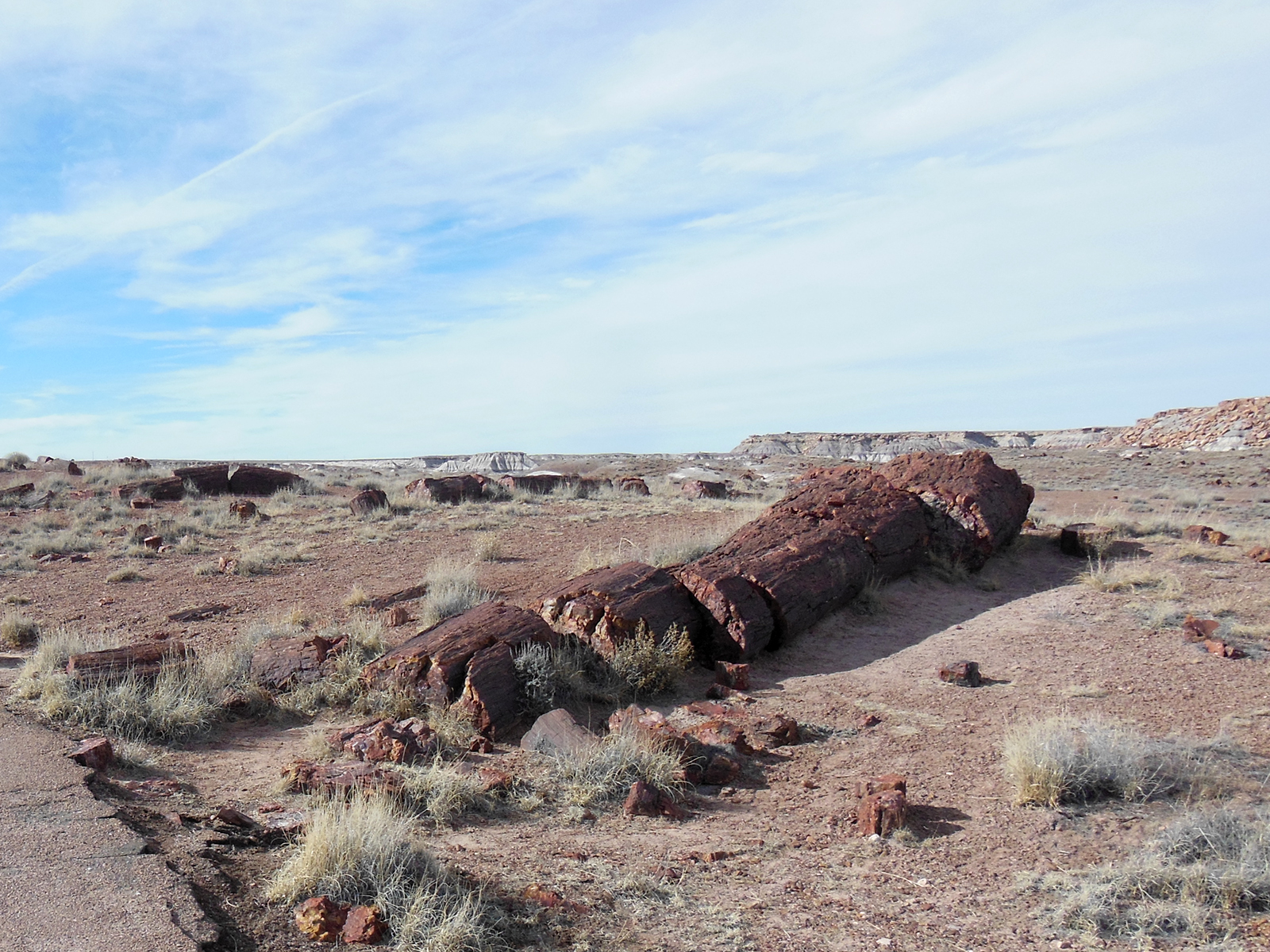
Giant Logs Trail Stop #6Giant Logs Trail Stop #6 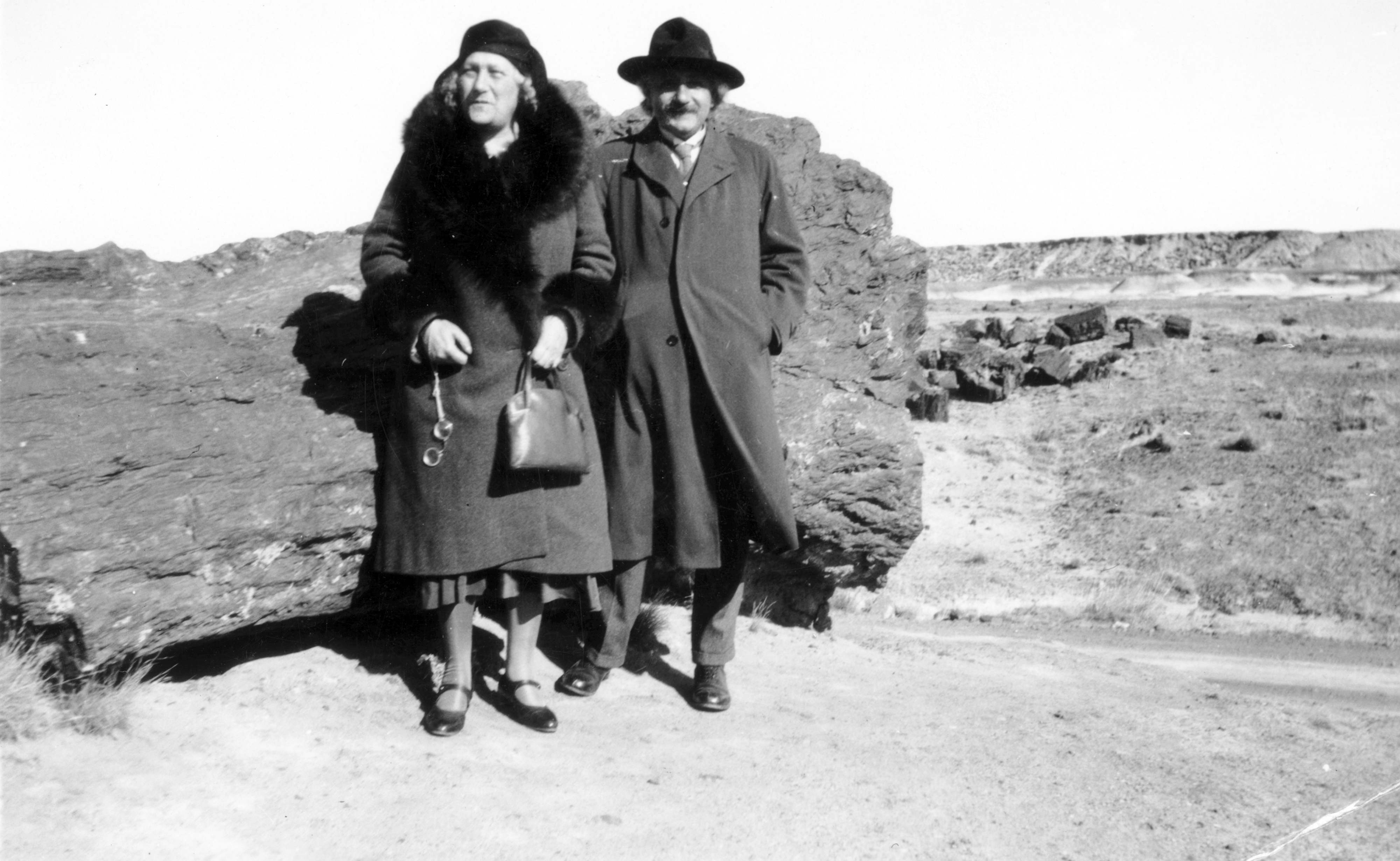
Giant Logs Trail Stop #7Giant Logs Trail Stop #7 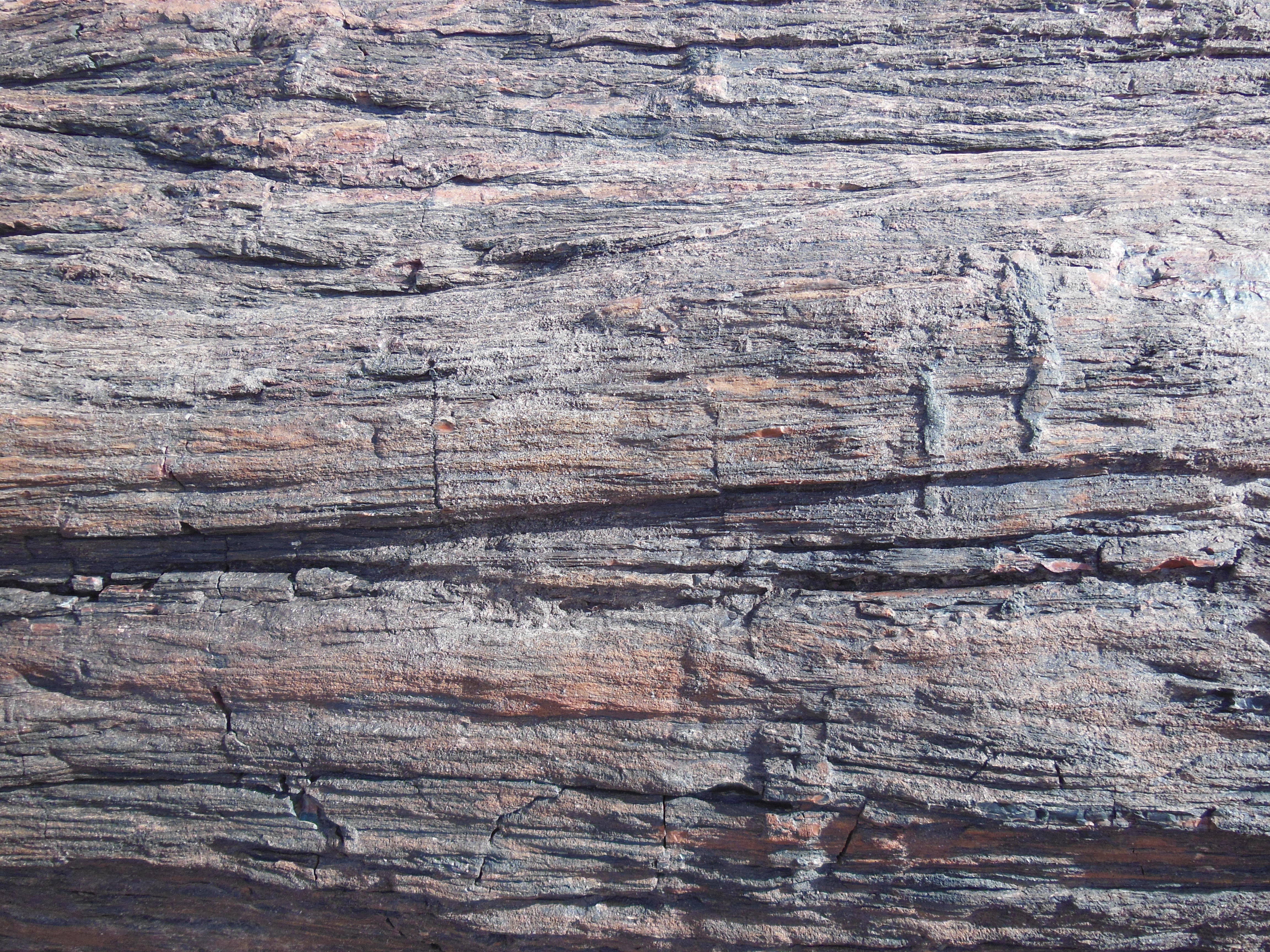
Giant Logs Trail Stop #8Giant Logs Trail Stop #8 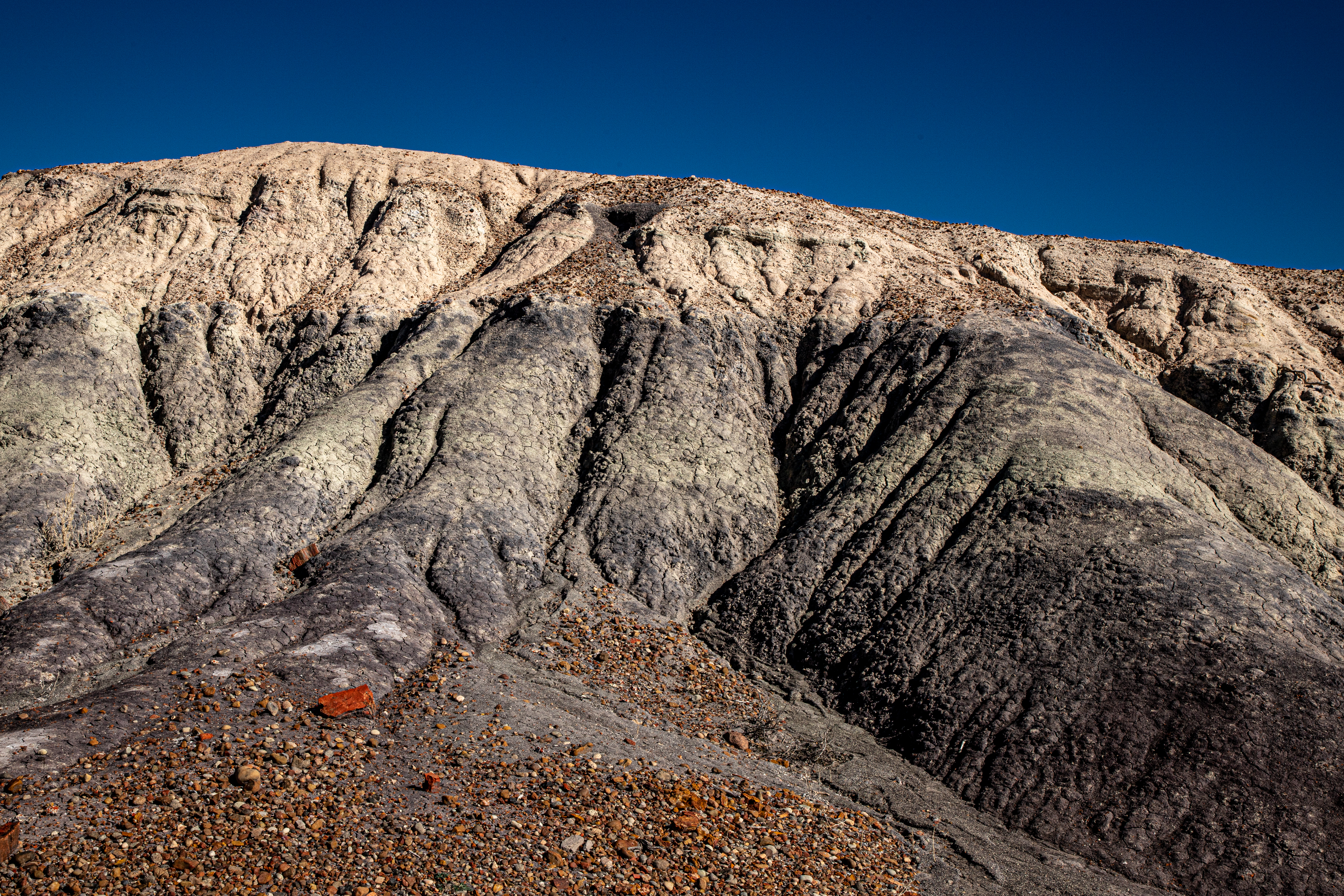
Giant Logs Trail Stop #9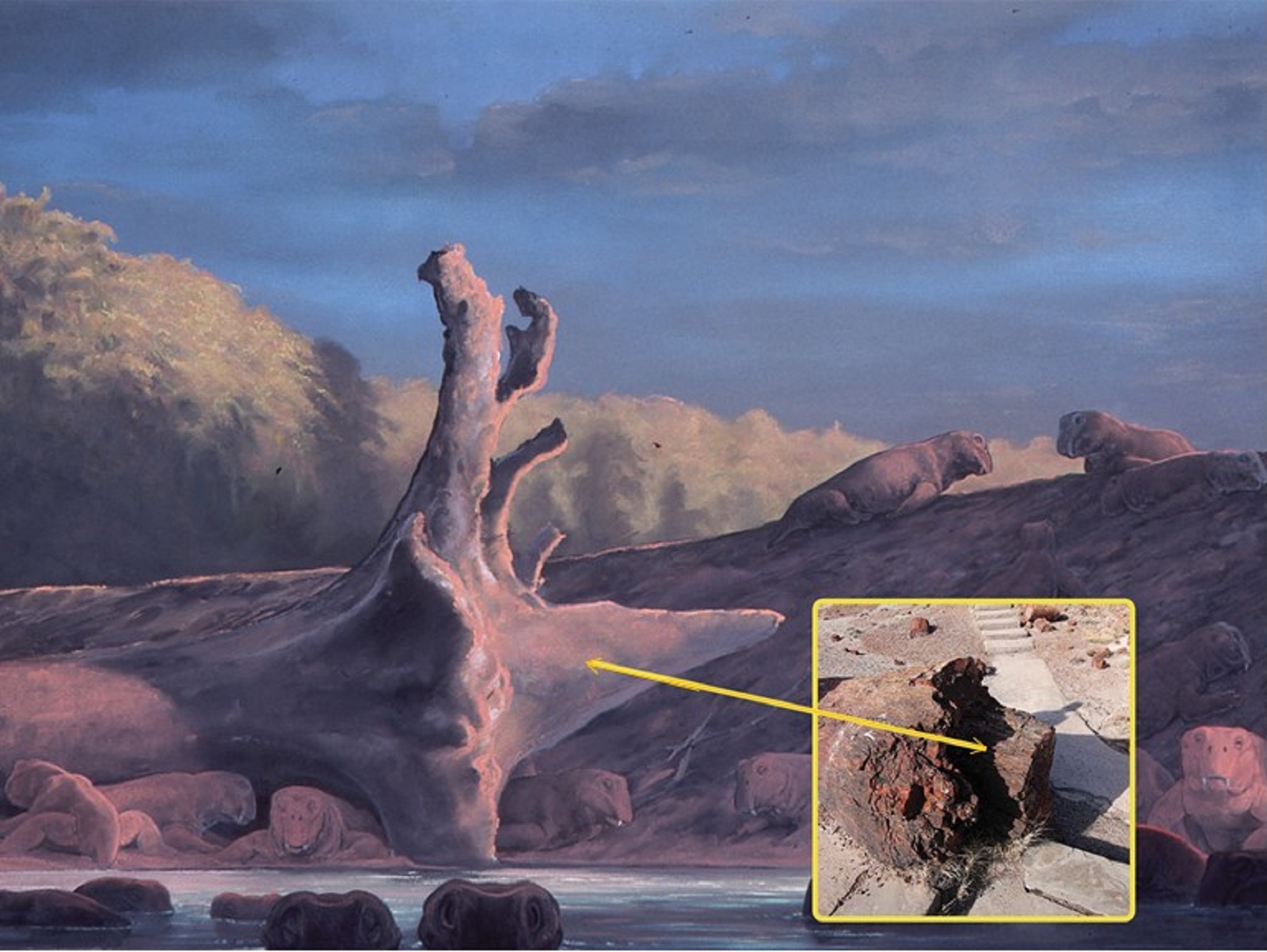
Hamilili Dune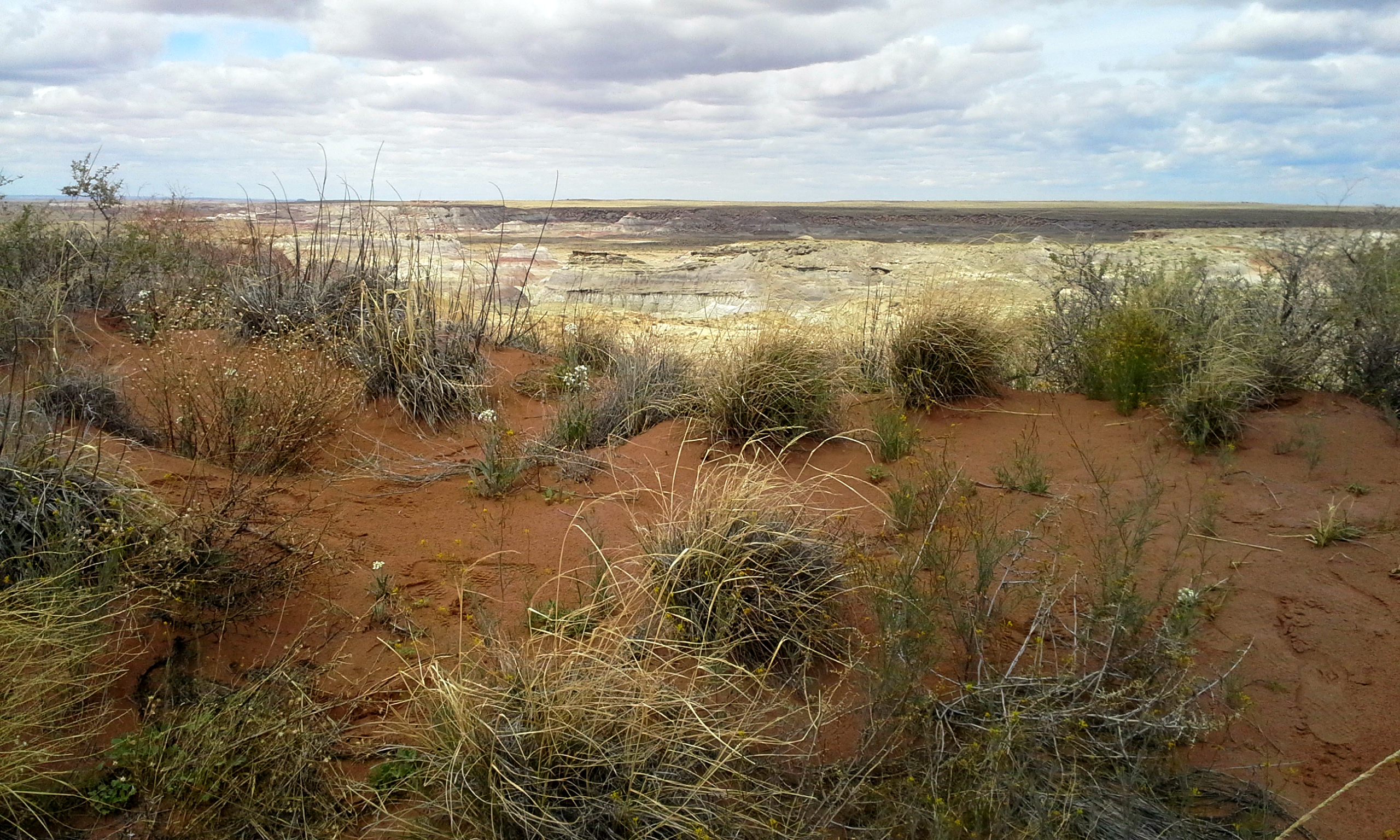
Hamilili PointBadland, grassland, and mesa view from South No Name Point, the access point for the south unit of the Petrified Forest National Wilderness Area. 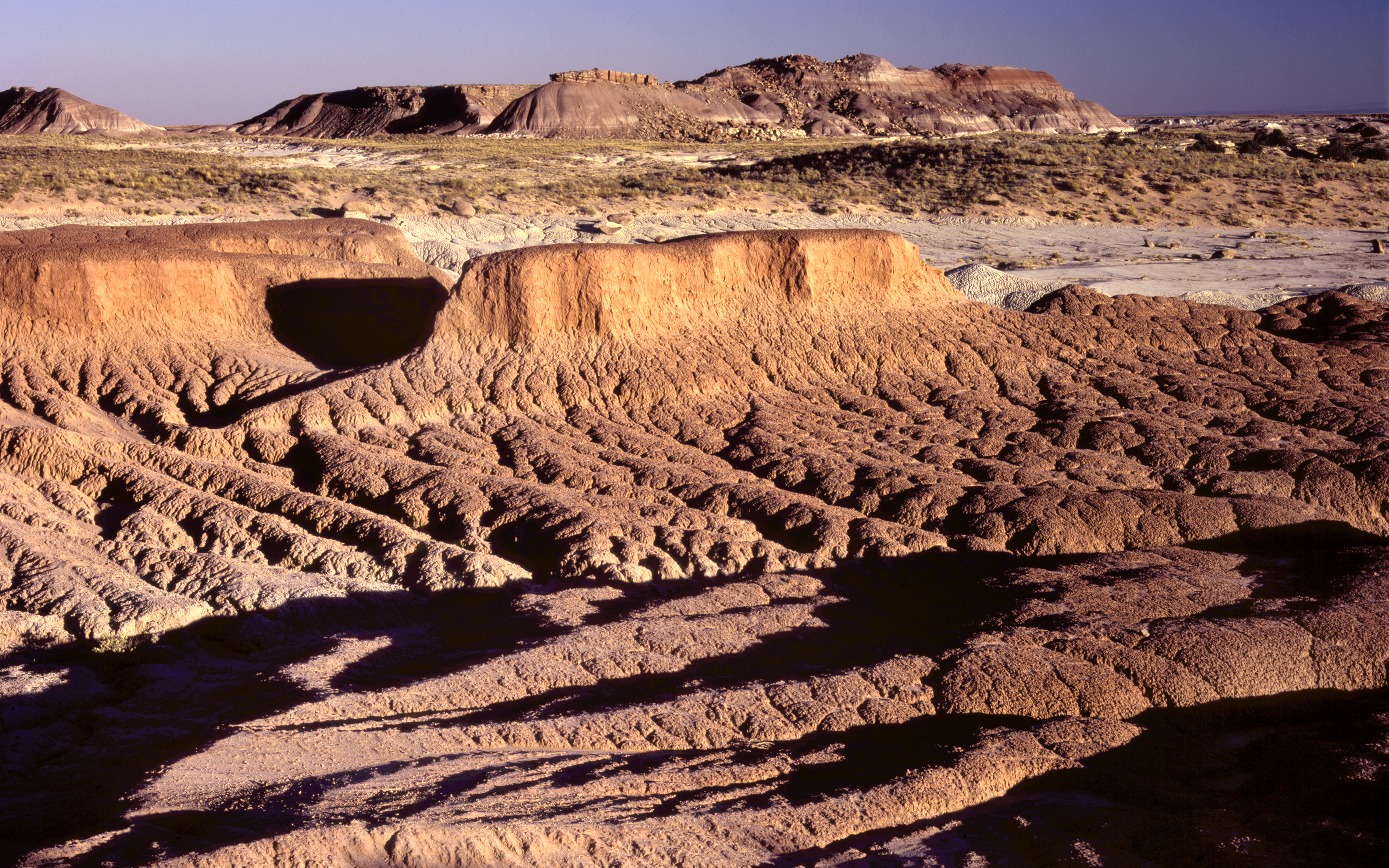
Kachina PointView from Kachina Point of the red part of the Painted Desert. 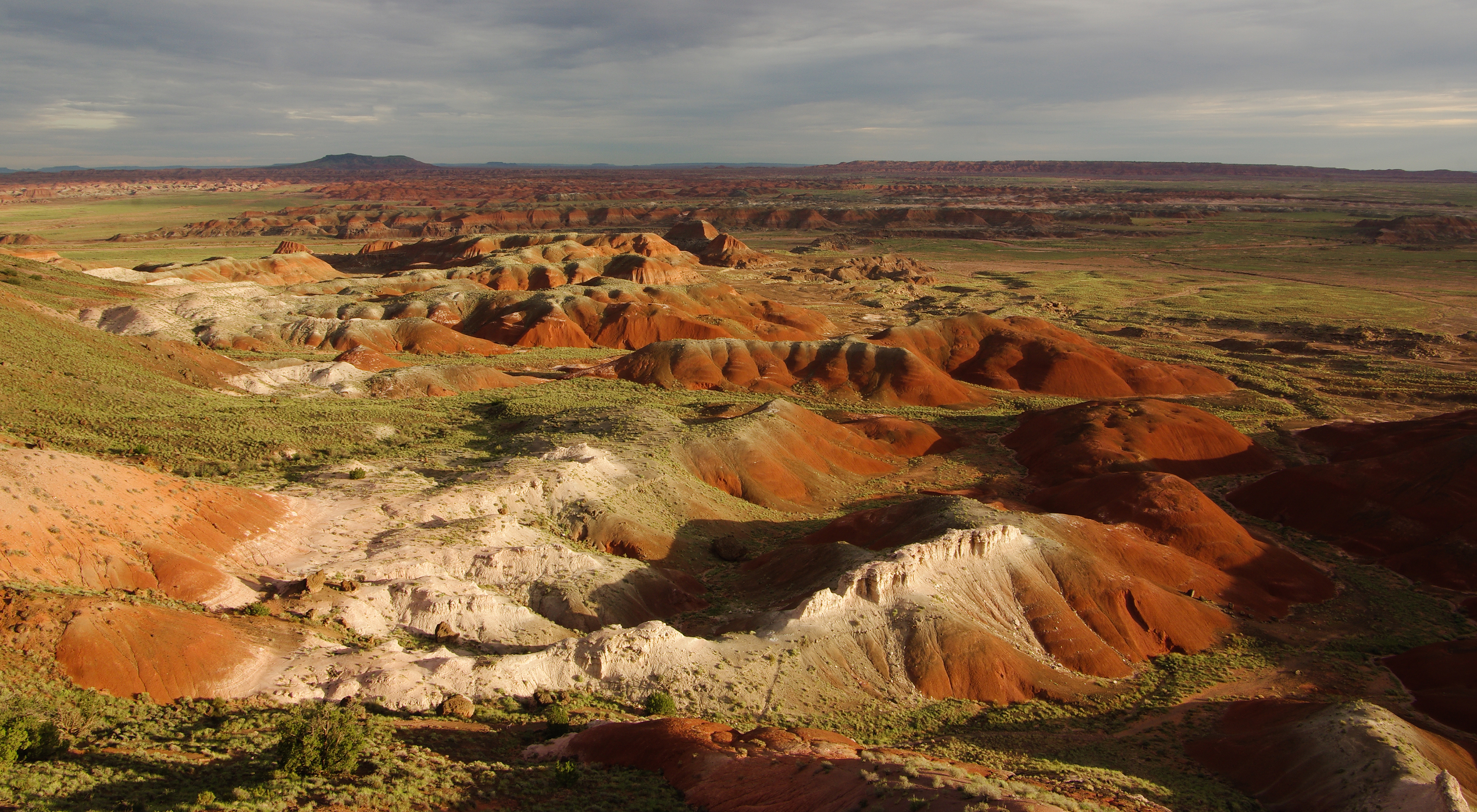
Long Logs TrailColorful petrified wood pieces in front of blue gray badlands along the Long Logs Trail. 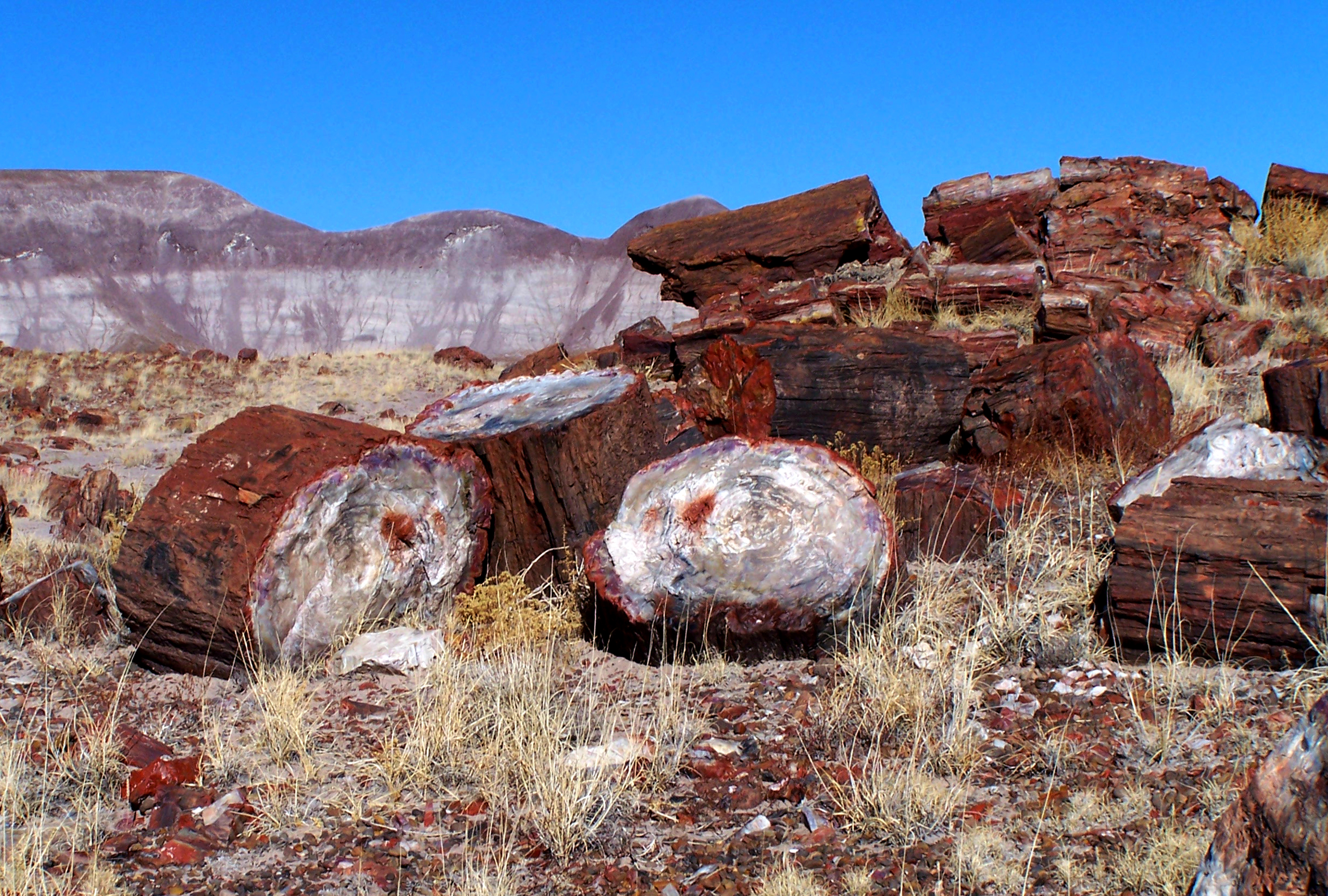
Nizhoni PointNizhoni Point overlooks the unconformity between the Chinle and Bidahochi Formations. 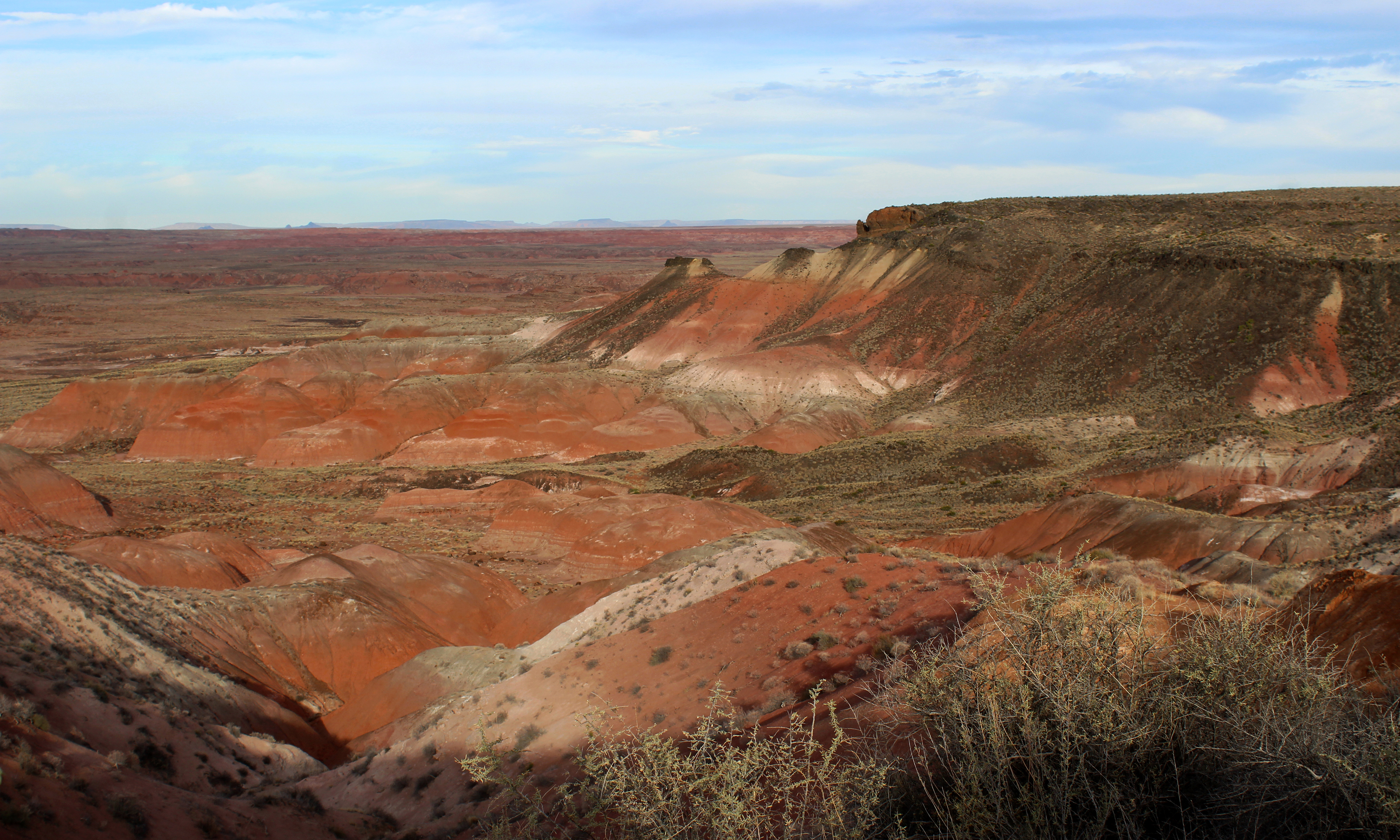
Off the Beaten Path Billings Gap Overlook Route Stop 1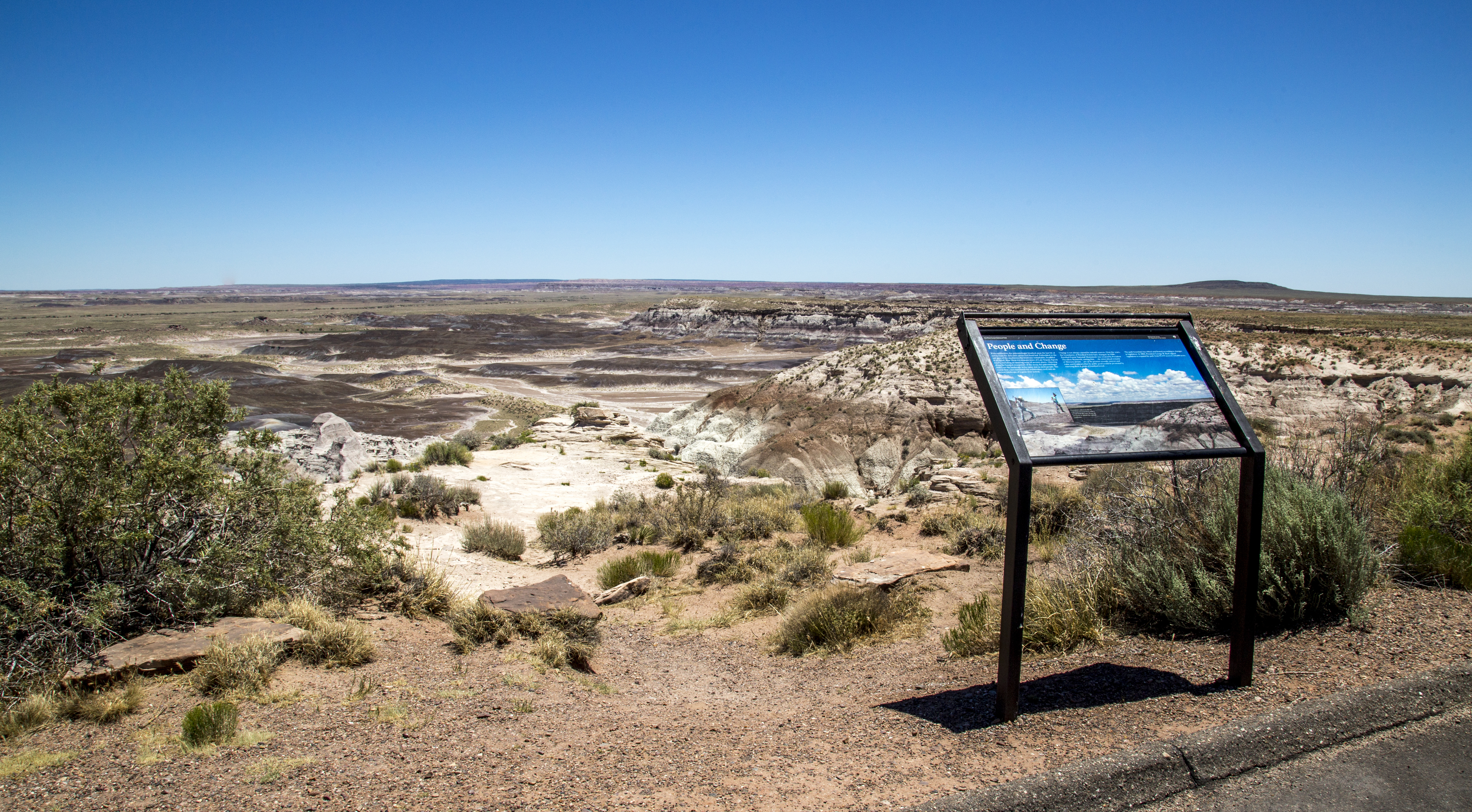
Off the Beaten Path Billings Gap Overlook Route Stop 2Trailhead for the Off the Beaten Path Billings Gap Overlook route. 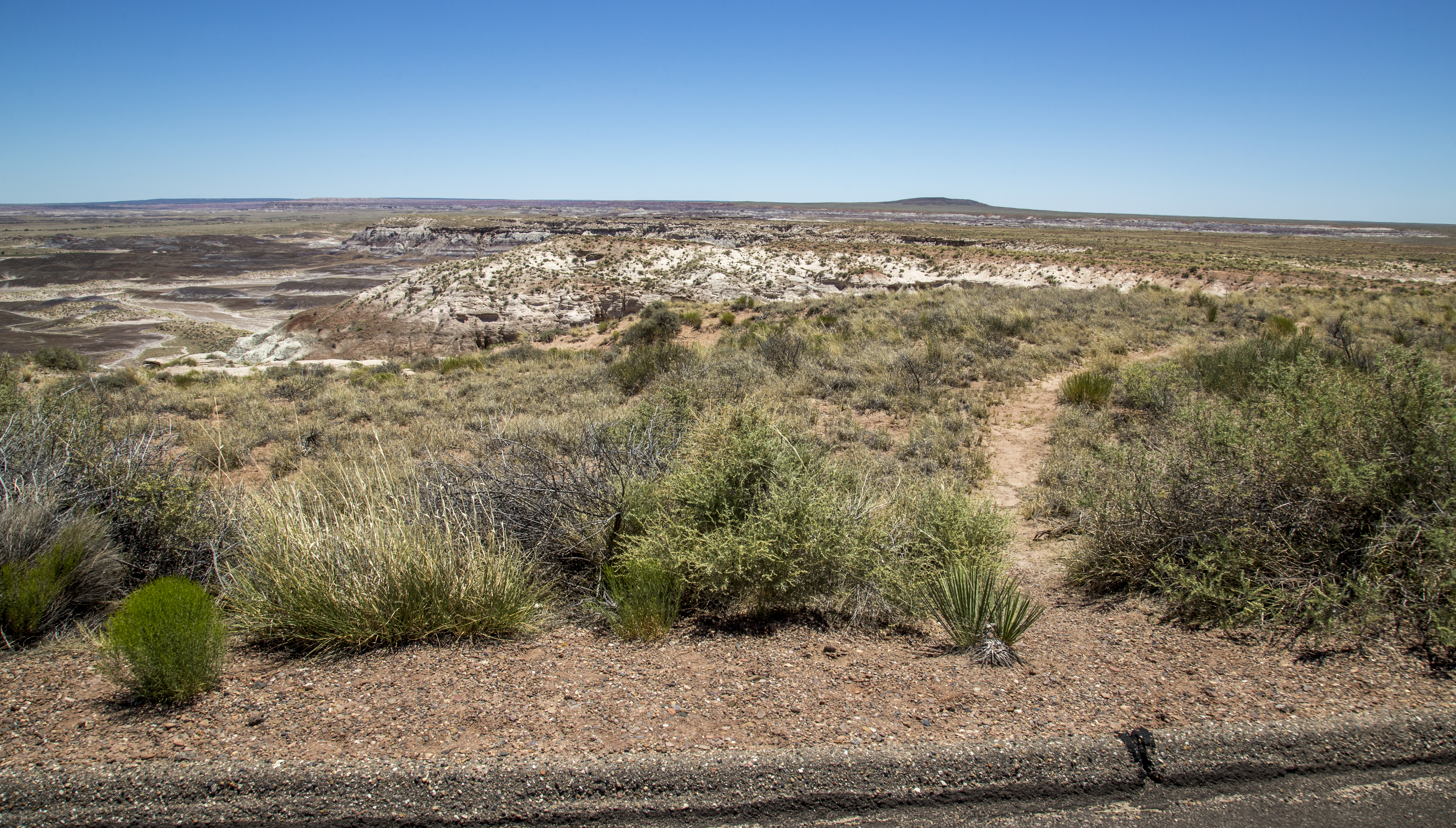
Off the Beaten Path Billings Gap Overlook Route Stop 3View point along the Off the Beaten Path Billings Gap Overlook route. 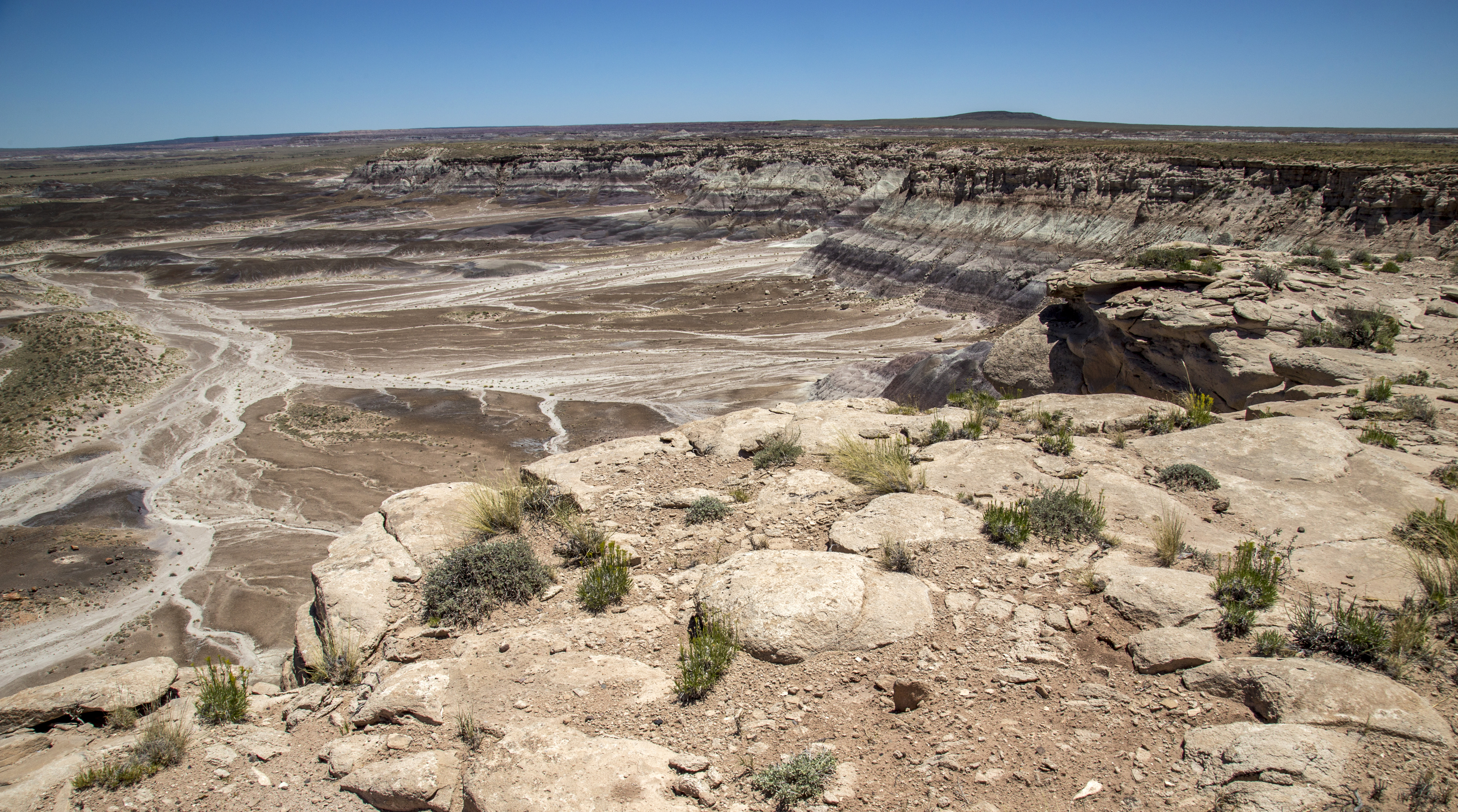
Off the Beaten Path Billings Gap Overlook Route Stop 4Titular stop of the Off the Beaten Path Billings Gap Overlook route. 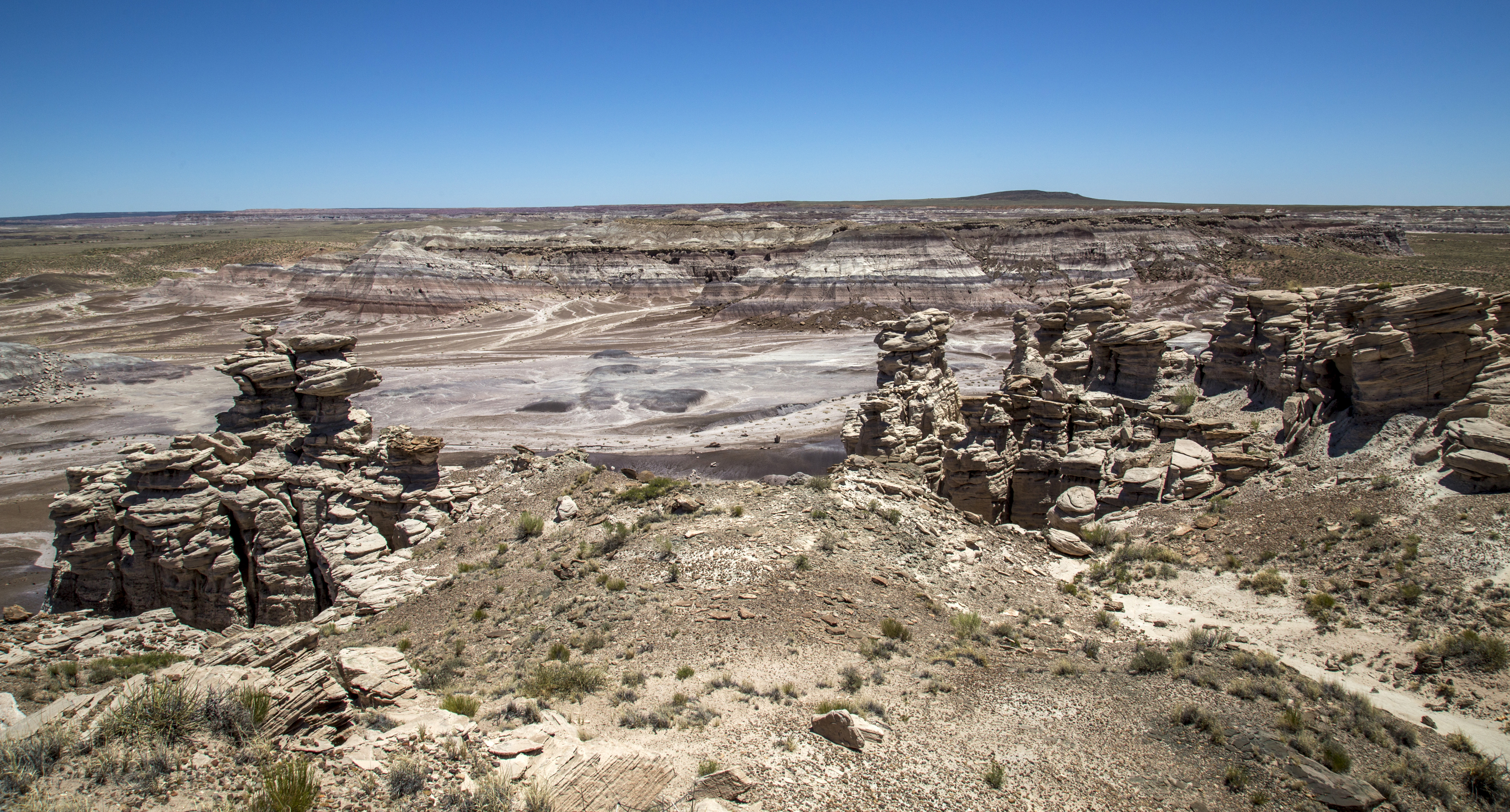
Off the Beaten Path Billings Gap Overlook Route Stop 5Towers, hoodoos, and monuments can be viewed at Blue Mesa. 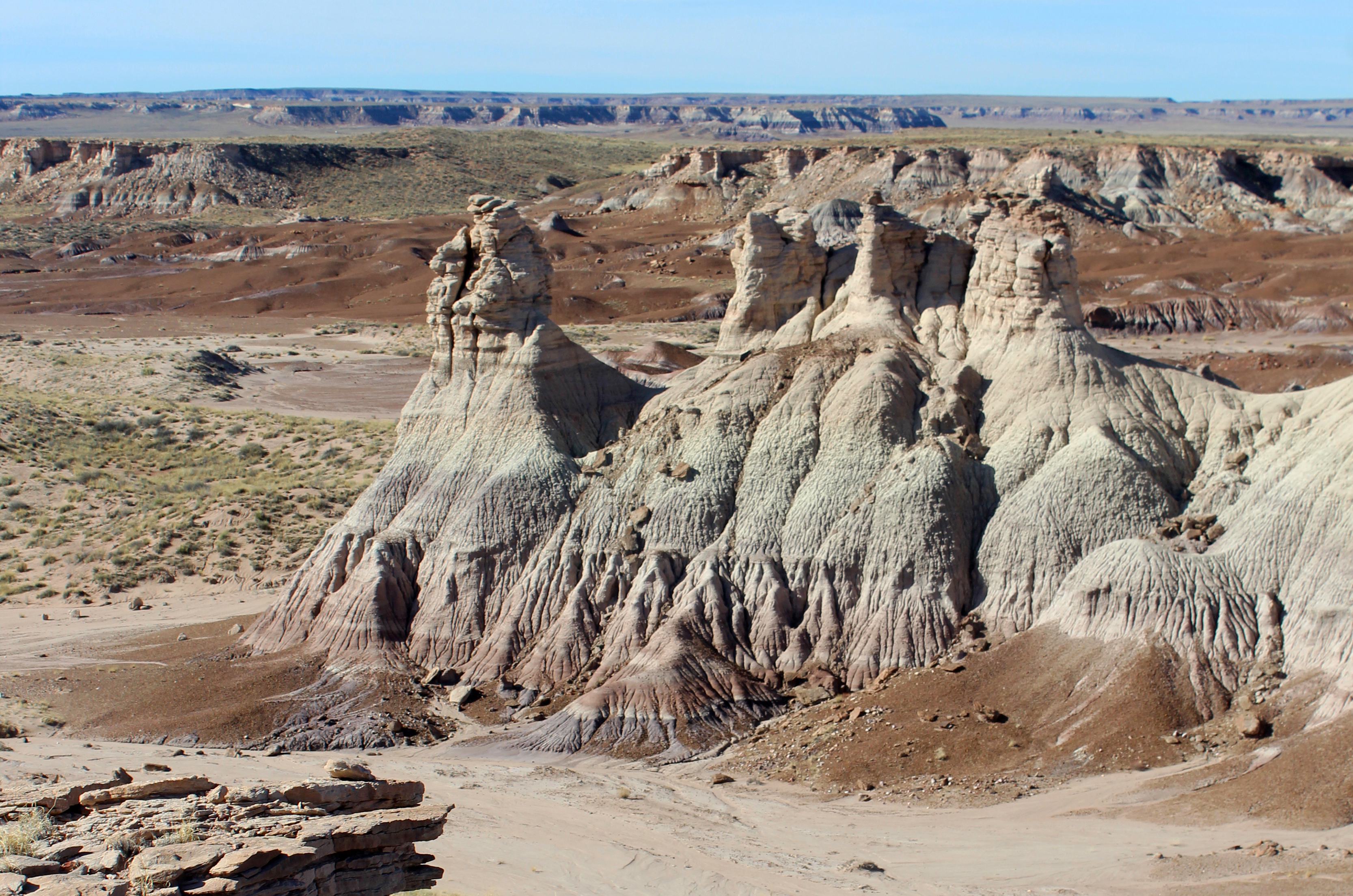
Off the Beaten Path Onyx Bridge Route Stop 1An off the beaten path hike into the wilderness to a petrified log hidden in the red badlands. 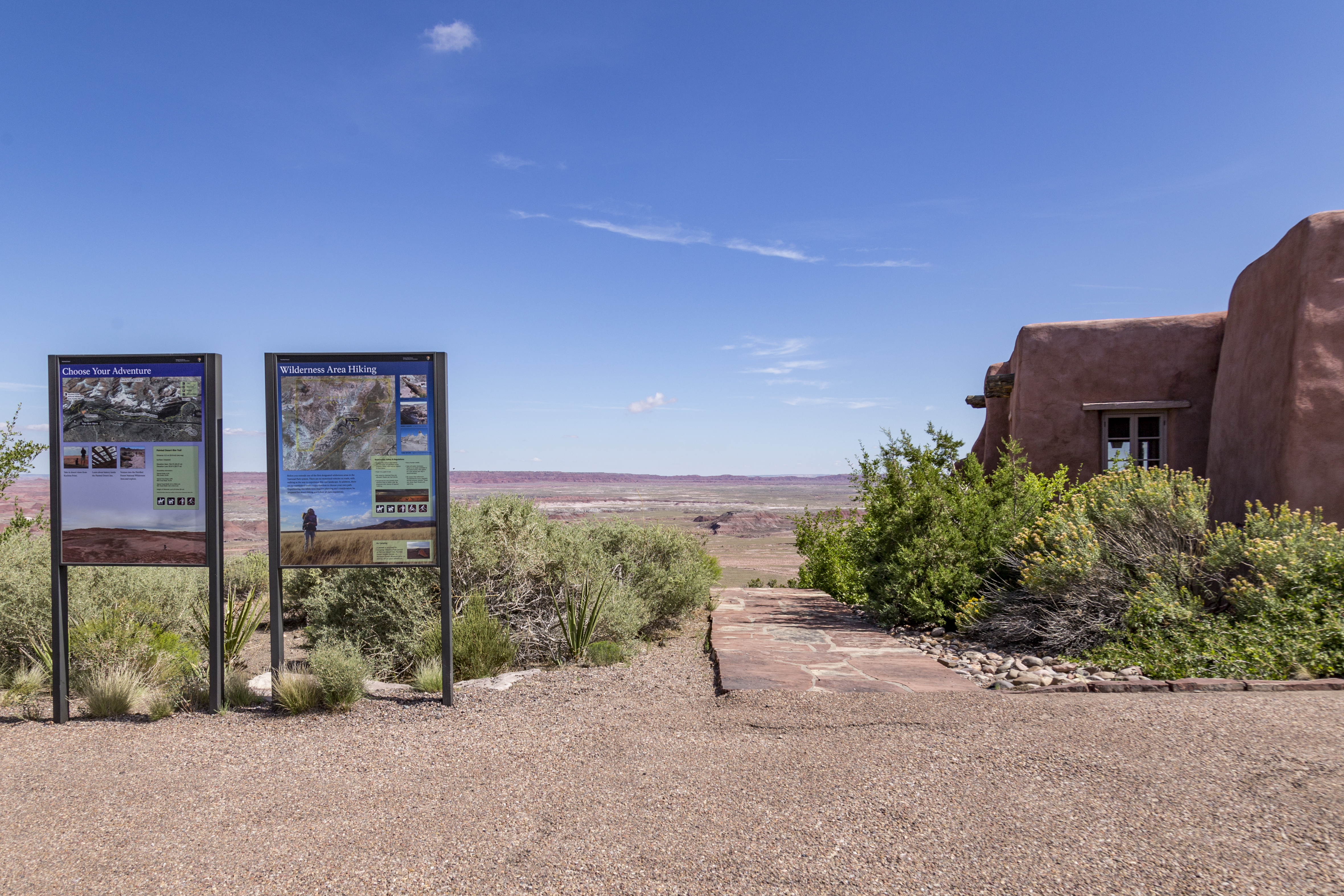
Off the Beaten Path Onyx Bridge Route Stop 2Along the Off the Beaten Path to Onyx Bridge. 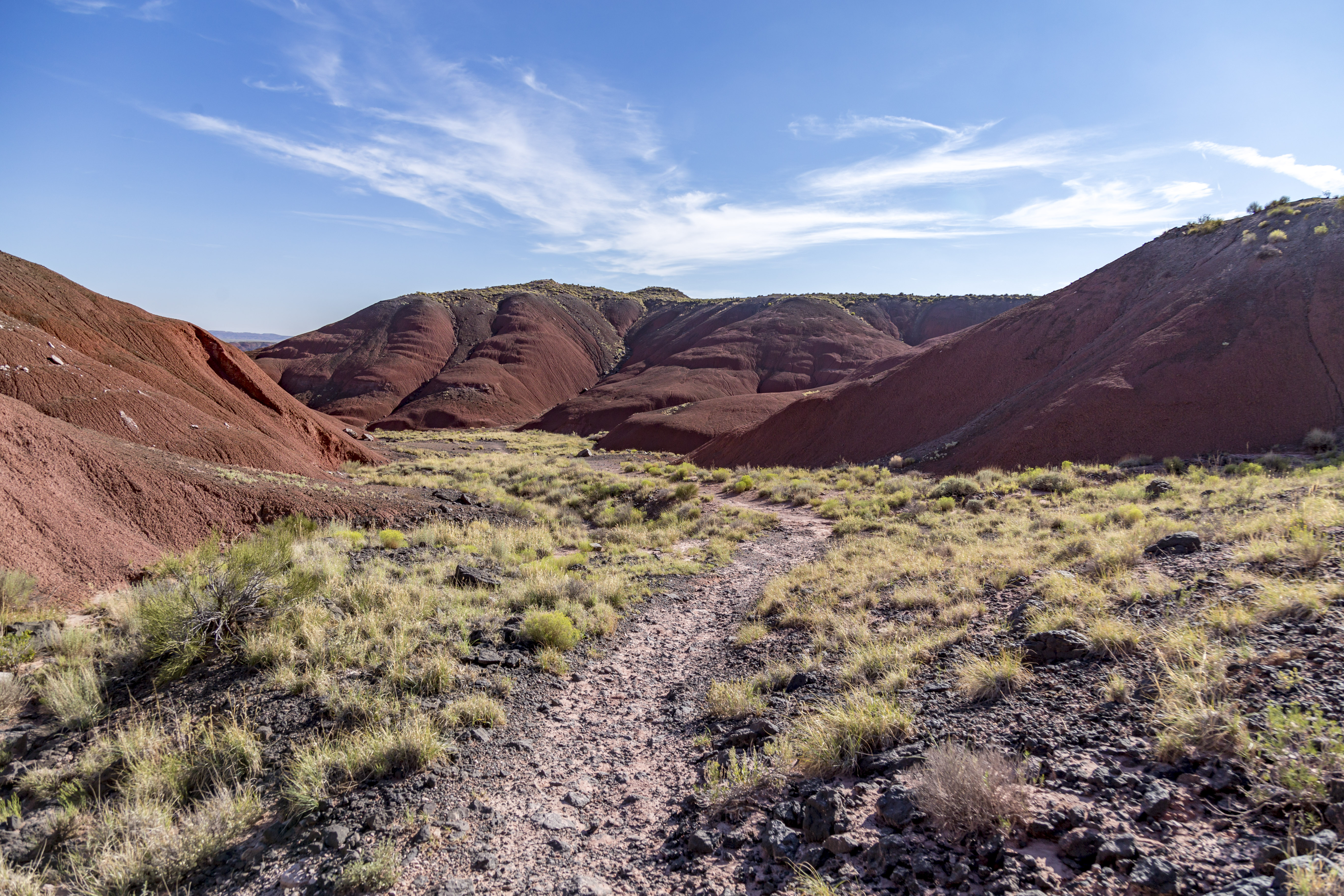
Off the Beaten Path Onyx Bridge Route Stop 3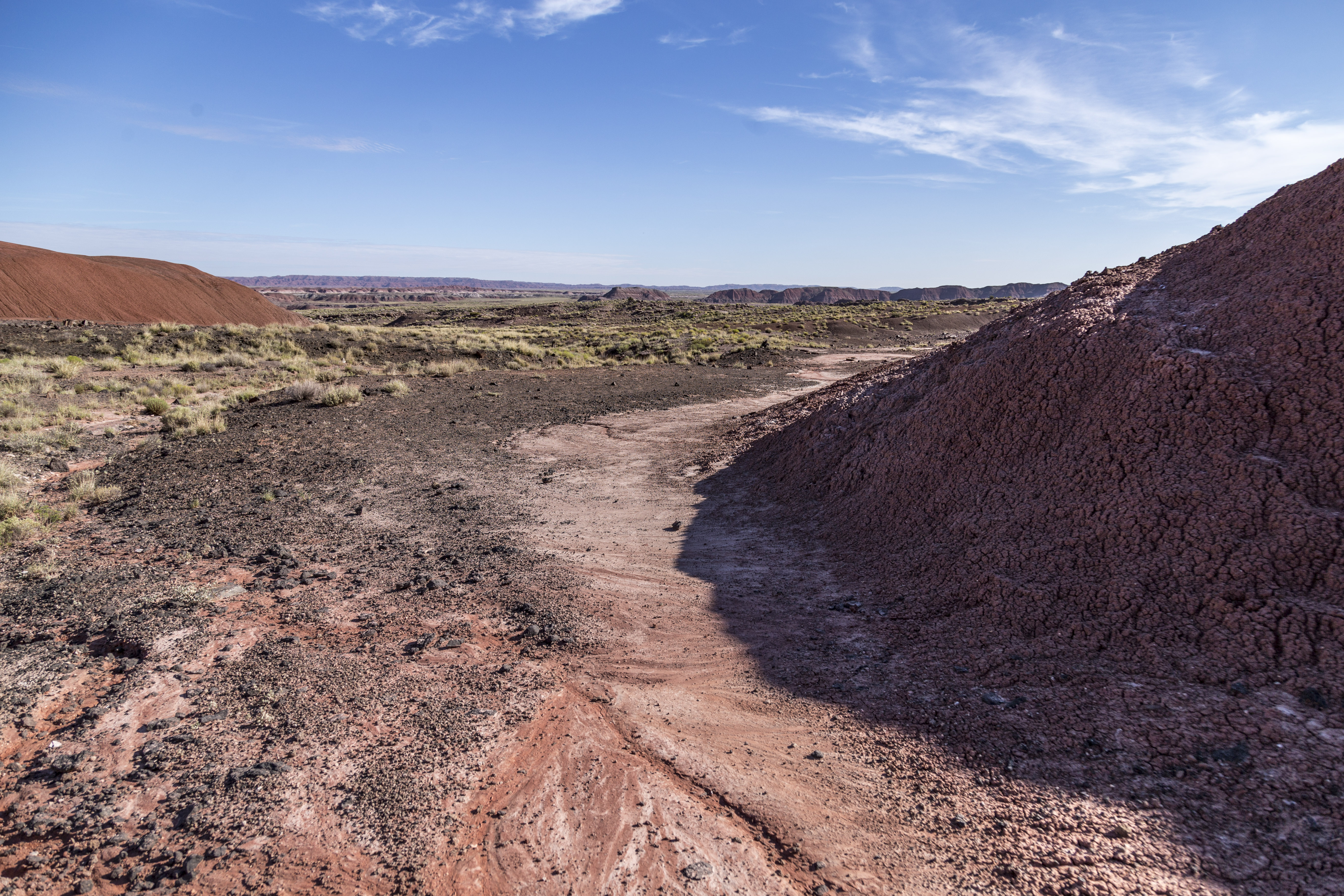
PEFO Audio Tour North Stop 1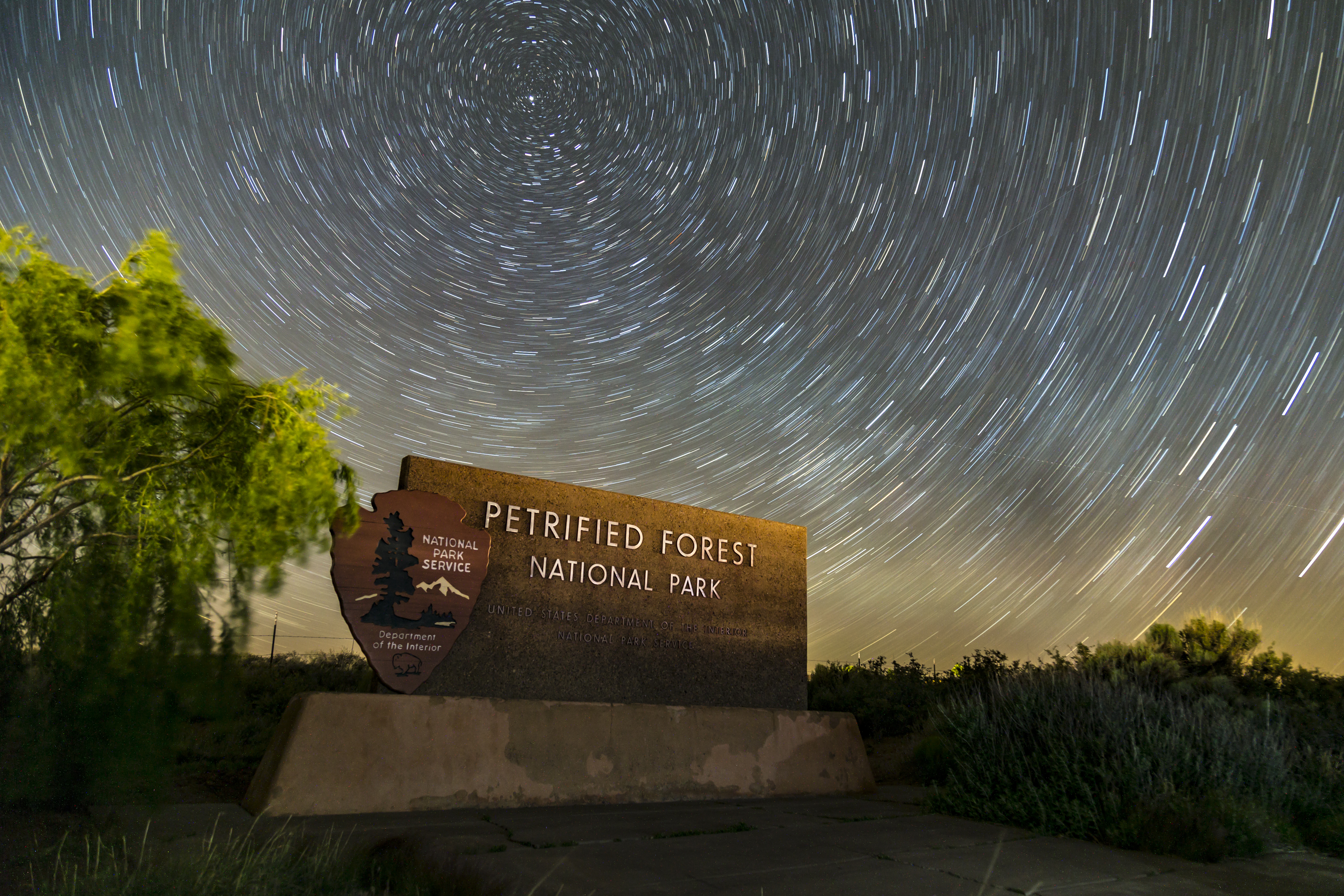
PEFO Audio Tour North Stop 10 and South Stop 23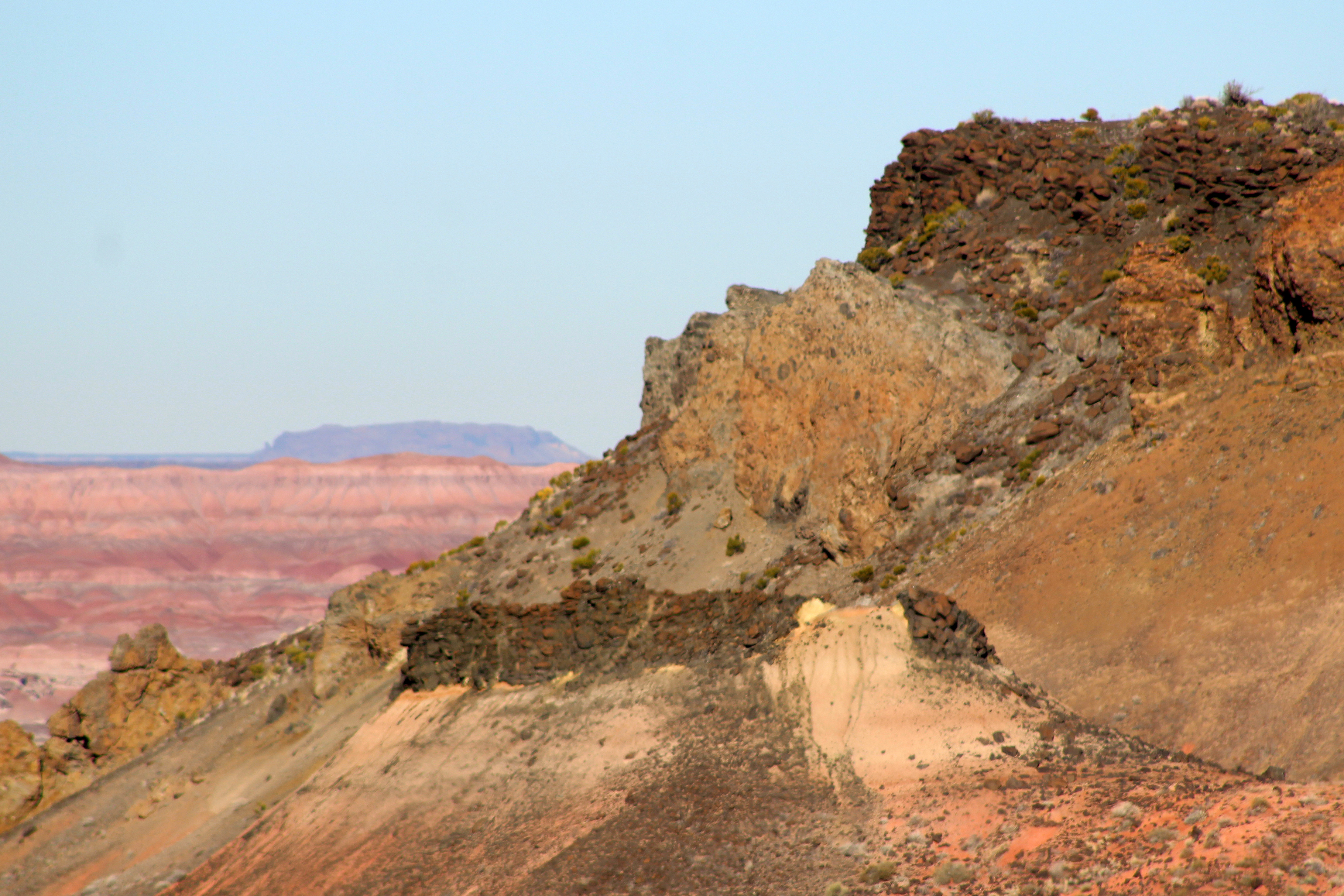
PEFO Audio Tour North Stop 11 and South Stop 22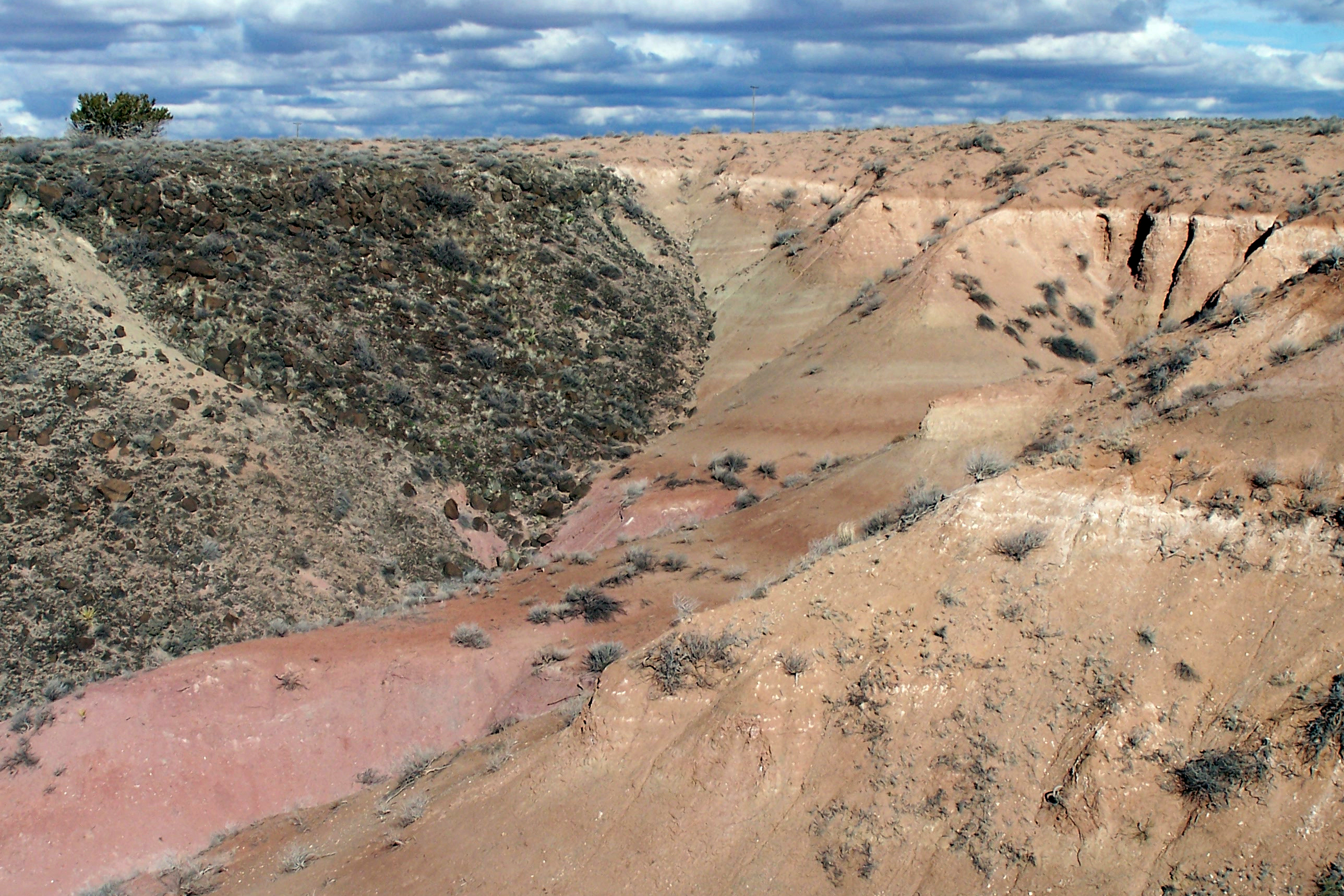
PEFO Audio Tour North Stop 12 and South Stop 21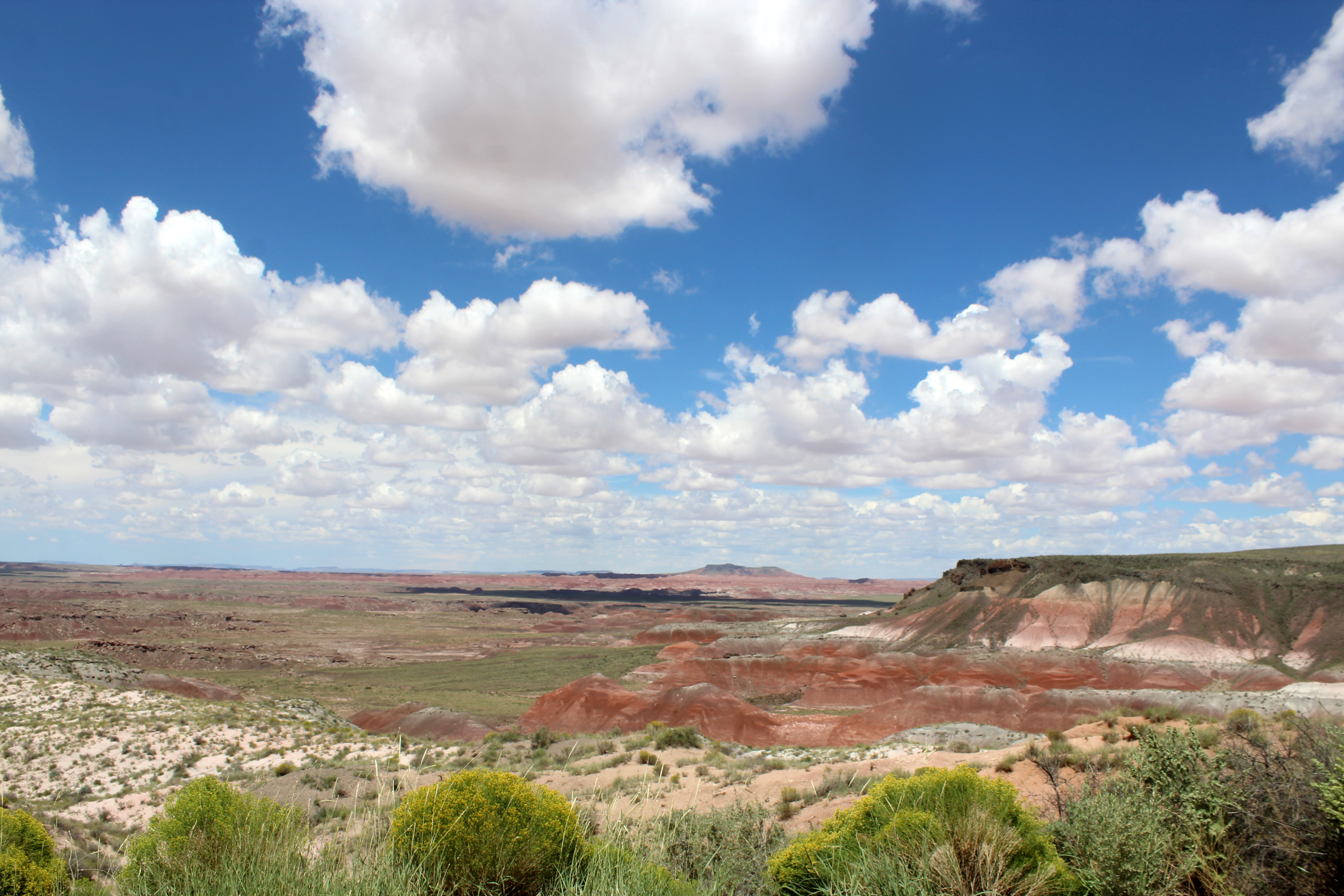
PEFO Audio Tour North Stop 13 and South Stop 20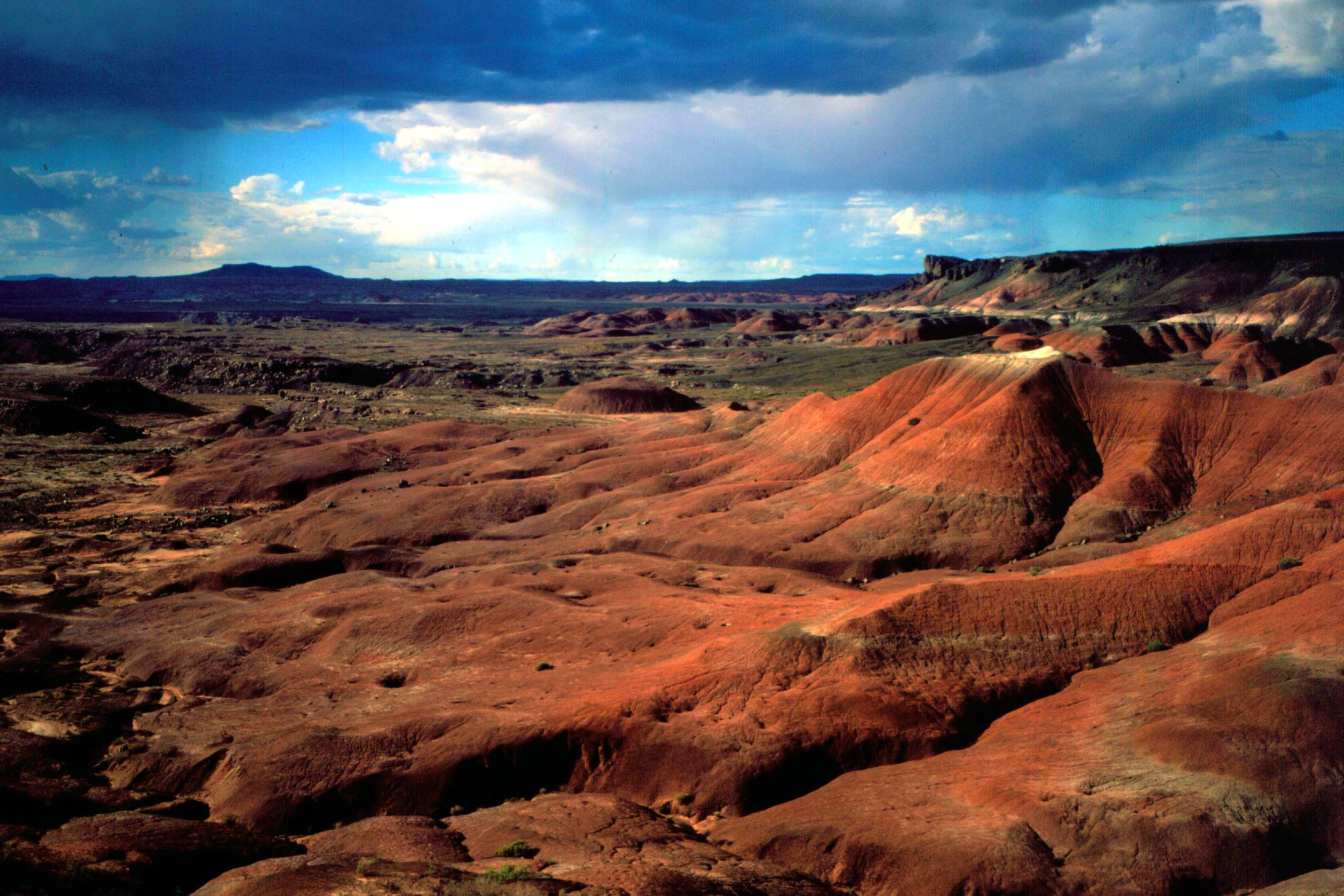
PEFO Audio Tour North Stop 14 and South Stop 19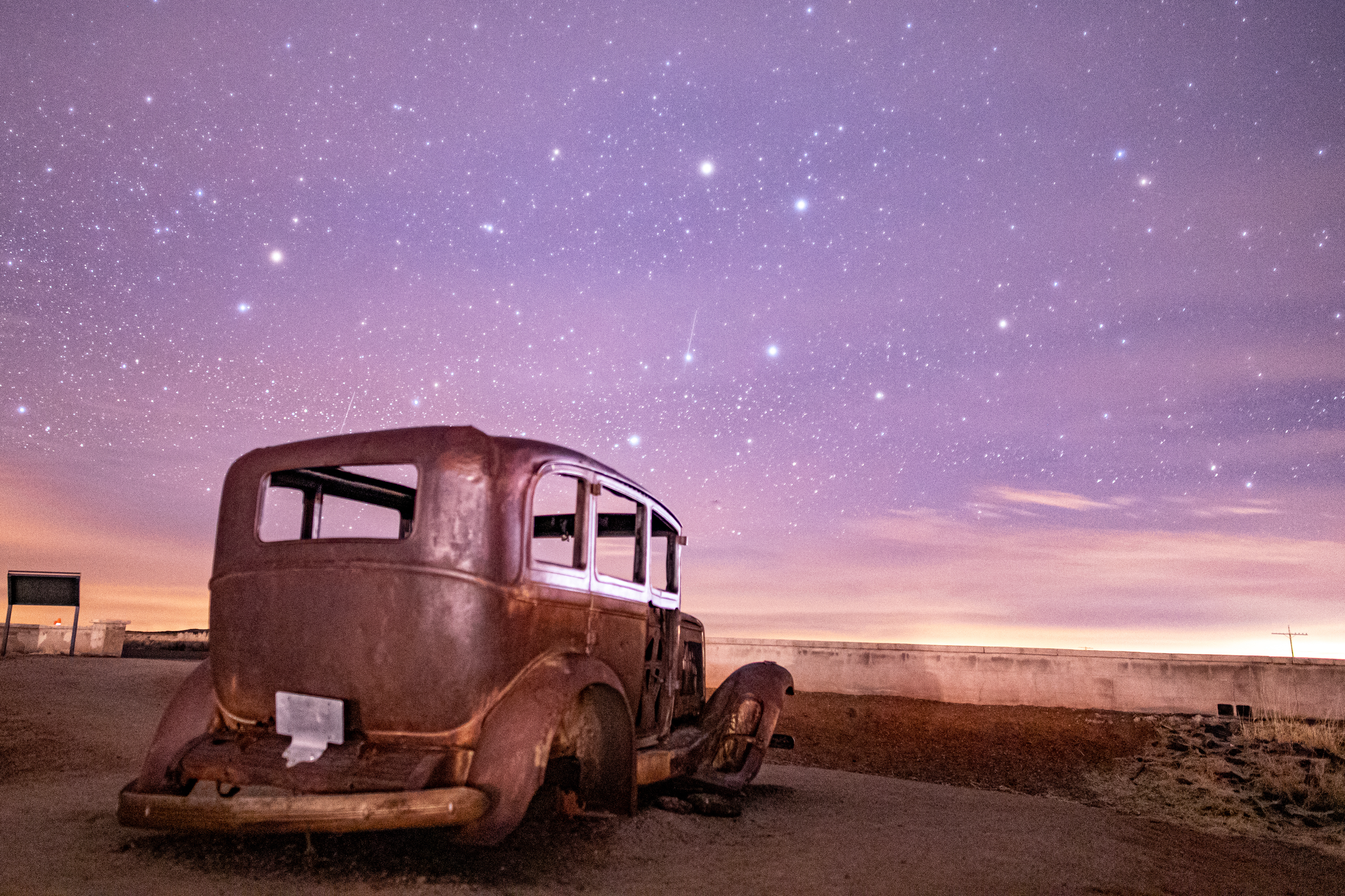
PEFO Audio Tour North Stop 15 and South Stop 18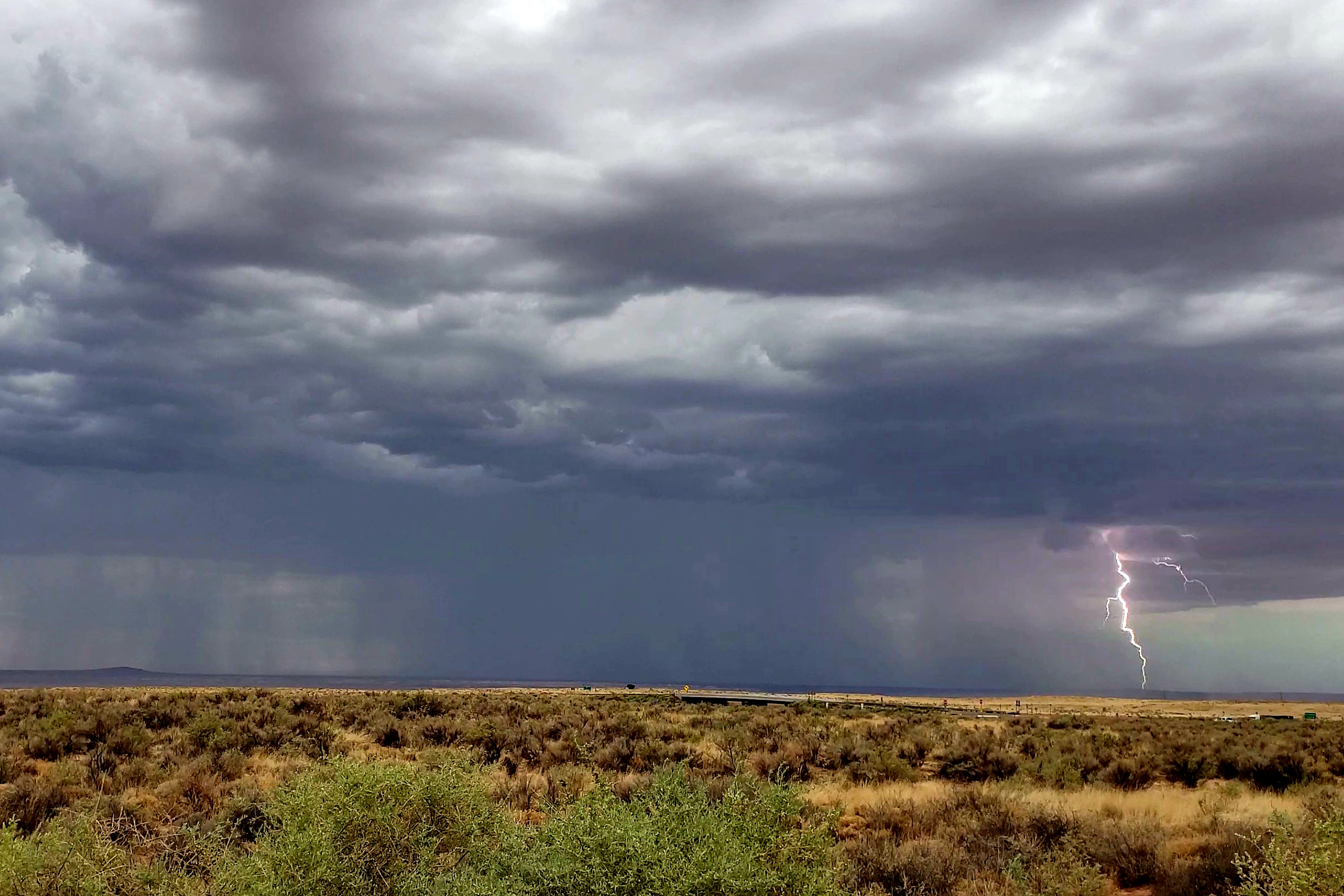
PEFO Audio Tour North Stop 16 and South Stop 17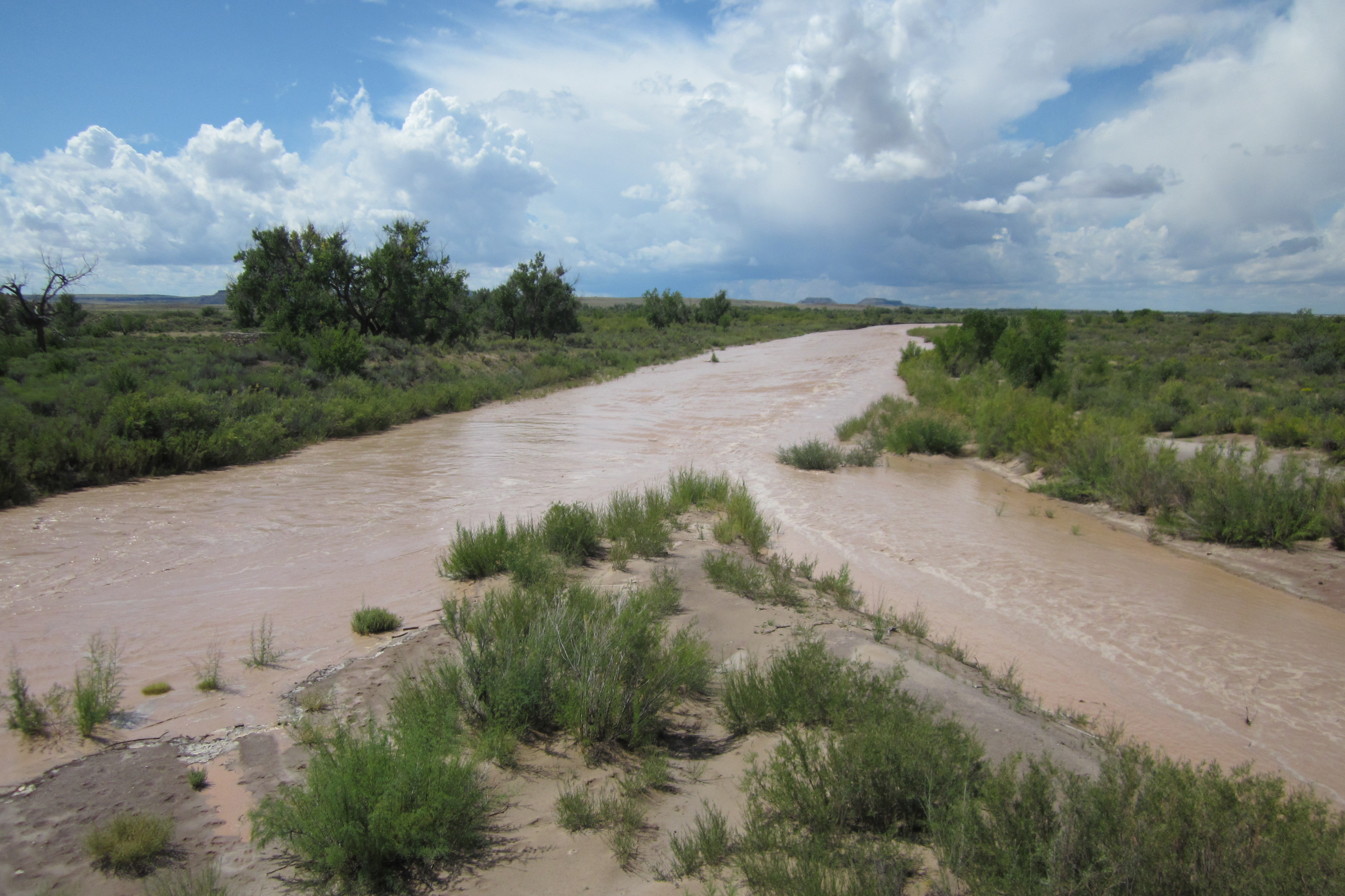
PEFO Audio Tour North Stop 17 and South Stop 16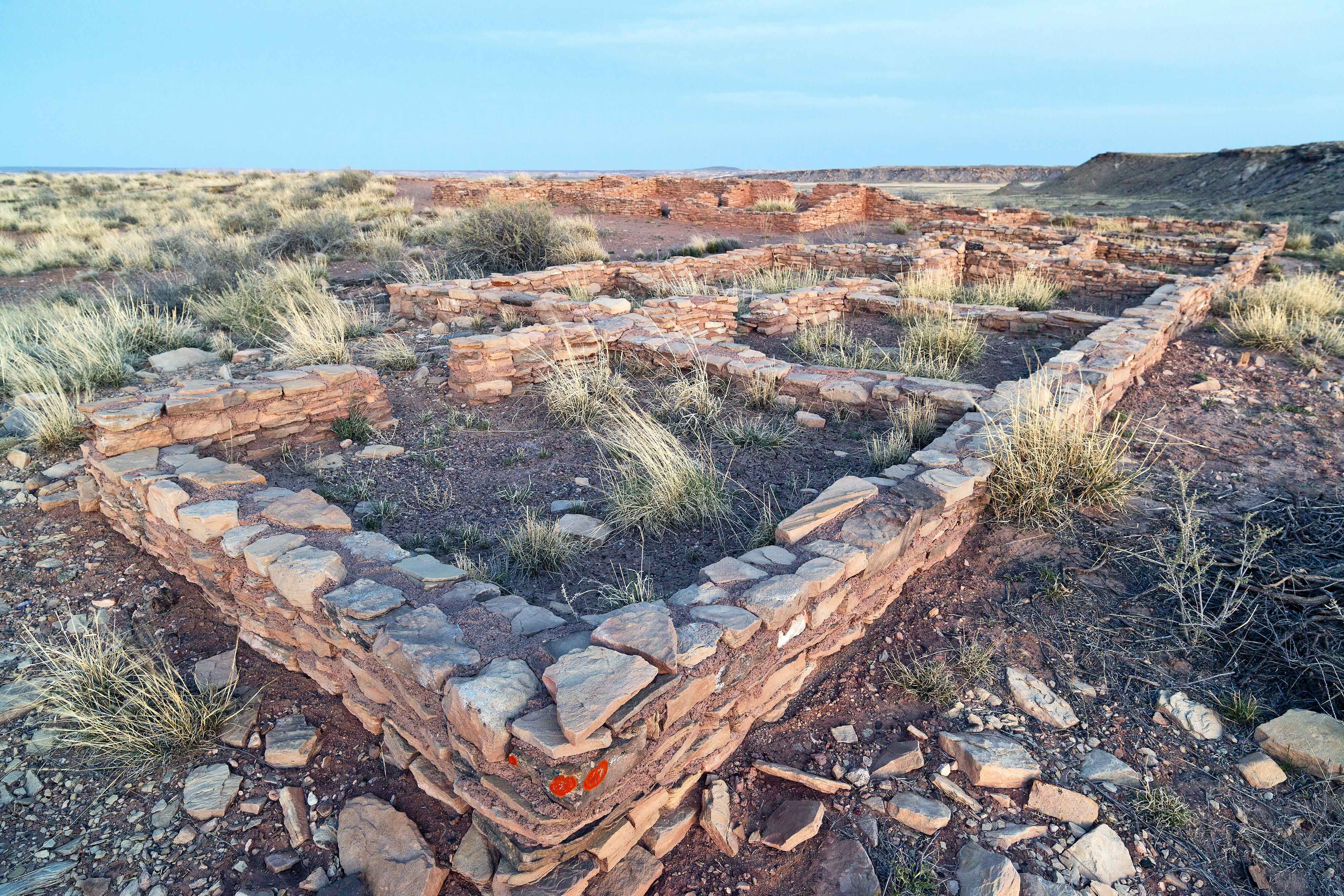
PEFO Audio Tour North Stop 18 and South Stop 15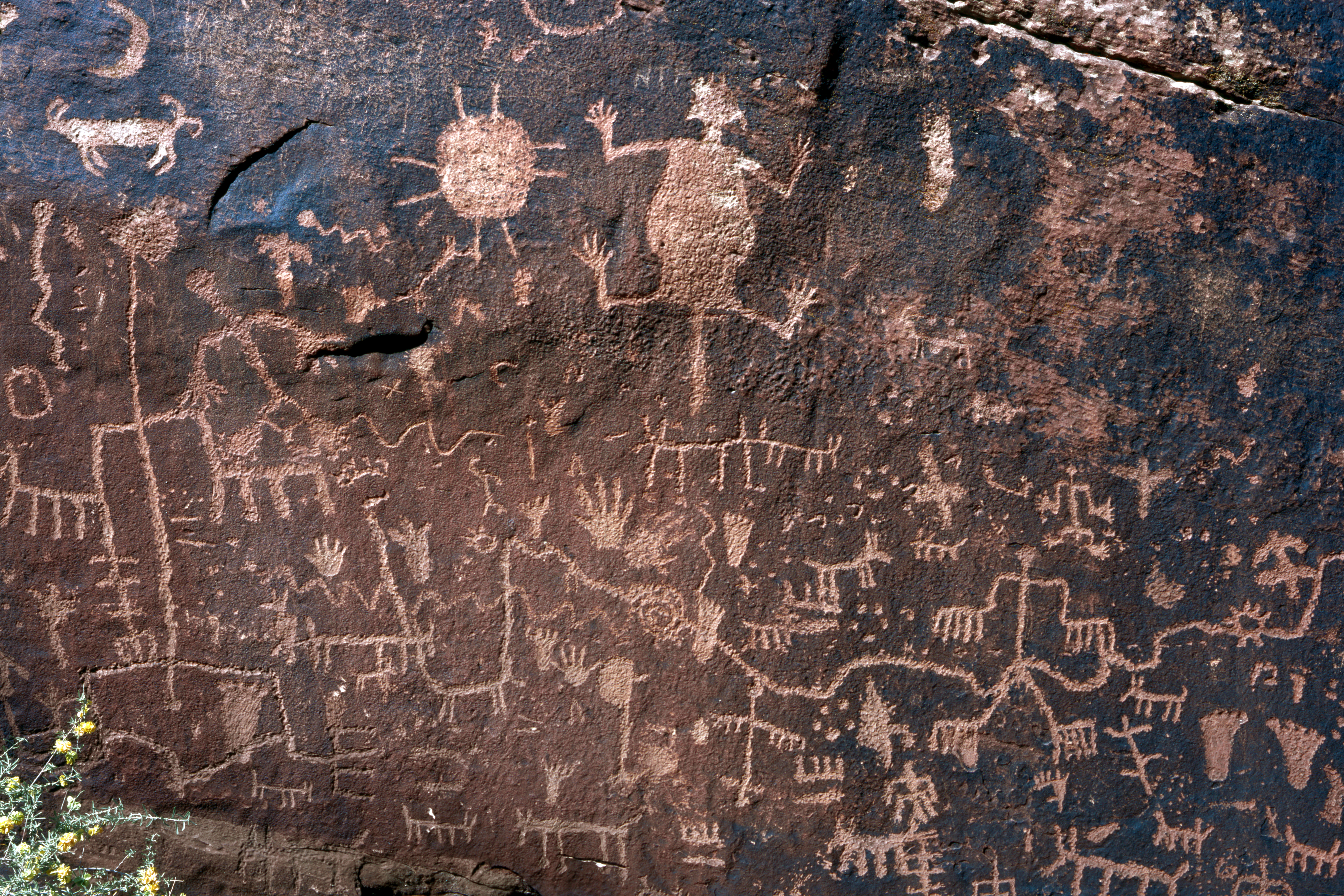
PEFO Audio Tour North Stop 19 and South Stop 14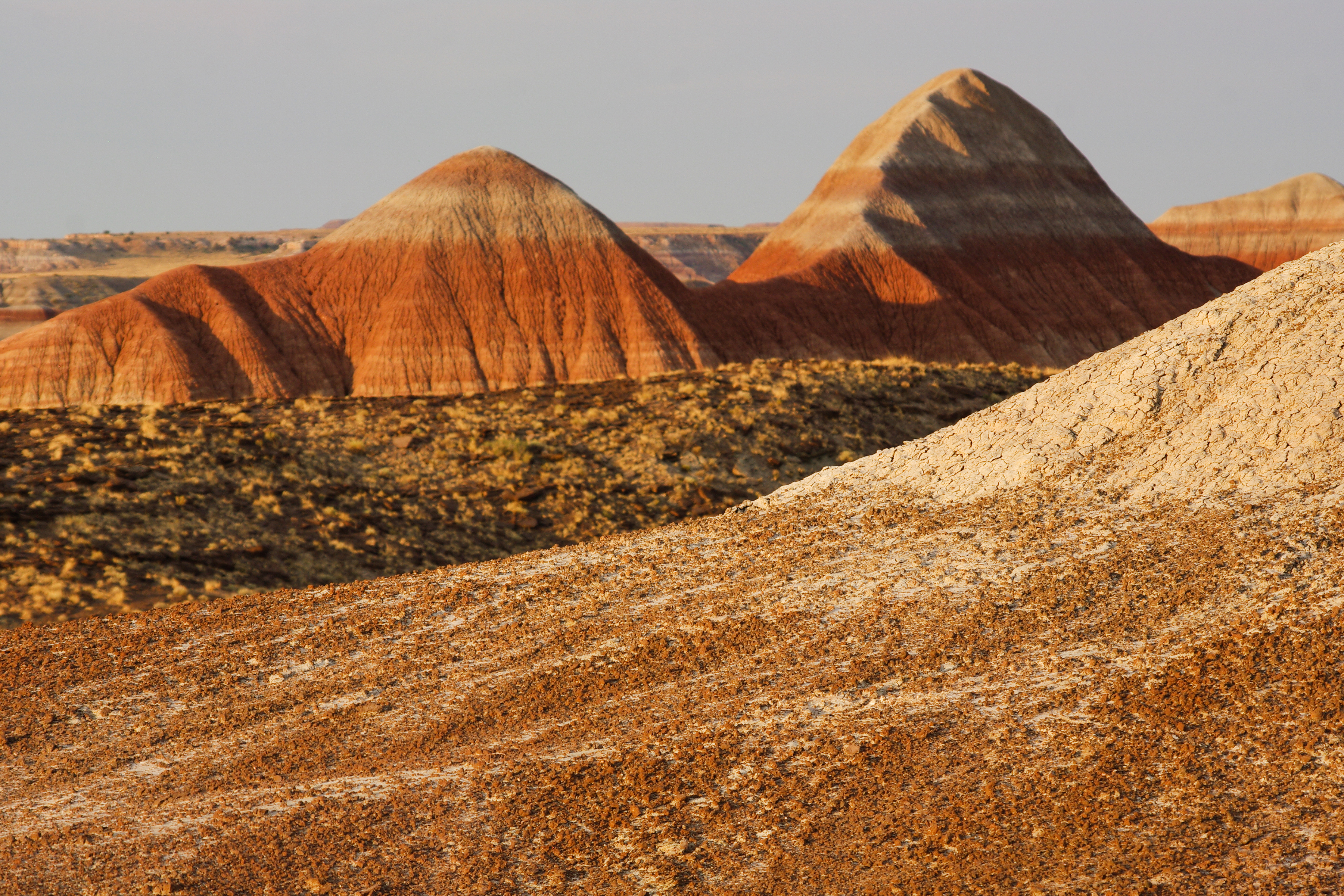
PEFO Audio Tour North Stop 2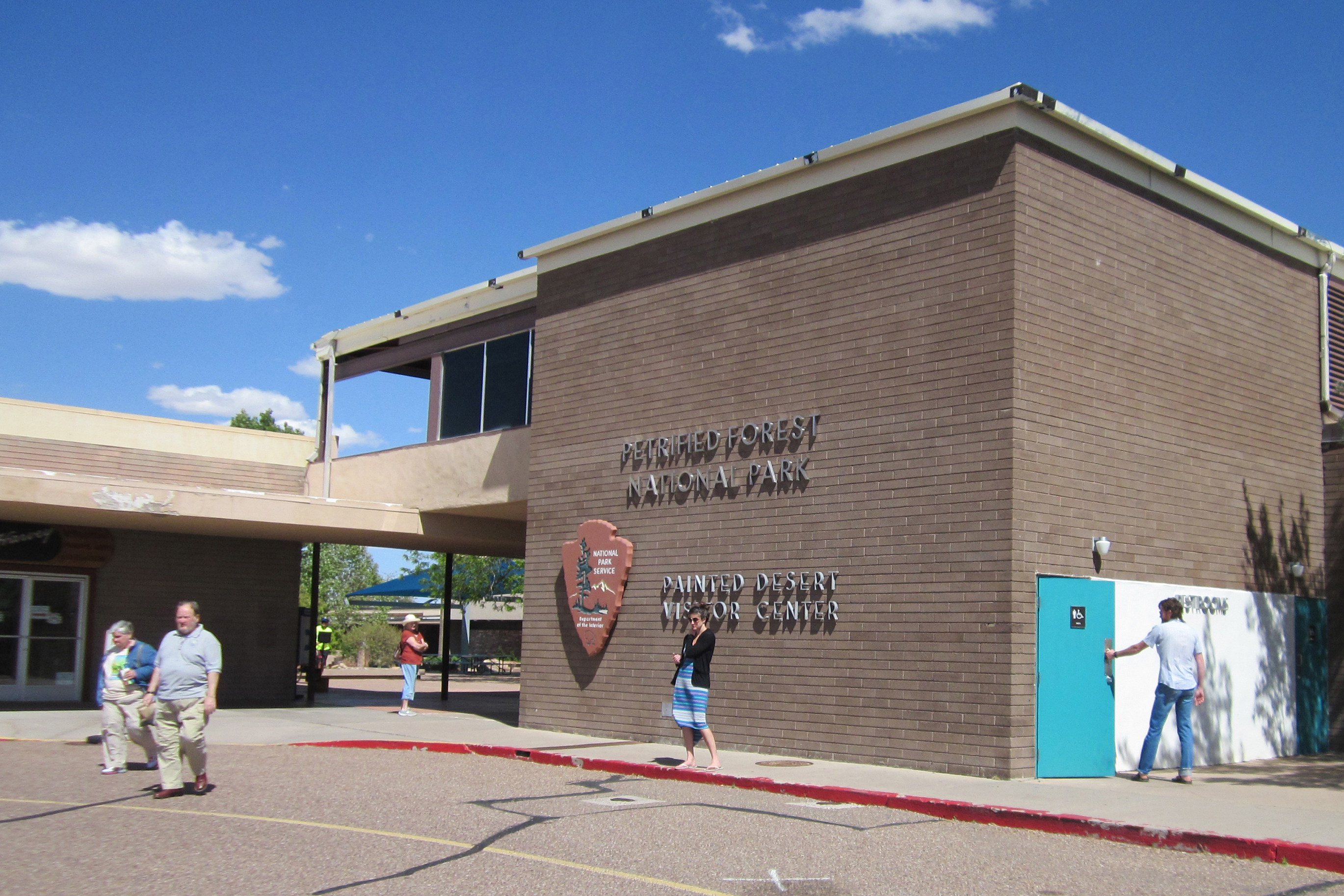
PEFO Audio Tour North Stop 20 and South Stop 13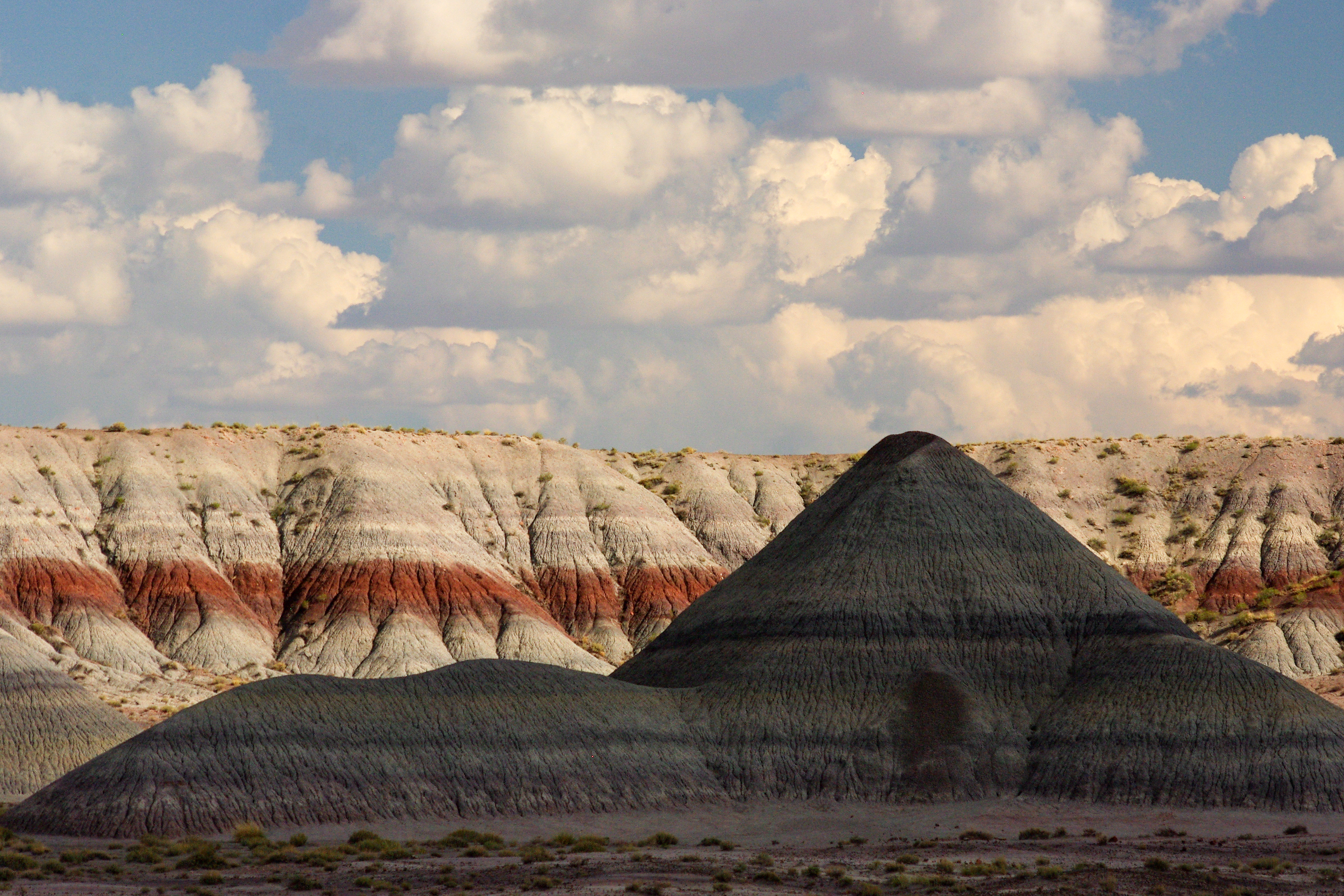
PEFO Audio Tour North Stop 21 and South Stop 12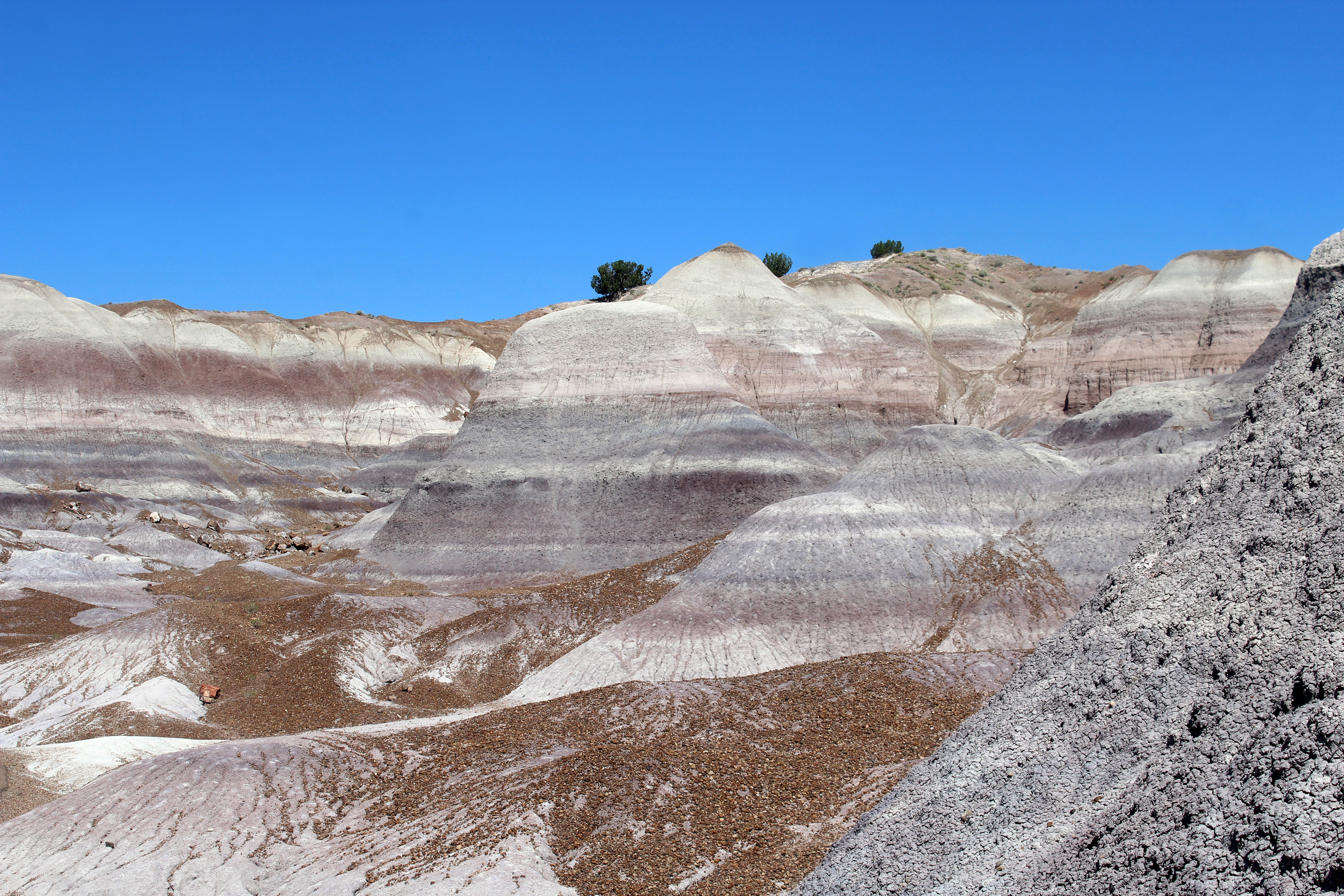
PEFO Audio Tour North Stop 22 and South Stop 11
PEFO Audio Tour North Stop 23 and South Stop 10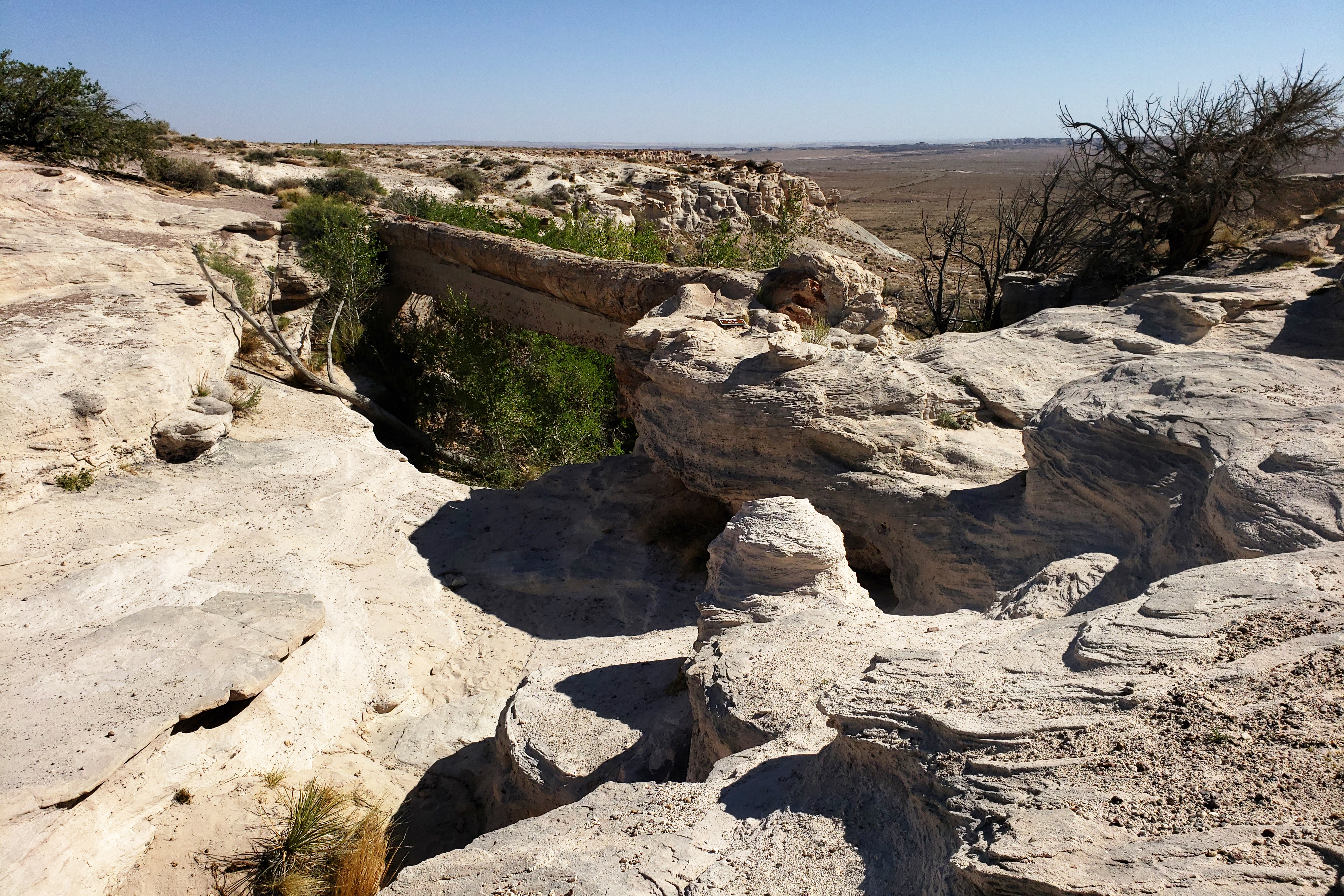
PEFO Audio Tour North Stop 24 and South Stop 9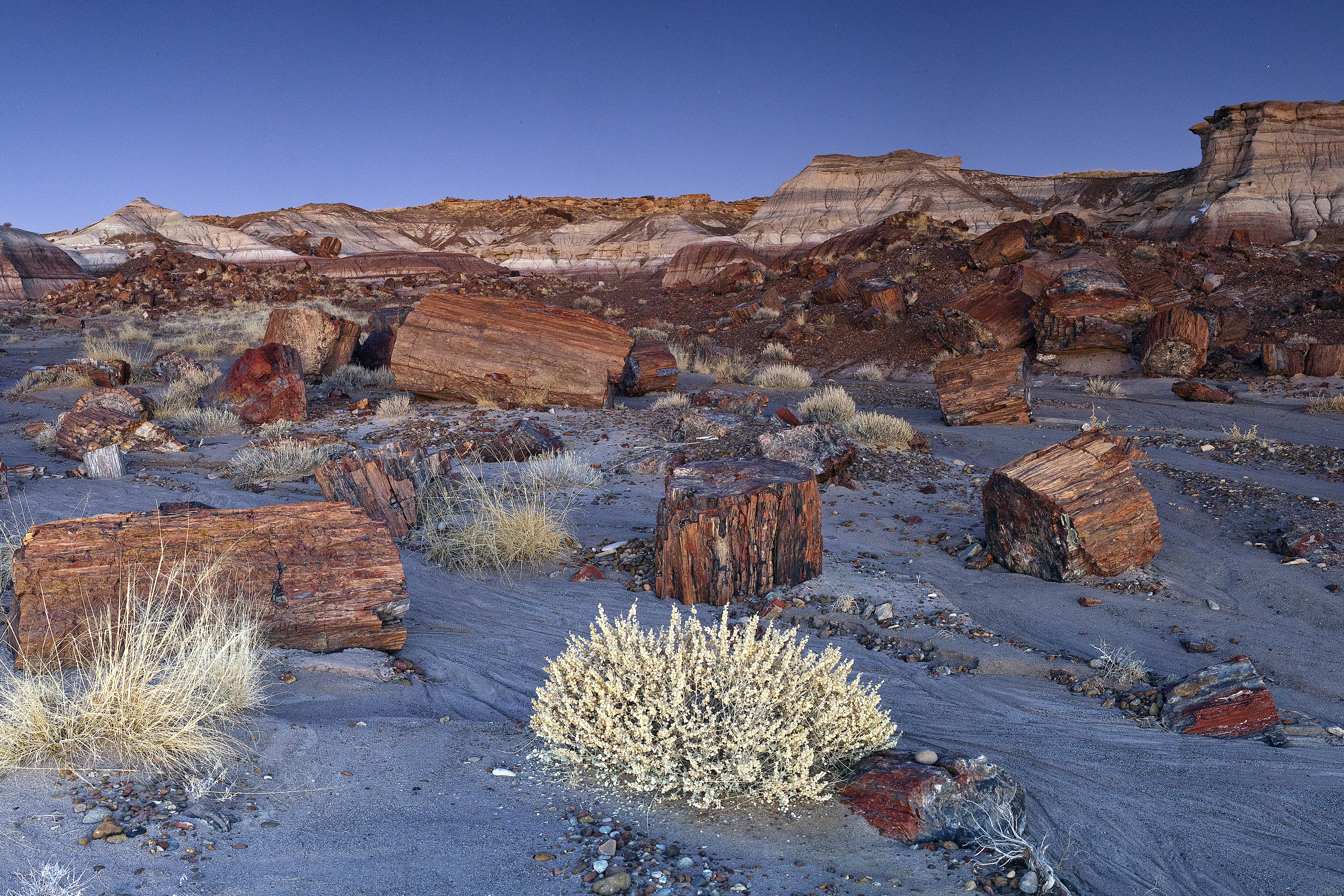
|
| Visitor Centers | Count: 3
Painted Desert Inn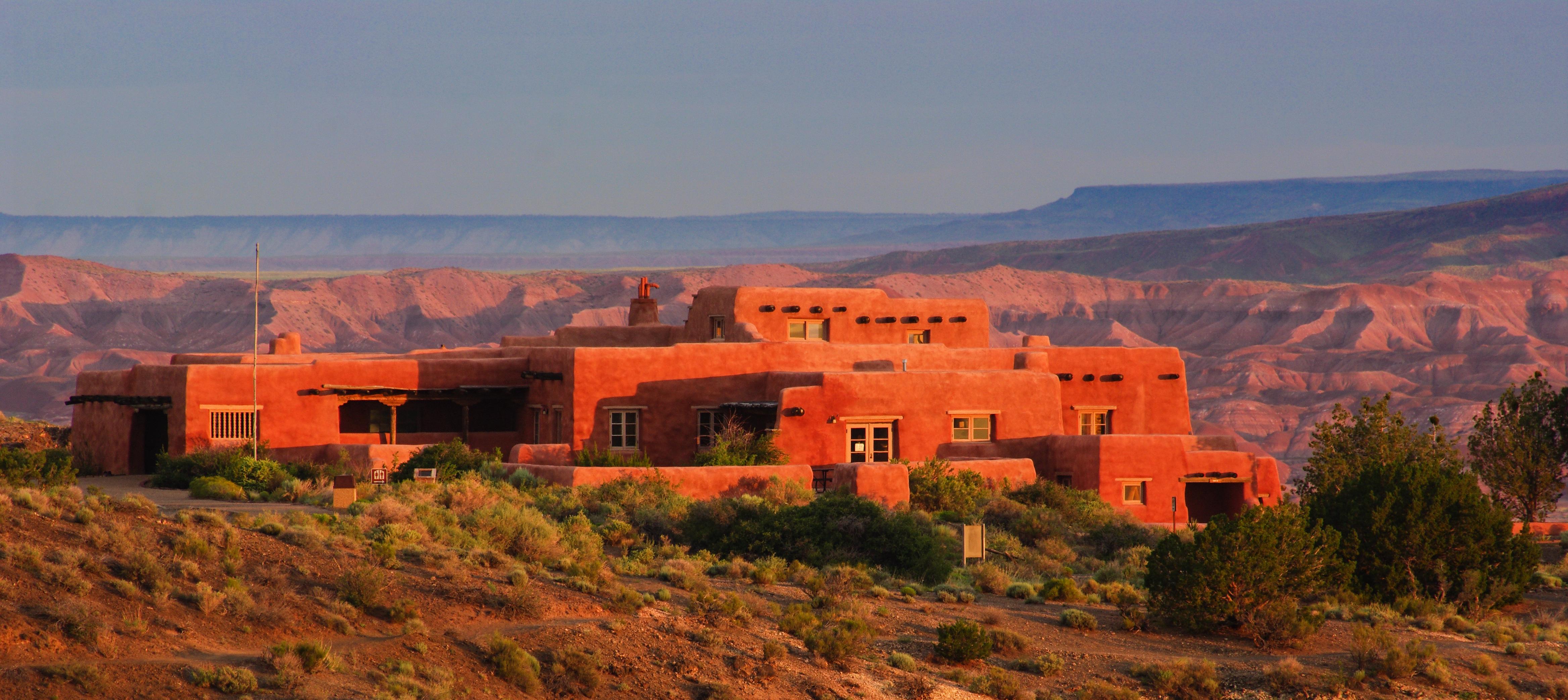
Painted Desert Visitor Center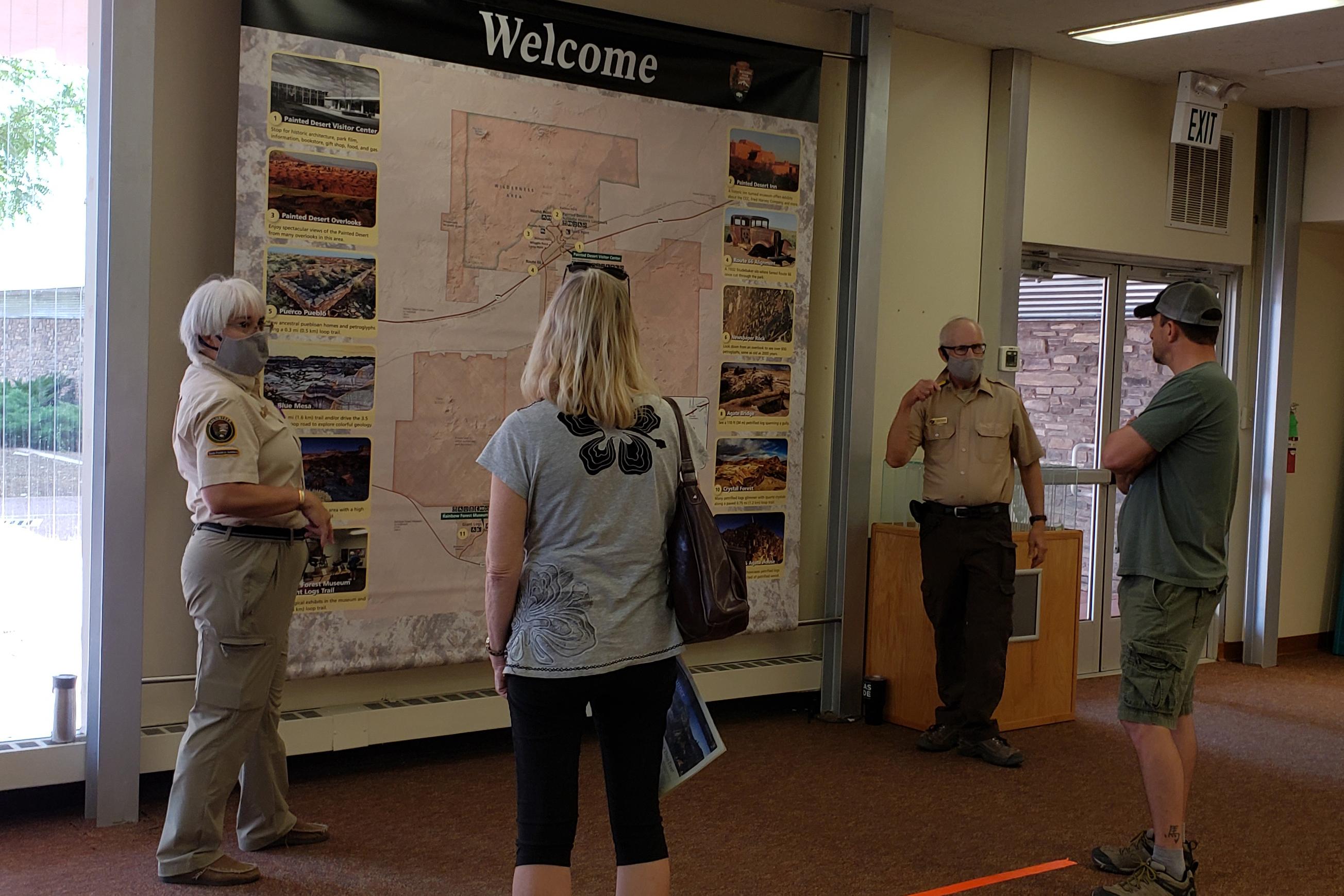
Rainbow Forest Museum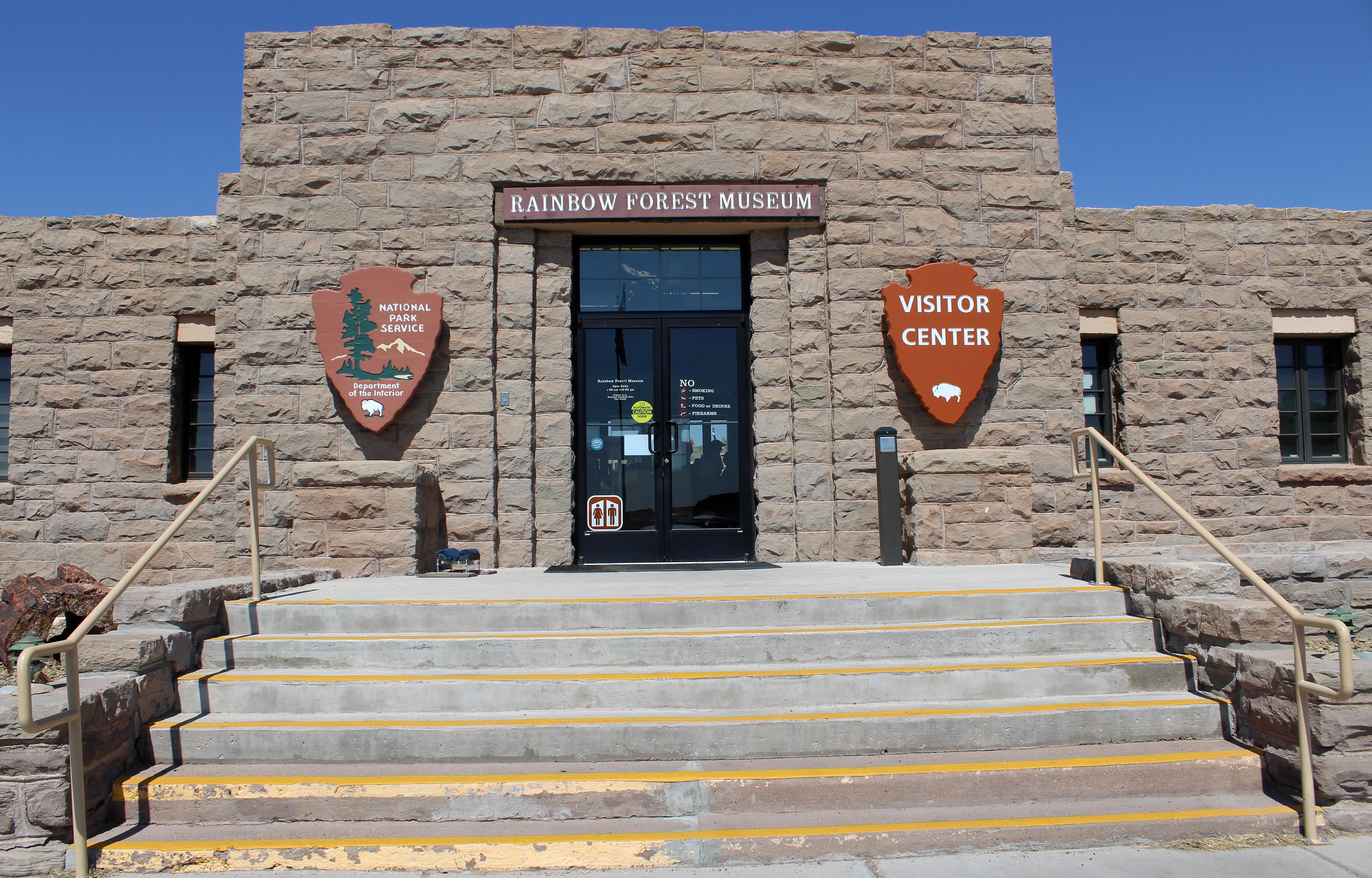
|
| Things to do | Count: 15
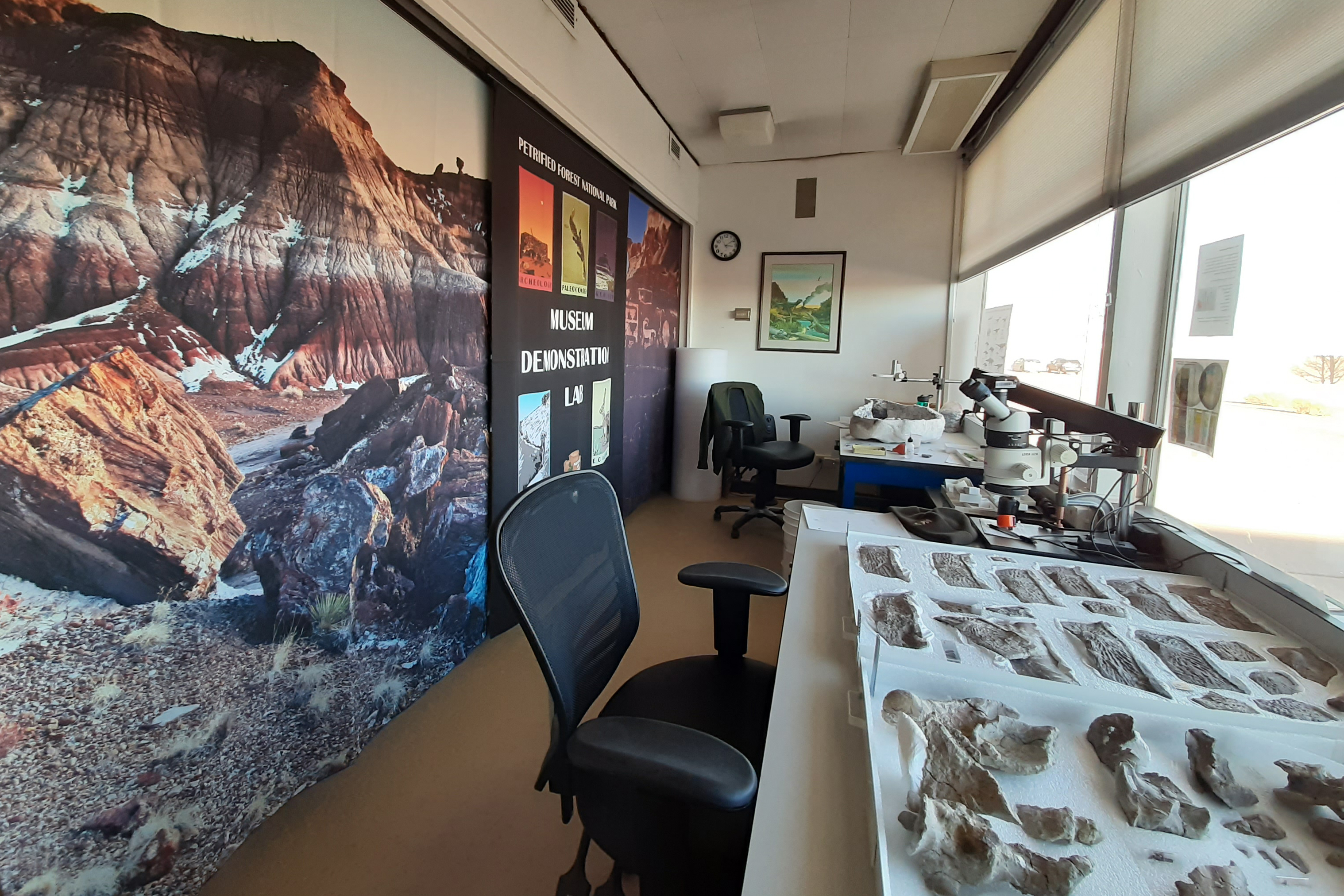
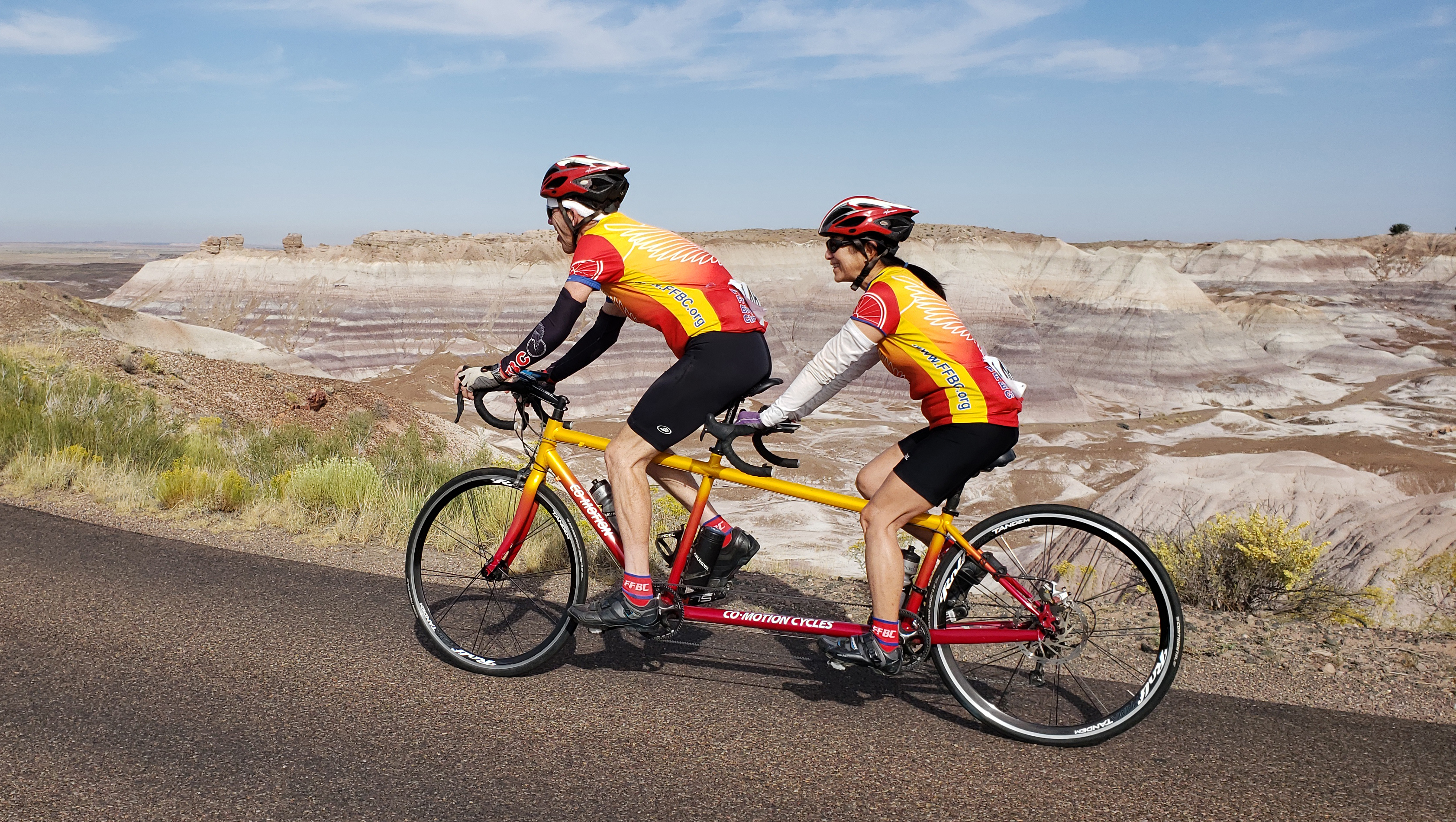
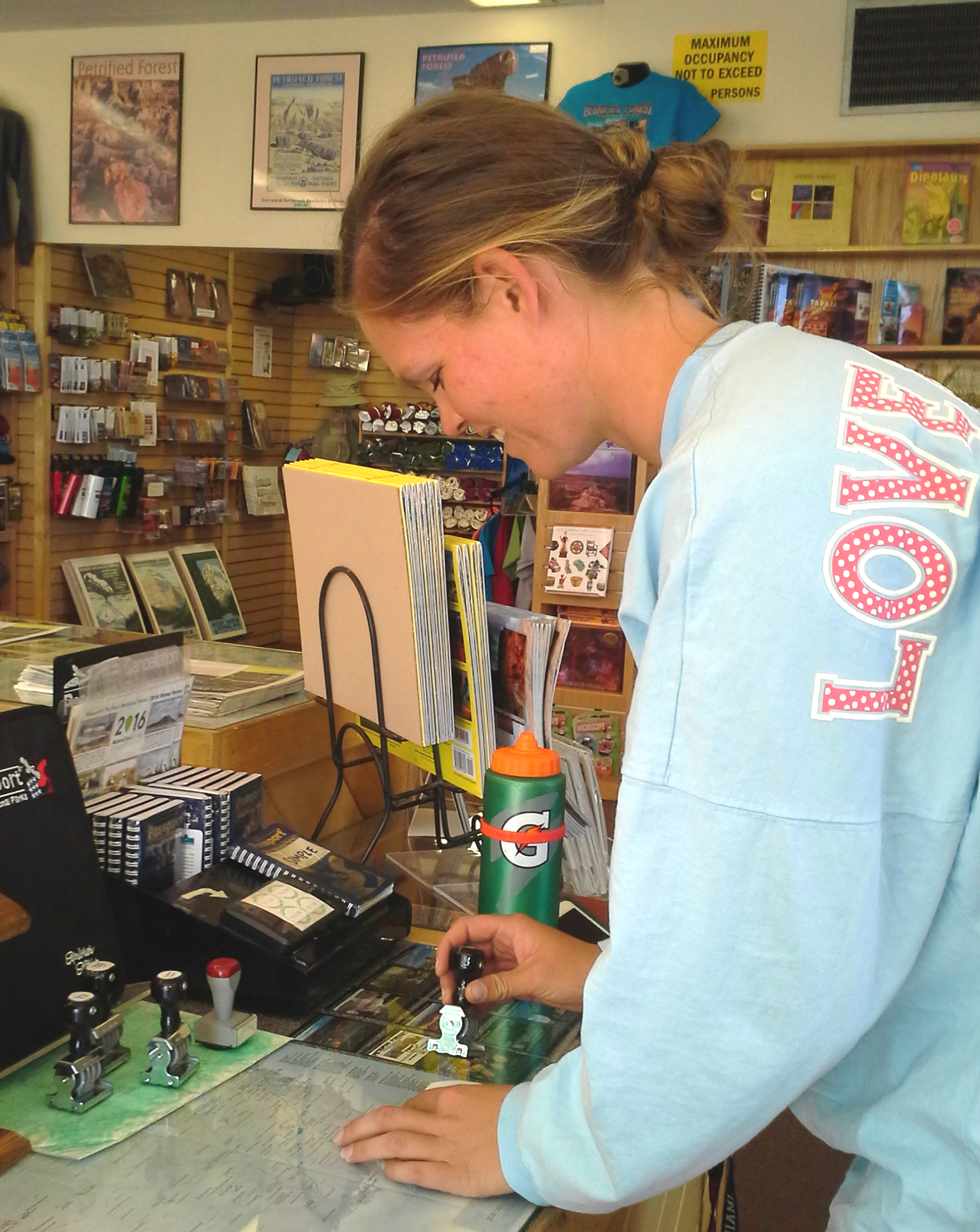

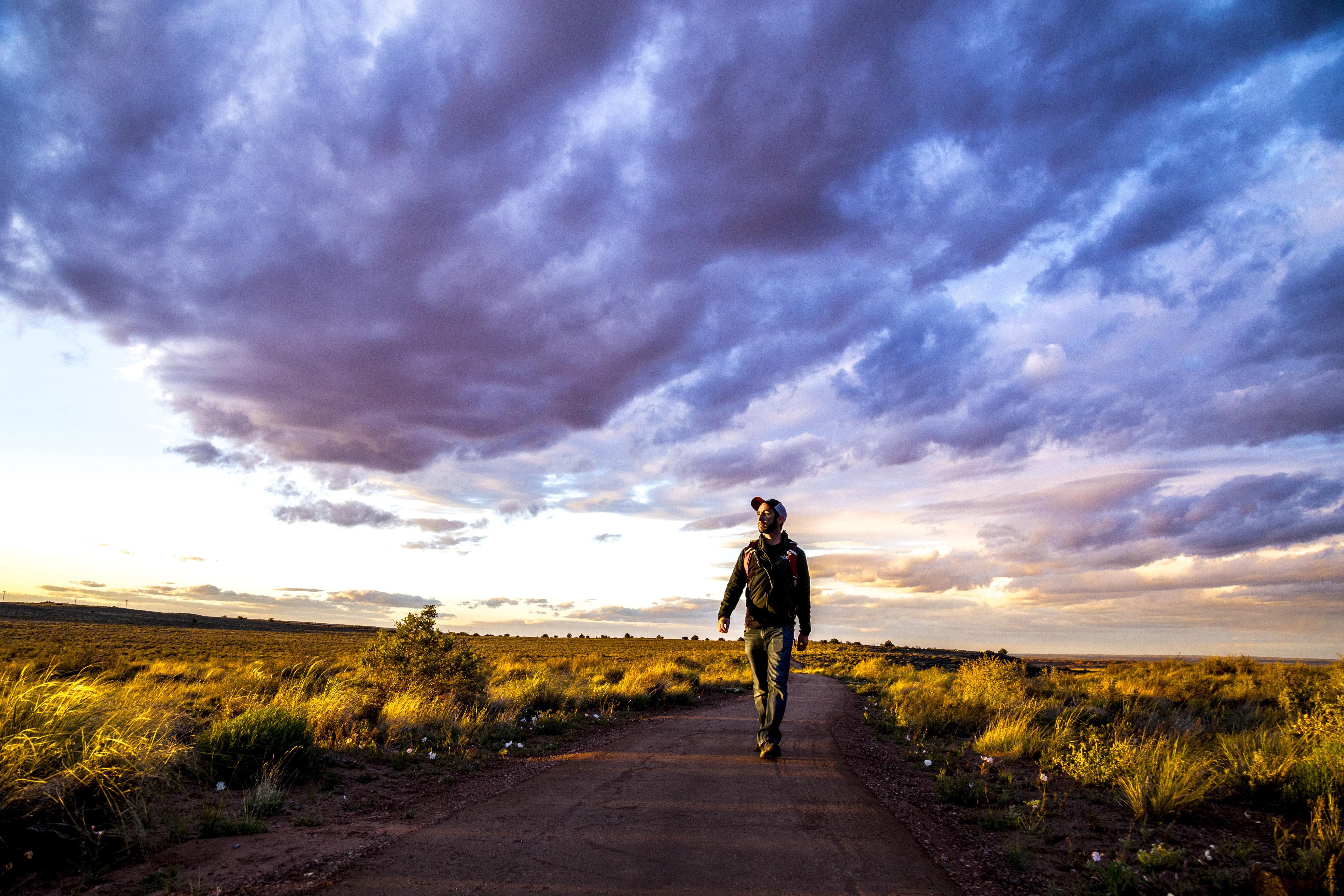
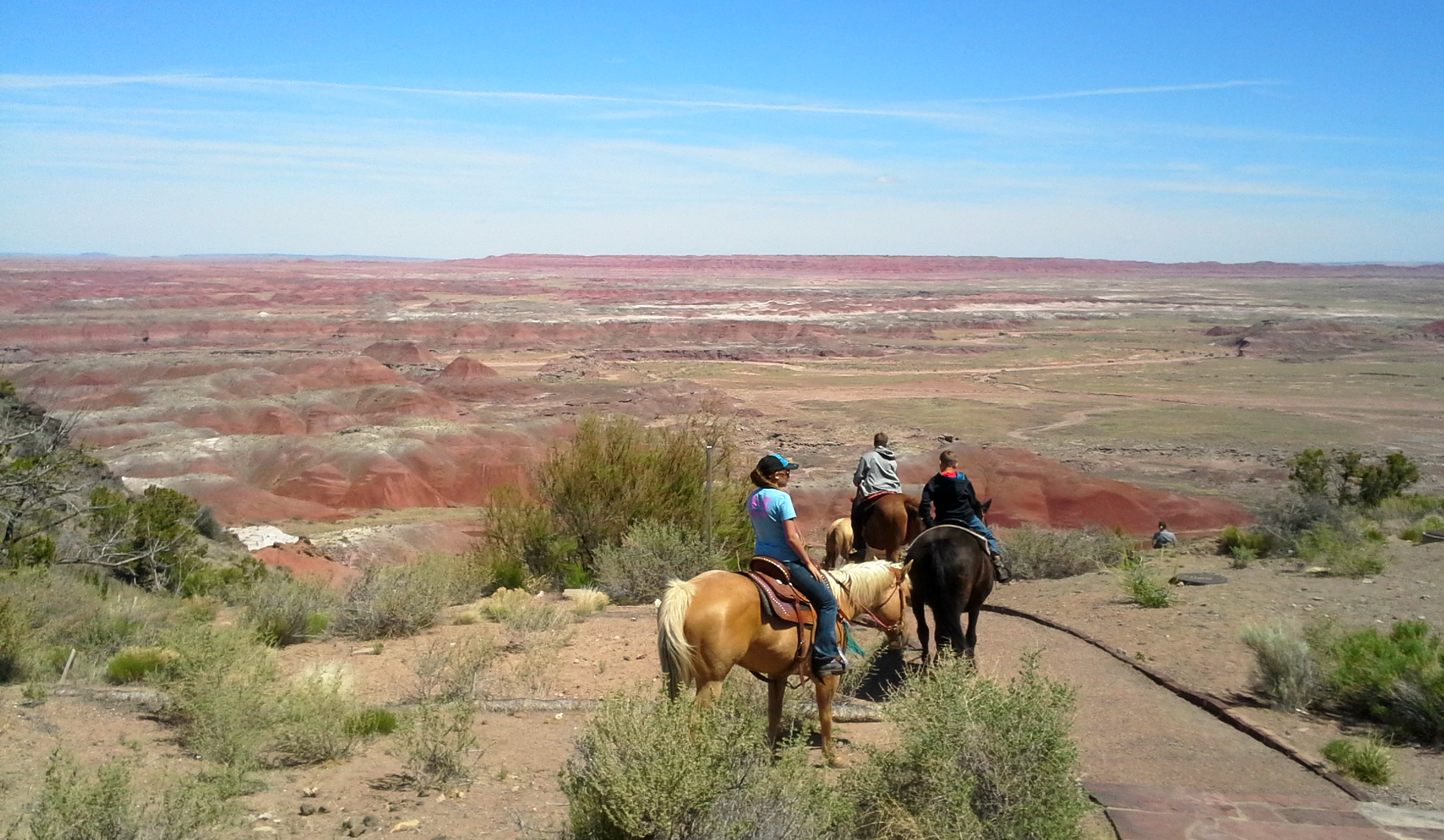
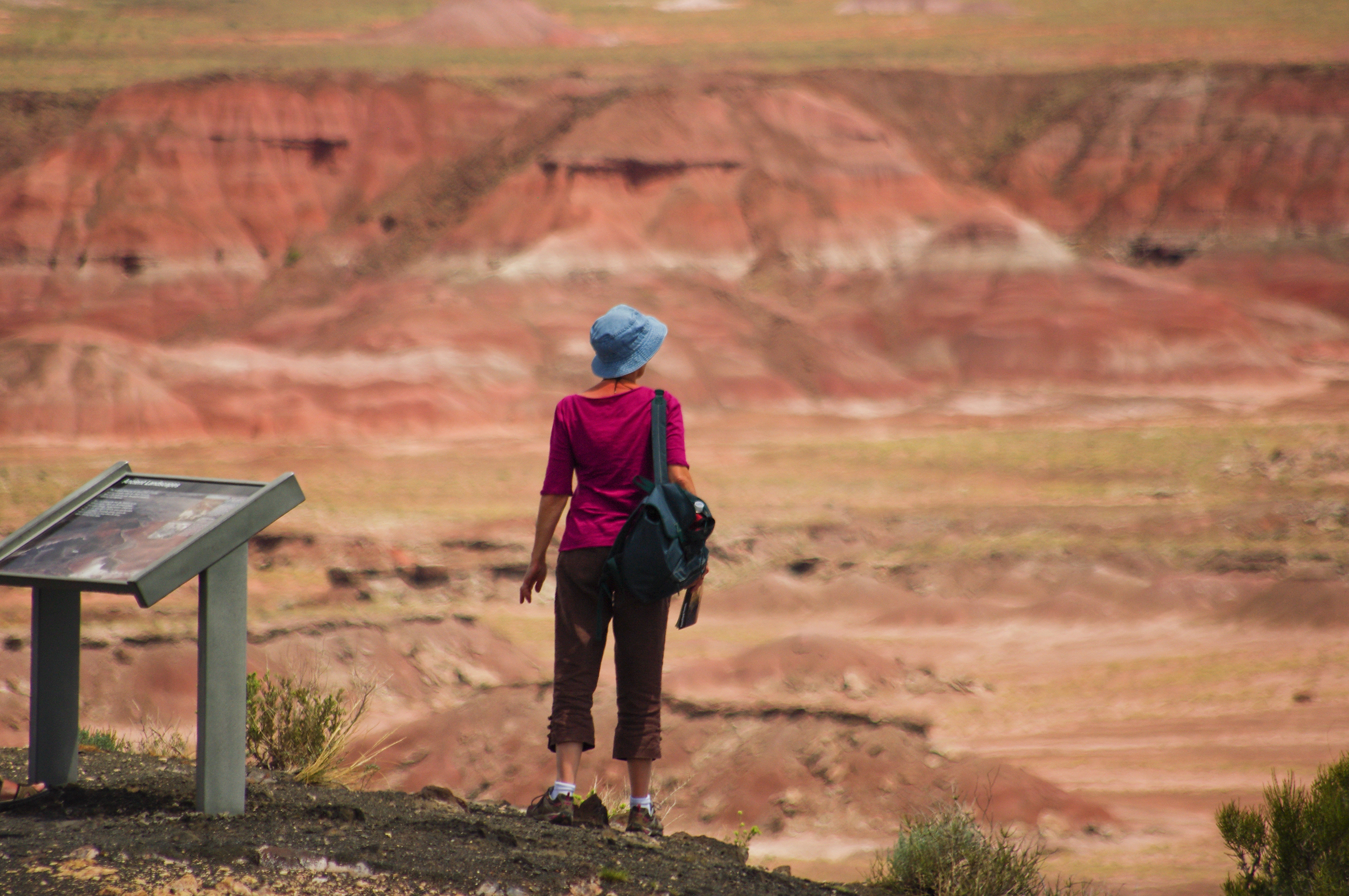
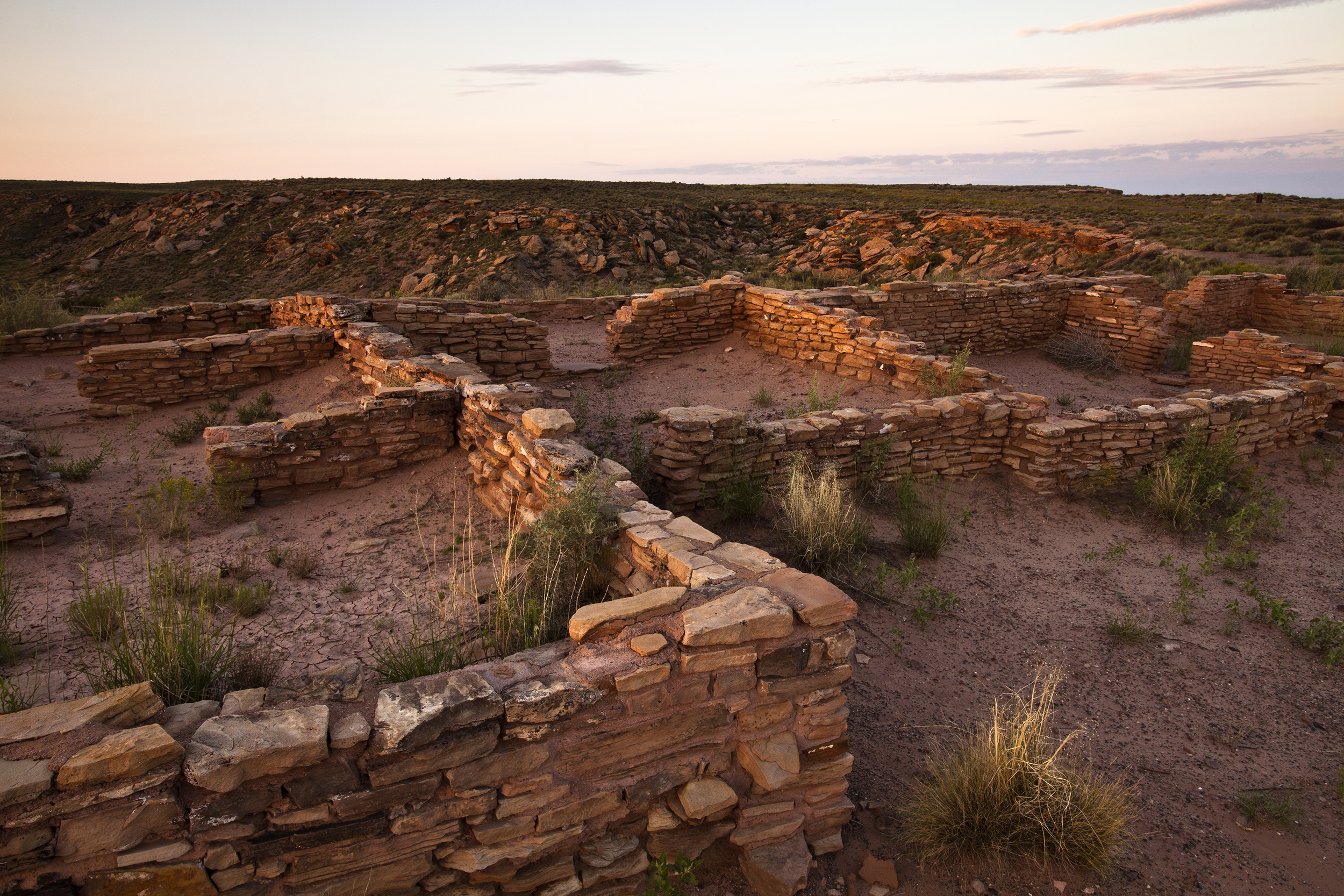
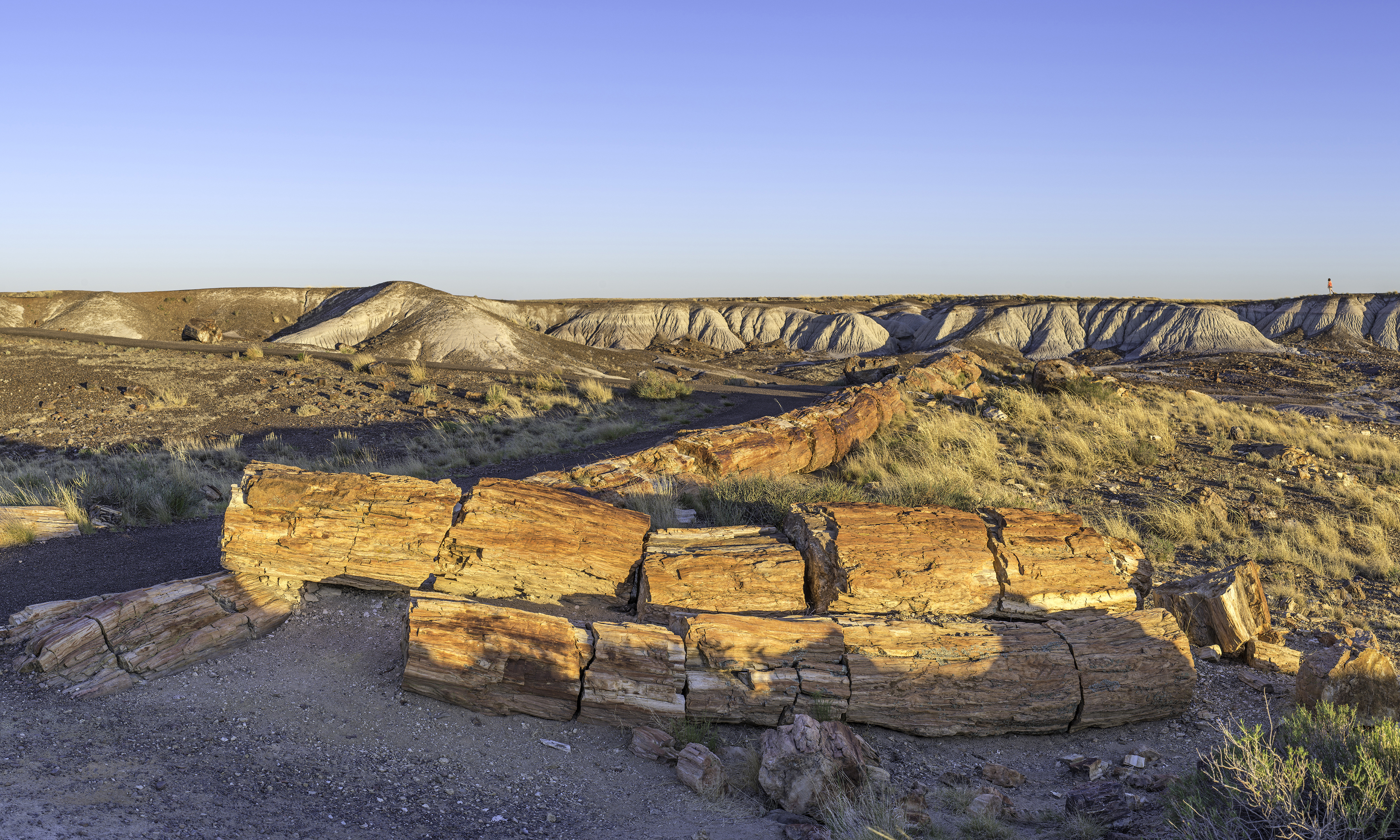
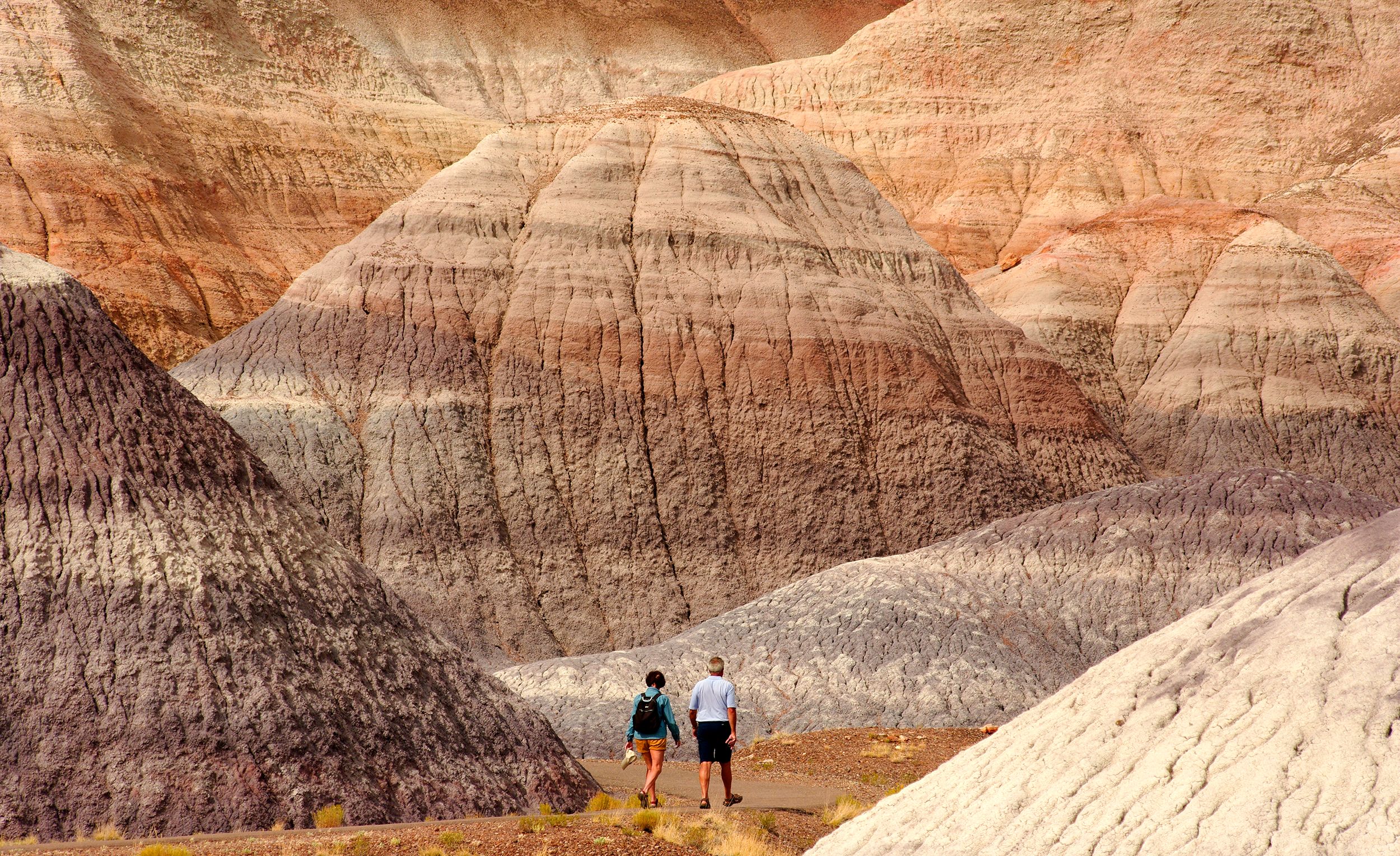
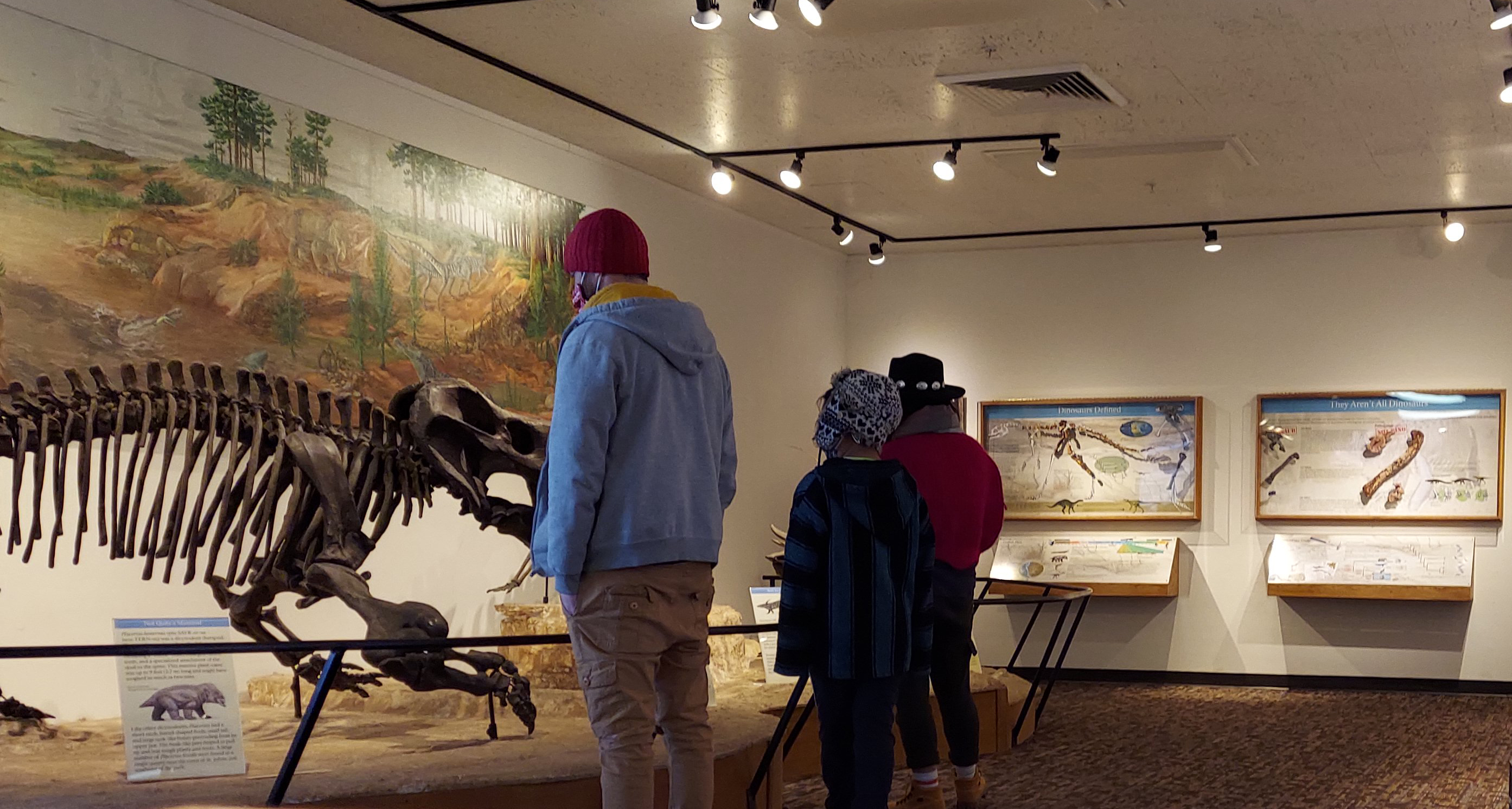
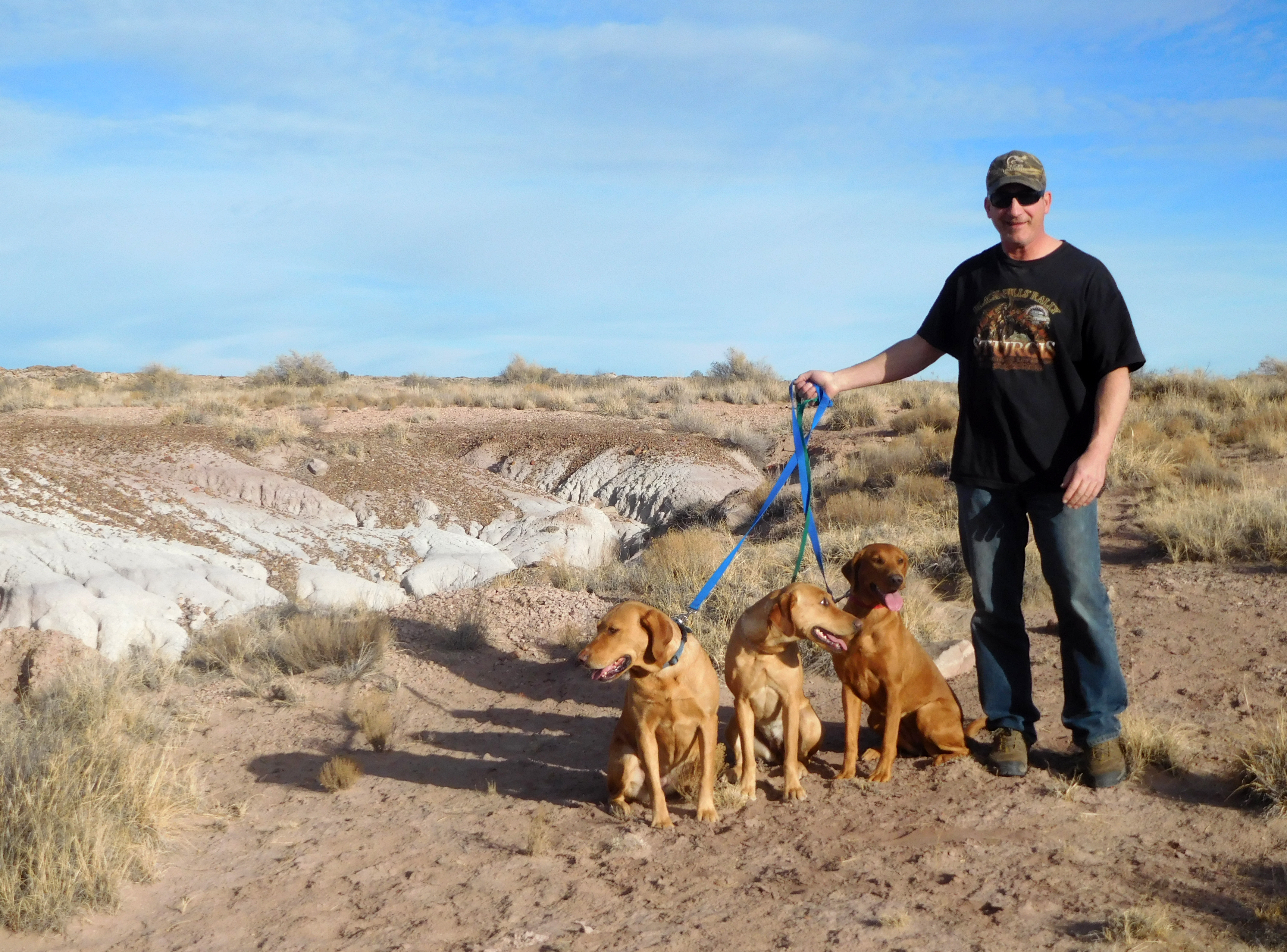
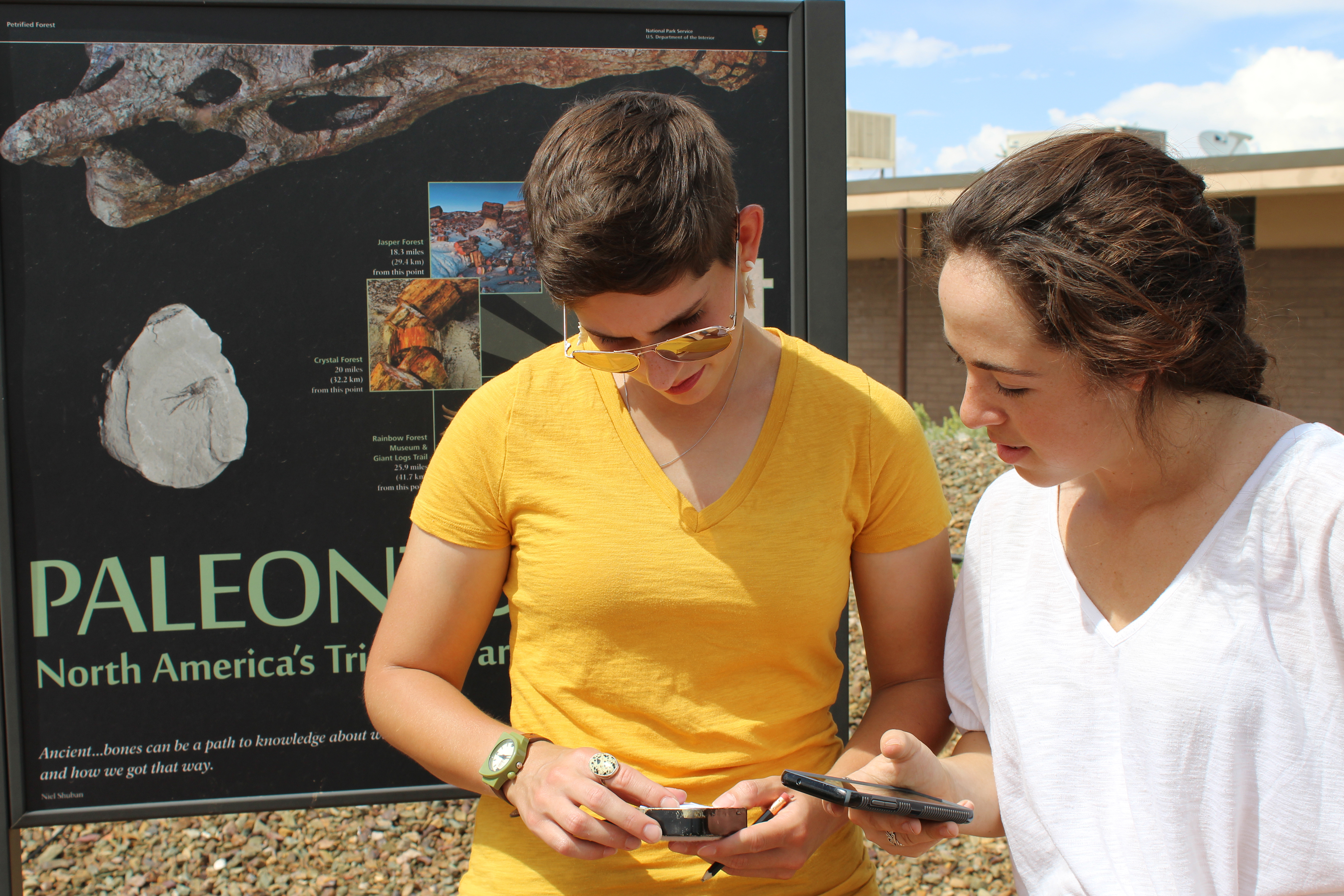
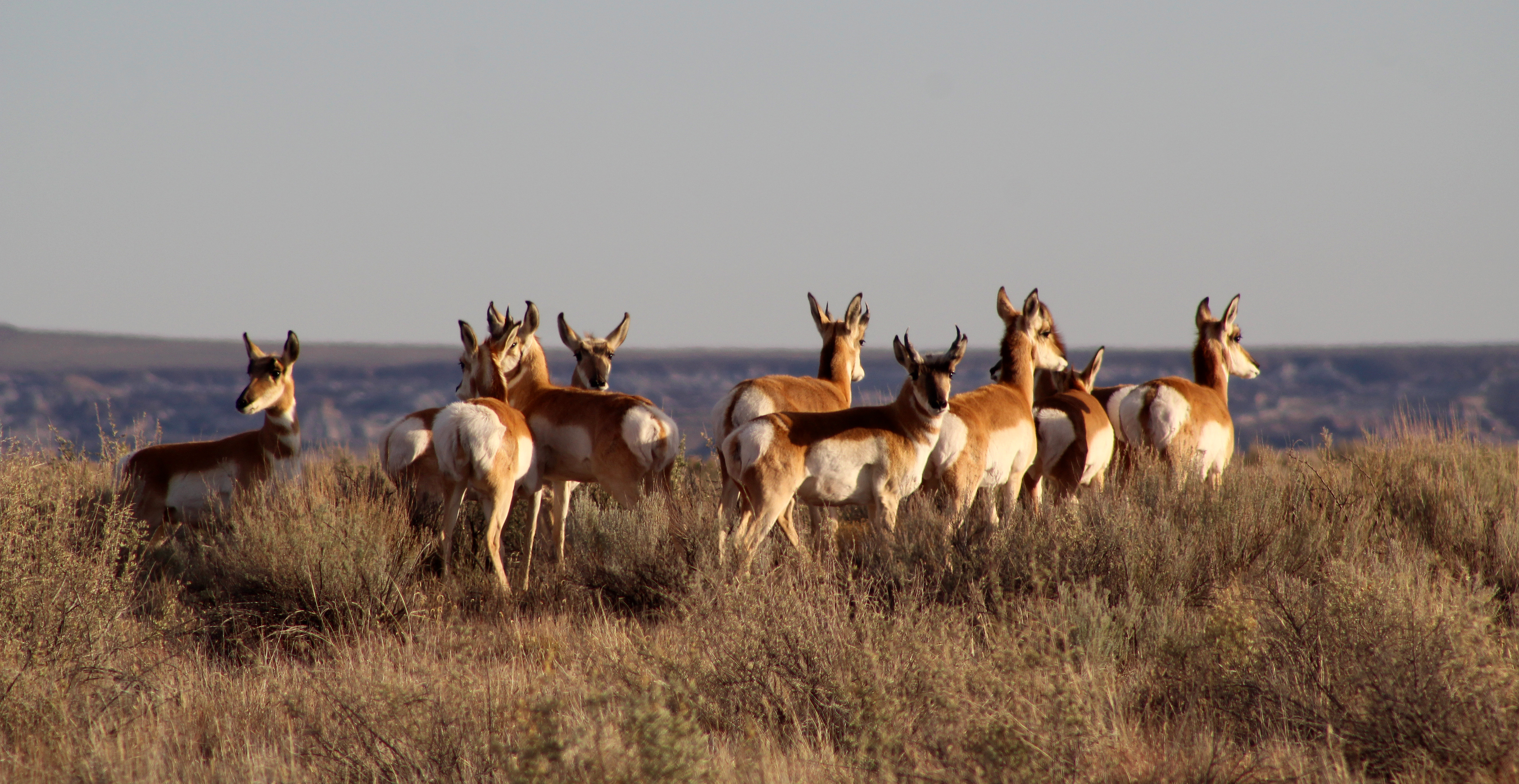
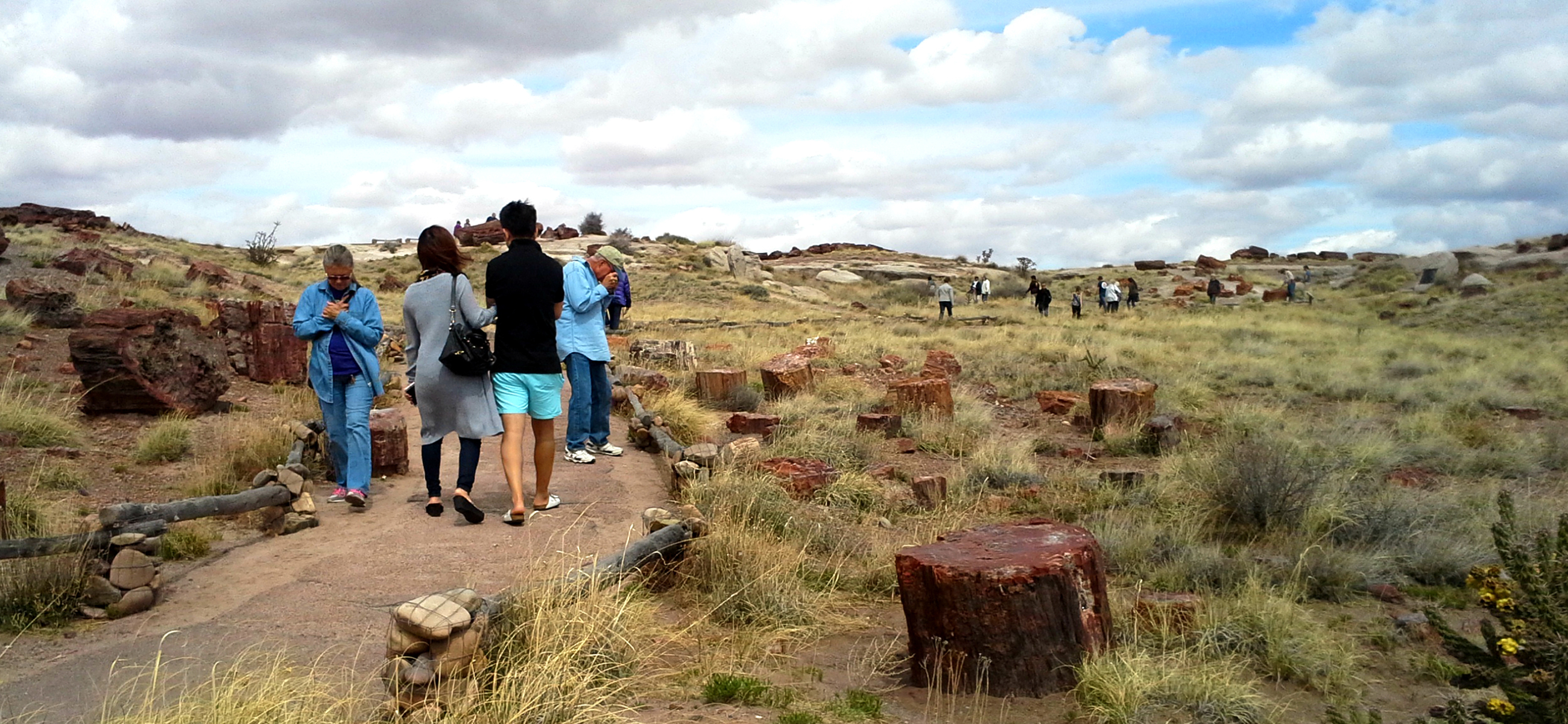
|
| Tours |
Count: 4
Off the Beaten Path: Billings Gap Overlook RouteThis hike takes you to a great viewpoint of the Billings Gap area between Blue Mesa and the landform to the east. The route follows the steep edge of Blue Mesa and offers views of badlands to the east and the broad grassy valleys to the north and south. The badlands’ blues, purples, grays, and whites seem to shift throughout the day and with the seasons. The summer monsoon adds a touch of green vegetation and wildflowers. Petrified Forest National Park North Audio TourThis driving tour takes you through the entire park with multiple stops and information in between from north to south. There is a south version, too. Each stop has an audio file that can be downloaded ahead of time. Petrified Forest National Park South Audio TourThis driving tour takes you through the entire park with multiple stops and information in between from south to north. There is a north version, too. Each stop has an audio file that can be downloaded ahead of time. Walking Tour of Giant Logs TrailAs you walk along the butterfly-shaped trail at Giant Logs, you will see some of the largest, most colorful petrified logs in the park. It is an opportunity to learn about how the logs were petrified and other aspects of Petrified Forest. |
| Articles |
|